










G&S SHOW SPECIAL
We’ve got your insider’s guide to North Dorset’s biggest event, packed with
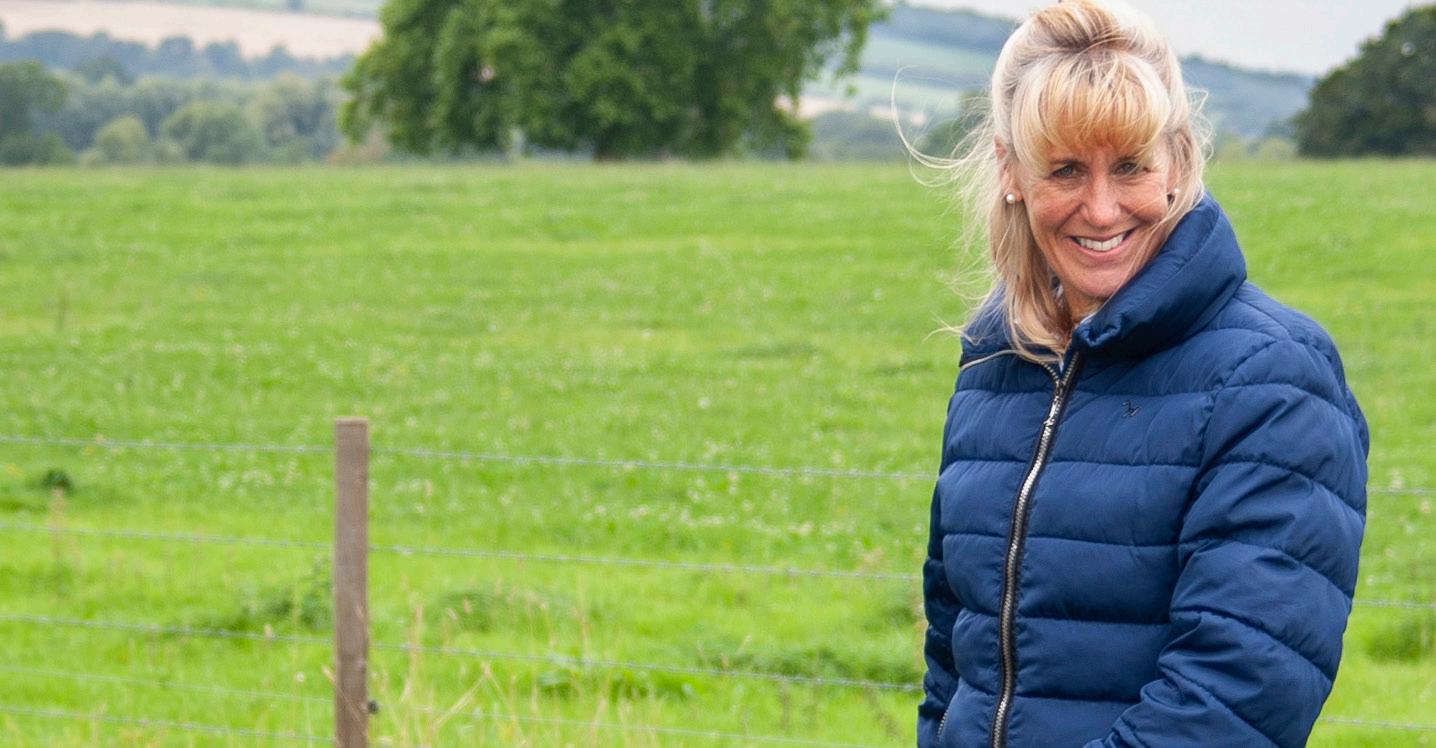
‘FLIP-FLOPPING IS KILLING CONFIDENCE’
Speaking to The BV ahead of the G&S Show, the conversation quickly turns to farming’s future – and the cost of continued political drift.
COMMUNITY NEWS AND WHAT’S ON
It’s all here – the news snippets, the letters, the what’s ons, the politics and the PUZZLES!
READERS’ PHOTOGRAPHY
We’ve given up. Eight pages. Fine.
A COUNTRY LIVING
We speak to the voice of the show, commentator Simon Ledger
9 to 5.30 Editor: Laura


FARMING
Didn’t expect to be including a column from Andrew in praise of Trump. But here we are. Also, the NFU’s Tim Gelfs wants to know exectly why we’re importing tomatoshaped water, and George Hosford is working out how to return a ley to productivity
As dog adoptions rise we assume dog rescue centres are safe – but they’re unregulated, and as one Dorset family learned, the reality can be distressing


This is our 60th edition – The BV is officially five years old. We launched in the middle of a global pandemic (because why not?), during that surreal, sweltering summer of 2020. The old Blackmore Vale Magazine had just closed for good. Courtenay and I were both newly jobless in the great pandemic clear-out, sitting on Rawlsbury Camp at midnight, wondering what on earth we were going to do. Courtenay had the idea (it’s literally all his fault).
A new magazine. Digital-only. Fast, beautiful, interesting, full of brilliant local people and proper journalism. I nodded enthusiastically. I had years of experience in digital publishing. We both ran our own businesses. We had four teenagers and a lot of ideas. How hard could it be?
Reader, I knew nothing. NOTHING. About publishing. And yet, somehow, here we are.
Five years on, and The BV reaches more than 350,000 people every month. We’ve grown far beyond our immediate North Dorset patch – we’re read across the rural heart of Dorset and beyond – and we’ve won some major national awards (not that we’re still beaming about being Regional Publication of the Year and Regional Website of the Year, obviously)
People do sometimes still confuse us with the printed paper which launched not long after us with a very similar name. For the record: we’re not them. Not connected in any way.
Though in a delicious twist, we do work with the legendary Fanny Charles – the long-time editor of the original BVM – who now sub-edits us alongside Gay Pirrie-Weir (let’s be honest, it’s like employing your own headmistresses. Great, but terrifying).
For all its award-winning polish, The BV is still built by just two of us at the sharp end – planning, writing, designing, photographing, publishing, wrangling inboxes and fixing typos at midnight (3am...) every month. But we’re never alone in it. The whole team is what holds The BV above the ordinary – and what a team it is: many of whom have been with us since the very beginning. Along the way we’ve collected a gloriously oddball mix of brilliant strangers who’ve somehow become some of our favourite humans. Writers, photographers, farmers, my beloved sub-eds, digital whizzes, wildlife nerds, food nerds, history nerds, opinionated columnists … they’re the shouty-butkind crowd in my WhatsApp and inbox every day. I’m genuinely honoured to work alongside them – and I think that affection and respect shines through in every single page. We care. About this county, and about telling its stories well. We’ve got some properly exciting things coming, but really, I’m just here to say: Thank you.
To every person who’s read us, shared us, shouted about us (and at us) on Facebook, forwarded us to a friend, or hunted down a story they once saw in issue 27 but can’t quite remember the title of. To every reader who emails us with praise, corrections, opinions, complaints – or cat photos (especially the cat photos).
And finally, a massive thank you to the hundreds of photographers who submit images every month. Choosing which make the pages is our biggest joy – and our biggest monthly row. We’re so sorry we can’t fit you all in. Truly.
The BV started as a wild idea on a hill. Five years later, it’s louder, braver … and somehow still just as scrappy behind the scenes. We’re incredibly proud of what we’ve built – and grateful to everyone who’s come along for the ride. Here’s to the next five years. And hopefully a bit more sleep.


by Rachael Rowe
As dog adoptions rise we assume dog rescue centres are safe – but they’re unregulated, and as one Dorset family learned, the reality can be distressing
When Adele Haine adopted a Romanian street dog through a Dorset rescue centre, she expected a tough adjustment –but not attacks on her children or the heartbreak of returning the animal after 18 months. As dog ownership hits record levels in England, thousands of us are turning to rescue centres. But few realise that in the UK, these centres are completely unregulated. Since 2008, the dog population has soared from 8.5 million to 13.5 million, and nearly a third of households now have a dog. Alongside this surge, the number of abandoned and unwanted dogs has risen – some due to changes in owners’ circumstances, others simply mistreated. Increasingly, people are adopting dogs from overseas, particularly Romania. While the majority of rehoming stories end happily, others are more complex.
Unregistered rescues
Incredibly, there is no requirement in Britain to register a dog or cat rescue centre – which means that anyone can set one up. Sadly, that means the number of unregulated centres in the UK is unknown, and the lack of regulation opens the door to vulnerable animals being mistreated. MP Richard Holden, who represents Basildon and Billericay, is calling for a parliamentary debate on the licensing of these centres,

which would bring higher standards and regulation into the sector. The petition, which has already attracted more than 60,000 signatures, supports the Animal Shelters (Licensing) Bill – a cross-party initiative cosponsored by Richard and ten other MPs: ‘I’m stepping up the campaign
Breeders, kennels and pet shops are all licensed, but animal rescue centres aren’t
to get animal shelters and sanctuaries licensed. In England, breeders, kennels and pet shops are all licensed, but animal rescue centres aren’t. That loophole has left some of our most vulnerable animals without protection.
‘In one awful case in Crays Hill, Essex, 41 dogs were found dead


at a so-called ‘rescue’. Because there’s no licensing scheme, the authorities had no power to step in until it was far too late.’ Here in Dorset, the picture is much the same.
A spokesperson for Dorset Council said: ‘There are no officially registered dog rescue centres in Dorset, because dog rescue centres are not required to be registered or licensed –there is no legislation governing this. Dorset Council supports dog rescue centres in helping dogs find suitable new homes, regardless of where the dog comes from, including overseas. ‘The rescue centres carry out welfare and suitability checks for new homes, and we expect dogs to be microchipped, spayed/castrated, health checked, vaccinated, wormed and behaviourally assessed. We use reputable rescue centres only, and we would not work with a rescue centre unless it is a registered charity.’
Romania has a very different relationship with dogs. Stray animals are widespread, and
there’s no government-funded sterilisation scheme to control the population. Instead, the state pays catchers around €200 per dog, creating a profitdriven system where animals are rounded up with poles and cages and taken to public shelters. If these dogs remain unclaimed after two weeks, they are euthanised. Some are rescued by charities and transported across Europe for rehoming. After basic assessments, vaccinations and neutering, they endure a fourday van journey to reach UK centres. Once here, they’re often placed in temporary foster homes to see how they adjust before adoption.
While there are lots of stories on the internet of dogs find a loving homes, when Adele Haine fostered and adopted a dog from Stour Valley Dog Rescue* in Shillingstone she was faced with a highly traumatised animal. Adele lives near the rescue centre in Shillingstone where she adopted her dog, and describes a near-constant backdrop of barking. The organisation, based in a small residential bungalow, reportedly houses up to a dozen dogs at a time.
Many rescued animals do settle into loving homes – but these dogs might be deeply traumatised, and it can take a significant amount of time. Some have never lived indoors, worn a collar or interacted with humans. Settling them requires patience, understanding and often some specialist support.
Volunteers tell us the dogs are routinely kept separated indoors to prevent pack behaviour. Concerns have been raised privately about the suitability of keeping so many animals, particularly those with a history of trauma or reactivity, in such close quarters in a domestic setting.
‘I fostered, and then adopted, a dog that we unfortunately had to return. He came to me straight from the ‘Happy Bus’

(a van used by the centre to transport dogs, in cages, from Romania to rescue centres). When a home couldn’t be found for him, we adopted him.
‘When you foster a dog you are meant to get 24 hour support and everything supplied, including veterinary appointments – but there was nothing, not even a tin of dog food. Ultimately, he was a street dog – reactive, unpredictable and increasingly aggressive. Within days, he started biting. He bit all of us, and after 18 months I asked them to take him back.
I became seriously ill and I didn’t have the strength to pull him off the children when he attacked them, so he had to go back. In the end, I said that if they wouldn’t take him I would have him put to sleep. We received no refund, and were later told he had been placed with another family.
‘The main issue is the lack of support when things don’t go to plan. These dogs are not really family pets. Some of them have never been in a house or worn
a collar: imagine trying to put a collar on a traumatised dog? The stress of their past – and the journey here – stays with many of them. I love dogs, but people don’t realise that Romanian rescues are street dogs and some will never settle in a house. I’ve heard of serious incidents, including fatal attacks, between dogs at the centre.’
The Dogs Trust is also calling for regulation of the animal rehoming sector.
New research conducted by YouGov on behalf of Dogs Trust reveals that the vast majority of the population (79 per cent) wrongly believe that the law requires rehoming centres to be inspected and licensed. Dogs Trust warns that this regulatory gap is putting the welfare of vulnerable animals at serious risk, and that without proper rules, rogue traders, backyard breeders and wellmeaning but unqualified individuals are all putting dogs at risk of neglect, illness and
even death.Owen Sharp, chief executive of Dogs Trust, said:
‘There are brilliant rescue centres doing incredible work in the UK – but without licensing, there’s nothing to stop someone with no training or experience setting one up – and potentially doing real harm.
‘Good intentions aren’t enough. We need laws in place to make sure all rescue dogs are safe, cared for and treated with the respect they deserve.
‘Without proper oversight, these organisations cannot guarantee that they are operating in the best interests of the animals in their care.’
Adele was unaware that some rescue centres are unregulated:
‘I had no idea – and this is not just an issue in one Dorset village. It’s a national concern. Something needs to be done before people get hurt.’
* Stour Valley Dog Rescue was approached for comment on these concerns, but did not respond.
• To sign the national petition click here.







by Laura Hitchcock
A devastating audit has laid bare a two-year collapse in financial control within Dorset Council’s health and safety programme – with £13 million spent largely off-book, 11 officers sacked, and possible dishonesty at the most senior levels.
The report, released last week by the South West Audit Partnership (SWAP), reveals deep structural failings in how the council handled urgent works to bring its buildings up to health and safety standards. It details how an interim team of staff, brought in after a 2022 internal audit highlighted compliance concerns, operated for nearly two years with minimal oversight. Budgets weren’t properly authorised. Contracts were awarded without competitive tender. Payments were made on the same day, with no checks. Charges included £300 paid for work which is valued at just £20.
The report mentions ‘governance failures across key operational areas ... significant non-compliance with Council policies, poor recordkeeping, and a lack of effective oversight’
Despite a Cabinet-approved £4 million budget in 2023, the total spend reached nearly £13 million by 2024 –without Cabinet re-approval, a business case or scrutiny from the council’s usual financial monitoring protocols. Some of the funding was moved from surplus reserves, without notice to councillors. The failings weren’t confined to poor project
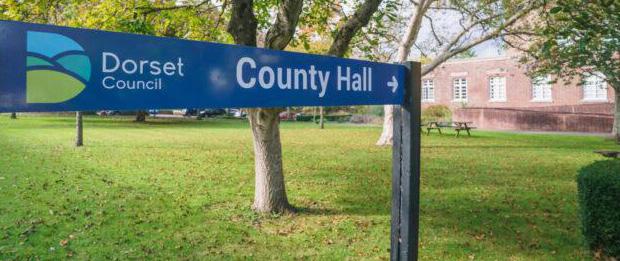
management. The investigation found breaches of the council’s Code of Conduct, including undeclared gifts and hospitality. It also raised concerns about the timing of key contract signings and decisions coinciding with personal connections and social events.
The council’s new LibDem leadership, in post since mid2024, says it acted swiftly once irregularities came to light. They ordered the SWAP investigation and also terminated the contracts of all 11 interim staff in the Place Assets & Regeneration team.
question why concerns weren’t more publicly raised during the election campaign – or whether earlier scrutiny might have stopped the overspend sooner. In a statement, interim Chief Executive Sam Crowe conceded that councillors ‘were not involved in the way they should have been at the time,’ acknowledging that oversight mechanisms failed at both officer and member level.
Leader Nick Ireland says that the failures ‘predate the current administration’ and has pledged transparency and reform. The interim posts ceased in September 2024 – just four months after the Lib Dems took control of the council in the May elections. Most of the questionable spending occurred under the previous Conservative administration, and the timeline suggests the new leadership acted quickly once the scale of the problem was understood.
Still, with red flags already visible by early 2024, some will
At its core, the report reveals what happens when urgency is used to justify opacity. The works were considered essential – and they likely were. But in bypassing proper process, the council not only failed in oversight, it may have wasted millions of pounds of public money in the process. Dorset Council says it is now implementing a robust action plan and is working to rebuild public trust. But the implications are broader than just one department. The failures exposed by this report didn’t happen in isolation – they relied on a system that wasn’t working. A public Audit and Governance Committee meeting is due in October. The reputational damage to the council – and how far it extends - may not be fully clear until then.
• See the key findings and link to full report here

































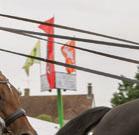
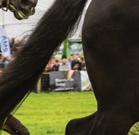
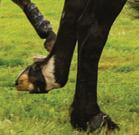









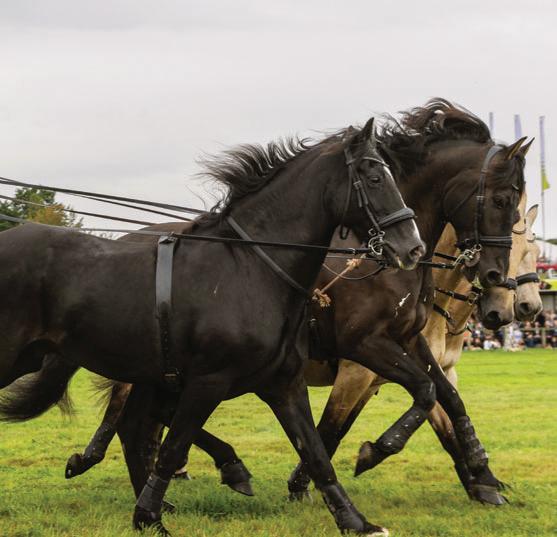

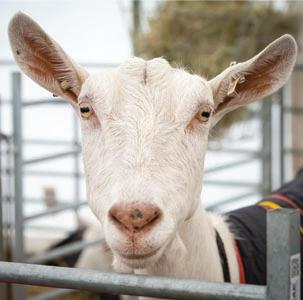



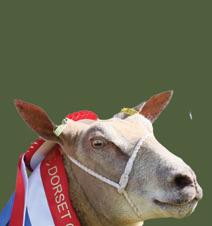














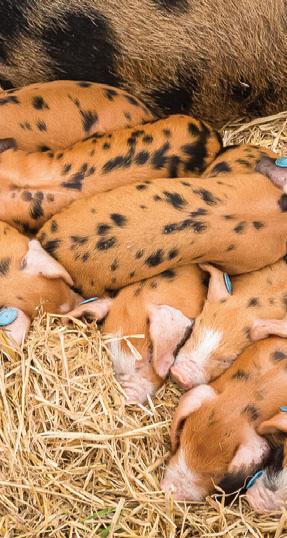

















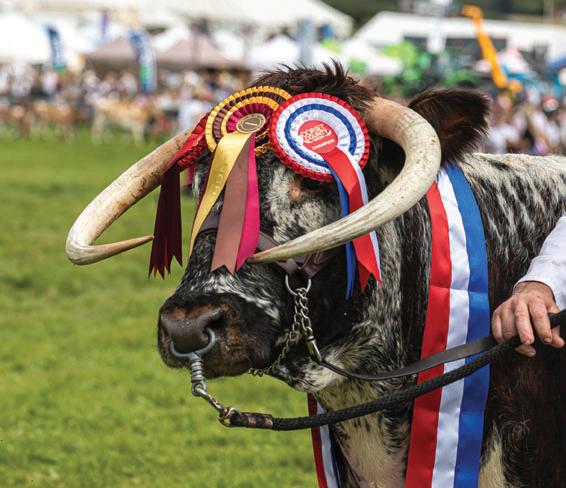
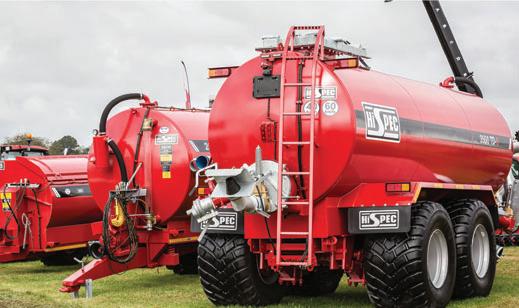














by Laura Hitchcock
Farming’s future demands clarity not chaos, says Minette Batters, as she warns of political drift, food insecurity and farmers close to walking away
Former NFU President Minette Batters is not known for pulling punches. As one of the country’s most prominent voices in agriculture – and a tireless advocate for British farmers – she has spent years pushing government after government to take the rural economy seriously.
She speaks to The BV as this year’s president of the Gillingham & Shaftesbury Agricultural Society, taking on the honorary role ahead of this summer’s G&S Show. But the conversation quickly turns to farming’s future – and the cost of continued political drift.
‘Uncertainty is the biggest issue right now. Farmers just don’t know what policy is going to hit them next,’ she says. ‘Morale has been knocked. There’s real worry out there.’
A sector in survival mode
‘We’re in a drought, but we’ve just had the wettest 18 months on record – it’s been absolutely extraordinary. I’ve never known weather like it, and I’ve been farming for 26 years.’
‘It has affected every sector: the arable sector is in huge difficulty, with half the amount of wheat being planted. Grass yields are massively down. And bovine TB just goes on and on ... you can be shut down, you can lose animals, and then the mental health pressures that naturally follow ...’
For many, she says, the pressure feels relentless – and national policy only adds to the stress.
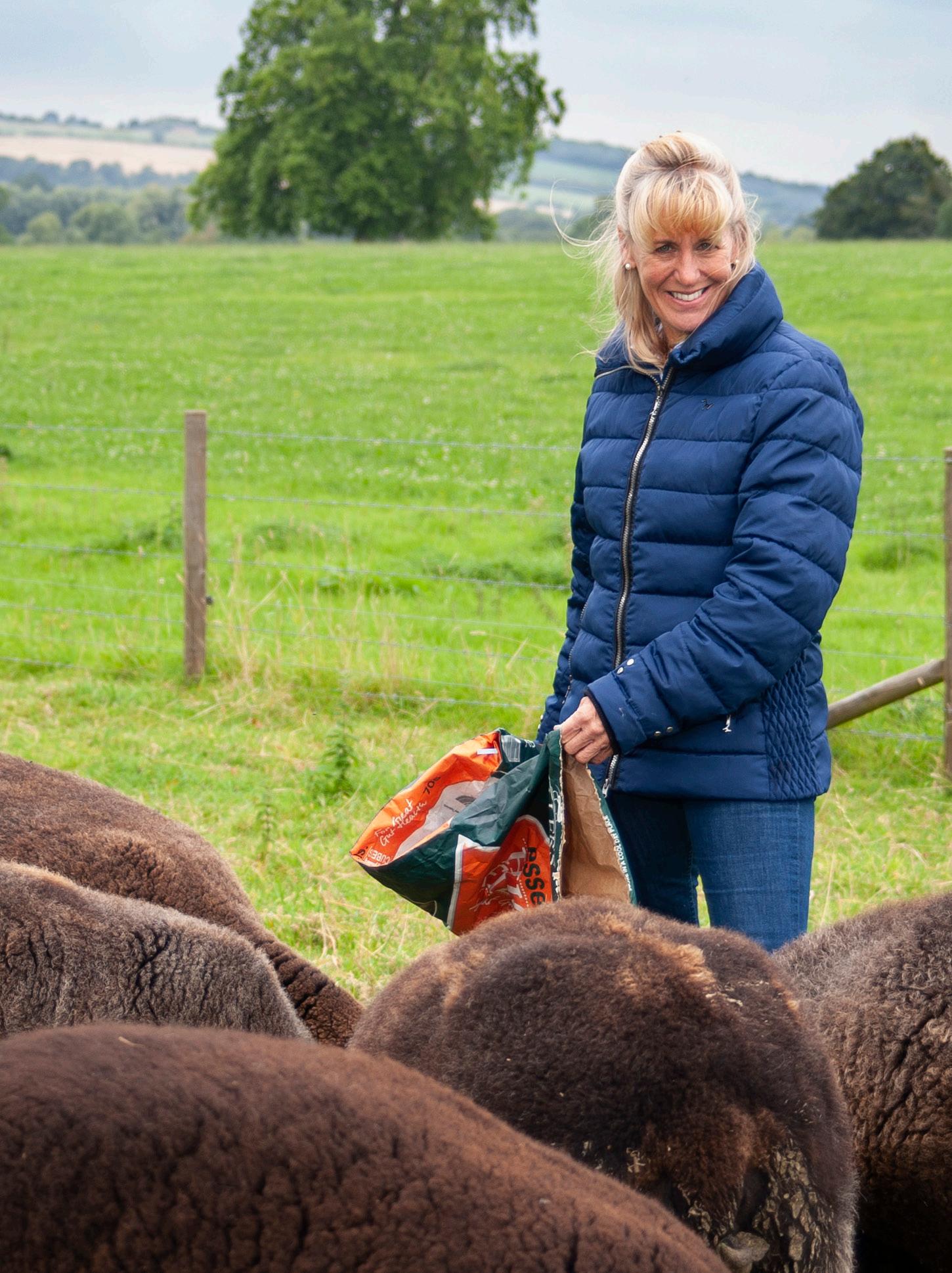
‘In 2018 we were told there would be “public money for public goods” – that food didn’t count, that producing food didn’t count.
We’ve had enough of being told to do one thing and then, at the last minute, it all changes
‘We’ve spent six years changing direction again and again. Just look at the Sustainable Farming Incentive: people were being paid not to farm,
and then suddenly they were being paid to grow wheat again.’ ‘It’s that flip-flopping that does the damage. We’ve had enough of being told to do one thing and then, at the last minute, it all changes.’
A plan for the long term Minette is currently chairing the government’s Review into Farming Regulation and Profitability, reporting directly to DEFRA. It’s a role she takes seriously – but with realism.
‘This can’t be another shortterm fix. Farming is a long-term business – you can’t chop and change every four years.
‘We need a 25-year plan. Something stable. Something that stretches beyond political cycles. Until we have that, we’re just firefighting.
‘We’re at a point now where there’s a real risk of large parts of the countryside becoming unproductive and people just walking away. That’s not being dramatic – that’s where we are. And we have to ask: “What do we want our rural economy to look like in ten years? What are we actually trying to achieve?”’
For years, Minette has campaigned for the public and
policymakers alike to take UK food security more seriously.
‘The message still hasn’t landed. People assume there will always be food on the shelves. But look at what’s happening – more than half of all fresh vegetables are now imported. We are exposed. We are vulnerable. And when geopolitical tensions rise, it’s our food system that will suffer first.
‘Cheap food comes at a cost. And we’ve got to stop pretending that it doesn’t.’
Despite the challenges, Minette remains hopeful – particularly about the next generation of farmers.
‘Young people have such a strong sense of purpose. I speak

to them all the time. They want to do the right thing – they want to innovate, to farm sustainably, to look after the land. They’re smart, they’re motivated, and they’re less burdened by the traditional structures.
‘But we have to give them a voice. We have to bring them in. Because without them, there is no future for farming.
‘We also need to make sure there are enough support services for them. This is a lifestyle, not a job – and when everything’s going against you, it’s easy to feel isolated. That’s why the agri shows, the local connections – that community spirit – is so important. It holds people up.’
Minette’s own farming journey began with eight rented acres and a small catering business to keep things afloat. Today, she is a tenant farmer, with a 300-acre mixed farm in Wiltshire, raising Hereford cattle and arable crops – and (until recently) dividing her time between that and relentless lobbying in Westminster.
‘You don’t do it for thanks. You do it because you care. Because it matters. I’ve had moments where I thought: what’s the point? But you carry on. You fight the next battle.’
She says that coming to this year’s Gillingham & Shaftesbury Show feels good, like a fullcircle moment.
‘It’s where real farming happens. It’s where you see the next generation stepping into the ring. It’s a space where farmers meet each other face-to-face – no emails, no lobbying, just people, livestock and community.
‘That’s the heart of everything.’


by Rachael Rowe
No skills, no STEM, no jobs: without local training, North Dorset risks becoming a housing corridor with no future for its young people
When the Government recently invited proposals for general further education colleges to become one of ten construction technical excellence colleges (CTECs), local MP Simon Hoare wasted no time in raising the profile of North Dorset in parliament. His request to the Secretary of State for Education for departmental support for a technical college was met with an opaque response from Janet Daby, parliamentary under-secretary of State for Education: ‘The area of North Dorset is well served by four neighbouring further education colleges and a range of independent training providers, who provide a broad range of technical and vocation provision.’
The response was dismissive: it may have ticked the box but it missed the point. The real question isn’t about how North Dorset fits on a national map of provision – it’s about the future of our local economy and our young people. Why is a technical college so important for North Dorset?
Councillor Val Pothecary has been working to get a science technical college in Gillingham for a long time. In June she raised the further education gap at a meeting on the economy at Dorset Council (see video below): ‘We have further education colleges in the south of Dorset but we have very little in the north. We have a fantastic high school in Gillingham, which draws in kids from all over. But they have nowhere to go for further education.
Why should all the further education budget go to the south of the county?
North Dorset does not currently have a technical college to bring skills to the local area. Students wanting to train in science, engineering and technical skills have to leave the area to train in Bournemouth, Weymouth and Yeovil. Many do not return, finding a new life in other parts of the region. So what difference would a technical college make to the North Dorset economy and future jobs market?
The economic resilience of a community lies in the strength of its local workforce, and while that relies on recruiting people to work, the aspect that often gets overlooked is training, which can maintain a sustainable supply of skilled workers.
Training and developing people in technology, science and engineering can be a game changer when it comes to attracting businesses to an area. The shortage of science and technology skills in Britain is estimated to cost the economy £1.5 billion a year. With local facilities available, regions can move from poverty and high unemployment to a thriving economy – technical colleges bridge the gap between the available workforce and the evolving requirements for the job market. In a rural area, a construction and technical college would open up a plethora of opportunities.
They can’t get to Bournemouth or Weymouth and back in a day.
‘Wages are lower in North Dorset. We need to encourage bigger and better businesses to come here. We have the land. If we could get technology businesses it would be great.
‘However, the skill shortage in the area is the reason they don’t come. If we could get really good quality further education resources here, we would get forward-thinking businesses – including those involved with STEM* and green energy. We are being told to build many more houses – but we need jobs as well.
‘Why should all the further education budget go to the south of the county? If we could have some of it here in the north, we could massively improve education and wages. It would change the landscape of North Dorset – we could have opportunities with things like robotics.
‘Not everyone wants to go away to study, and some don’t have the academic suitability. A local college
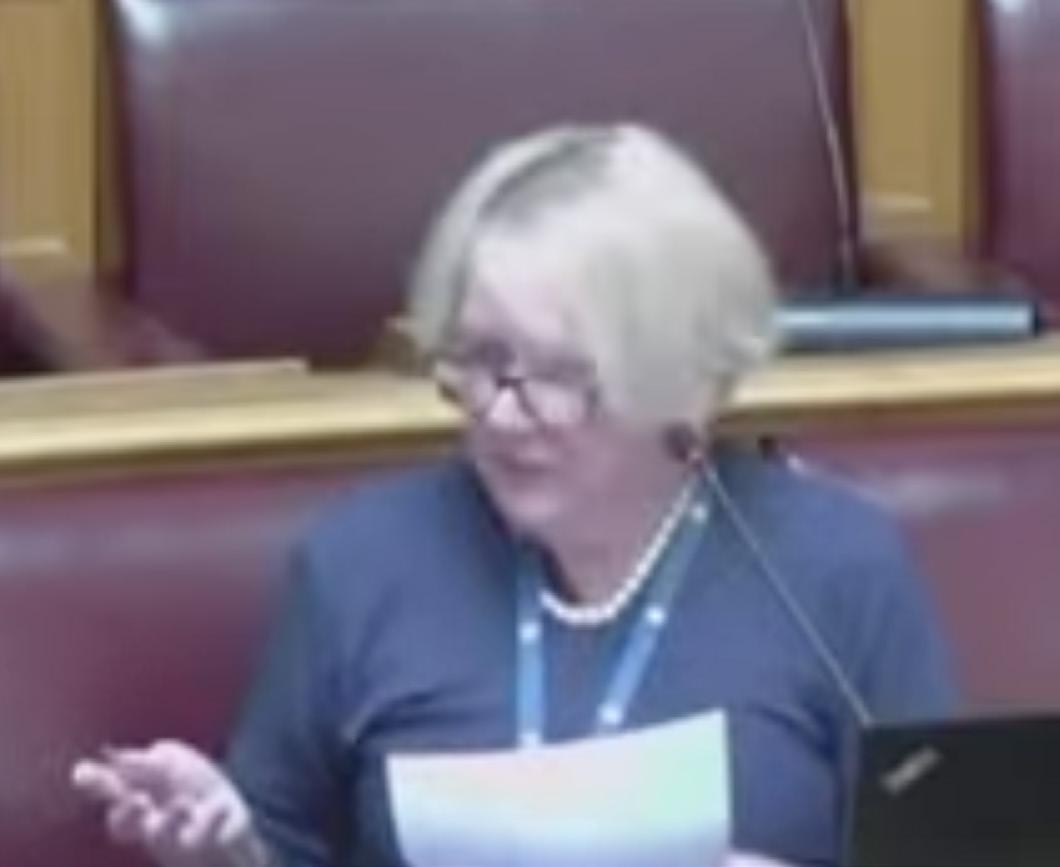

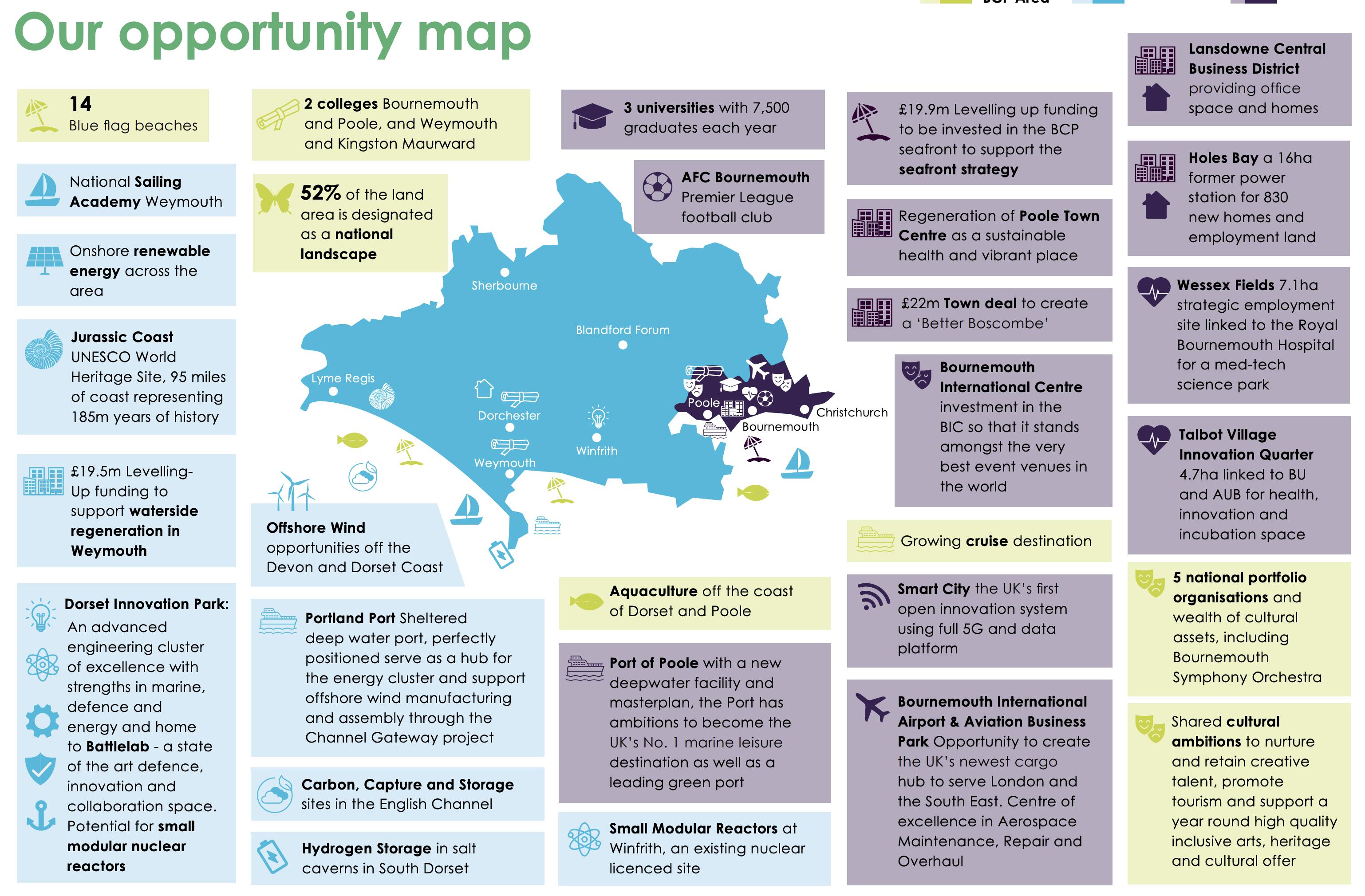
would make travel more affordable to our young people. If we can come up with the right plan and get a partnership with one of the universities, we can open up so many opportunities.’
The Dorset Local Enterprise Partnership has published a report on its strategy for economic growth via skills improvement in Dorset** to meet the critical gaps in STEM subjects. Published in March 2025, the report focuses on areas surrounding higher and further education colleges: there is absolutely no mention of North Dorset in the paper. This misses the opportunity to spread skills training and make it more accessible. One glance at the ‘opportunities map’ for development shows a sharp cluster of options in the BCPO area, and a significant gap anywhere further north of Dorchester. Cameron Shaw is 16, from Sturminster Newton, and is about to go to Yeovil College to study automotive engineering: ‘I’ll be in further education and then hopefully get an apprenticeship. It is – and isn’t –easy to get an apprenticeship at the moment: there are lots of places offering them, but the competition is very high.
like Stur ... well, there’s not a lot in Stur. I have my own transport and the college provides support with fuel costs.’
While Cameron does not think a new college in North Dorset would make a difference to his own personal situation, he can see the value for those who don’t have transport, for example: ‘It could be good – people who don’t have transport have to spend four hours on a bus getting to Yeovil and back each day.’
People who don’t have transport have a four hour commute on a bus to Yeovil and back each day
Robert Boyle, he of Boyle’s Law and one of the founding members of the Royal Society and a pioneer of modern science, spent much of his life in Stalbridge. In 2027, North Dorset will mark the 400th anniversary of his birth – a timely opportunity not just to celebrate his legacy, but to reignite the area’s scientific spirit. What better tribute than to invest in the next generation of innovators? A technical college – the Robert Boyle Institute? – in the Blackmore Vale wouldn’t just fill a skills gap – it could become a lasting legacy of scientific excellence, rooted in the very landscape that shaped one of Britain’s greatest scientific minds. * STEM subjects are science, technology, engineering and mathematics
‘There’s just more going on in Yeovil – more businesses, more options. Compared to somewhere
** Click to read the full Framework for Economic Growth for the Pan Dorset Area report

by Laura Hitchcock
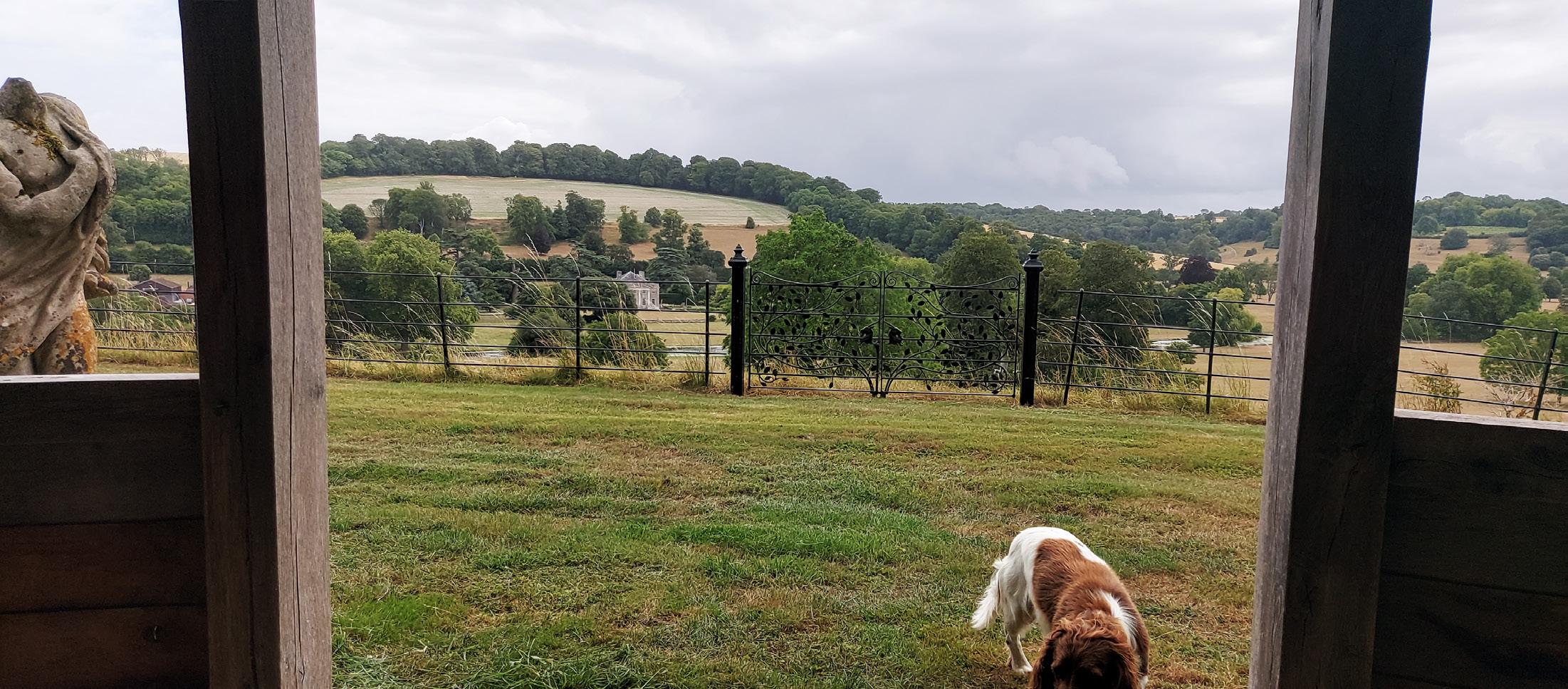
Wessex Internet founder and rural champion James Gibson-Fleming MBE says true service is just being part of something bigger than yourself
He didn’t expect an MBE. And he’s quick to say he didn’t earn it alone. But for anyone who’s crossed paths with James Gibson-Fleming – in a hospice boardroom, a fibre field trench, or a Remembrance Day service – the award probably came as no surprise.
The citation – “for services to rural communities in Dorset” –barely scratches the surface of a career that spans more than 35 years of voluntary work.
‘Of course it’s an honour,’ he says. ‘But it’s really a reflection of the people I’ve worked with – none of these things are done alone.
‘The thing is, my father died when I was 22, and I stepped into his shoes. The family has been here since 1781, and I rather just get dragged into stuff because people expect you to do it. But I’ve always been very happy to – I treat voluntary work and business work in the same bracket. I don’t count the cost of ‘pro bono versus paid’ or anything else. I think there
is a duty, if you’re born lucky, to do what you can to help your local communities. I’ve always tried to do things where I felt I could make a difference. Not necessarily rattling a can, but more using my business acumen to make a place more effective and achieve more.’
Among his many roles, James spent 35 years on his parish council, chairing it for much of that time. At a national level he served on various country landowner committees in the 90s: ‘I think it’s important not to let any of these things get too much. I have always tried to avoid being chairman!’
‘You meet incredible people doing extraordinary things, often very quietly’
For 36 years he has served as a trustee of the Talbot Village Trust, which gives away more than £1 million a year to good causes. He played a key role in establishing Cancer Care Dorset, and as chairman he oversaw its merger with Joseph Weld Hospice to form Weldmar Hospicecare Trust. ‘That was a really important moment,’ he says. ‘Two brilliant local
organisations coming together to form something even better – a hospice charity with real strength and resilience.’
King’s representative
He explains that the merger wasn’t just financial, but deeply strategic. ‘It allowed us to create a single, unified hospice service for Dorset, with proper clinical governance, long-term planning, and the ability to recruit and retain high-quality staff. When you’re dealing with end-oflife care, that stability and continuity matters hugely.’
He served as Vice LordLieutenant of Dorset for 14 years – first under Val PittRivers, then under Angus Campbell. ‘It’s a fascinating job,’ he says. ‘You get to represent the monarch at everything from Remembrance events to factory openings. There’s a lot of behind-the-scenes support too – helping charities apply for honours, for example. You are the King’s representative in the county, so it’s your responsibility to be there when a royal visit isn’t possible.
‘And it did give me the chance to see all corners of the county. You meet incredible people
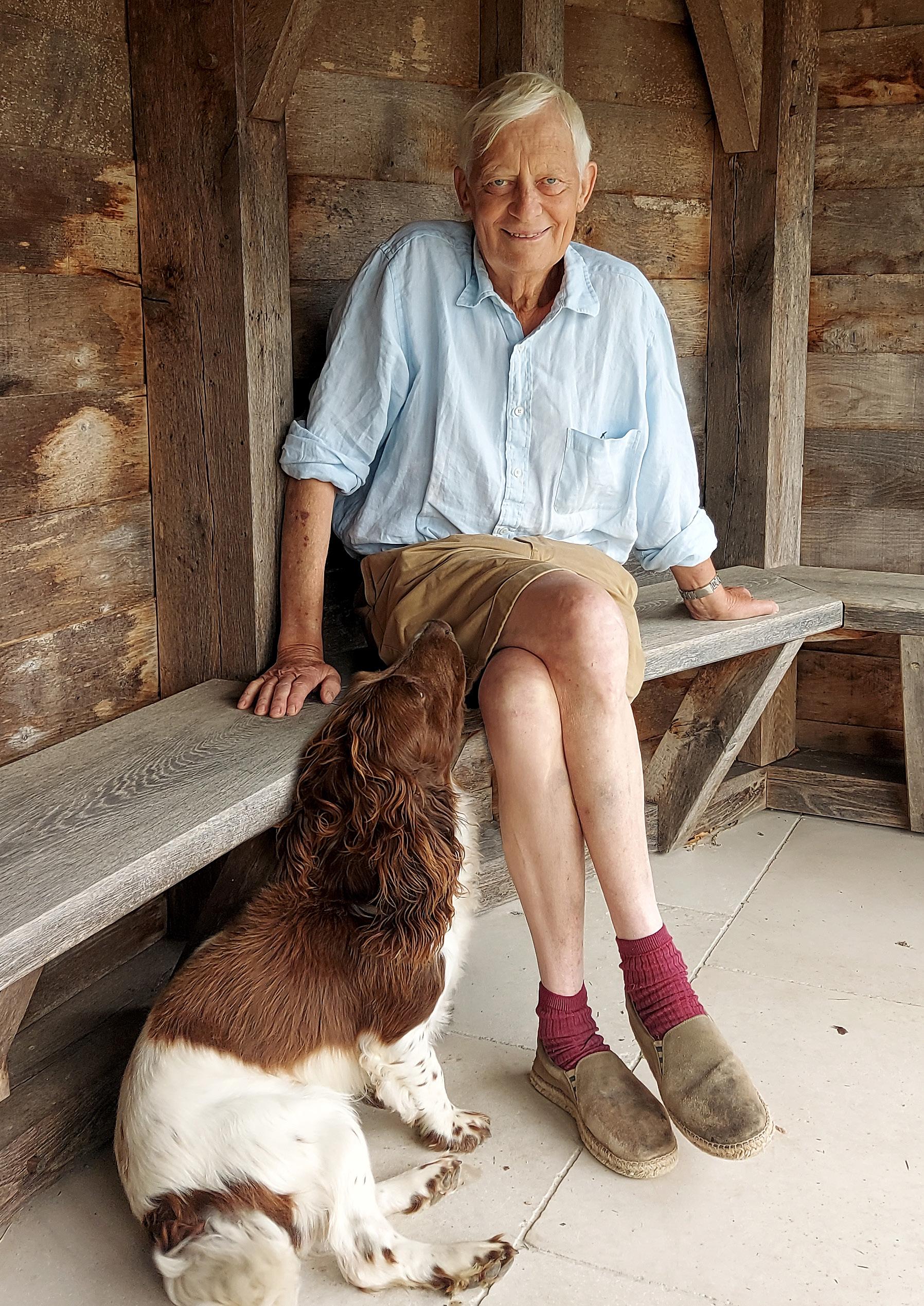

doing extraordinary things, often very quietly. That’s something I’ve always admired.’
But arguably his biggest contribution to Dorset life has come through broadband. James founded Wessex Internet in 2010, out of a frustration that will sound familiar to many rural readers.
‘We couldn’t get internet to the farm office. So we got a couple of wifi dishes, pointed them at each other over a hill, and bounced a signal across. It worked. Then a neighbour asked if they could use it too. And another. And suddenly it wasn’t just our family and friends!’
What began as a wireless workaround quickly grew.
‘We started trenching fields, laying fibre ourselves. Because nobody else would. And we knew we didn’t want to go the usual route, following roads –that’s our advantage. We know how farmers feel about their land, and we built something based on respect for that.’
Today, Wessex Internet employs more than 360 people and has brought fast, reliable broadband to more than 13,000 rural homes and businesses.
‘It’s not about the speed,’ James says. ‘It’s about the opportunity it brings. If you work from home, run a business, have kids doing homework ... decent internet isn’t a luxury. It’s essential. Rural areas deserve the same chance as anywhere else. That’s always been the aim.’

grounding,’ he says. ‘Whatever else I do, I’m a farmer. I love the land. And I think that rural resilience – that ability to find solutions, to get on and make something work – is central to everything I’ve done.’
The MBE, he says, was unexpected. ‘You get a letter saying you can’t tell anyone, and my first reaction was shock. Then you think about everyone who’s helped you get there. Because none of it happens in isolation.
That’s not service. That’s just being part of something
James remains closely involved in farming too. ‘It’s my
‘It’s not something I ever set out to get. But I’m touched. And I hope it brings a bit of spotlight to the importance of rural communities – the need to invest, to innovate, to value what we have.
‘I’m incredibly proud of Wessex Internet – that’s what I’d like to be remembered for. It’s changed people’s lives.
‘And it’s not just what we’ve built, it’s how we did it –community first, always.’
He pauses for a moment, gazing out across the valley to Ranston, the house his family have called home since 1781.
‘But my passion is this place, you know. It’s about leaving it better than I found it – on my watch. And that changes with time. We aren’t the enemy of the countryside. I believe we’re its best guardians – its trustees.
‘If you’re lucky enough to live in a place like this, you want to give back. You have to give back. And I’ve always felt that if you’re in a position to help, you probably should.
‘That’s not service. That’s just being part of something.’



by Rachael Rowe
Okeford United 1929. All images courtesy of
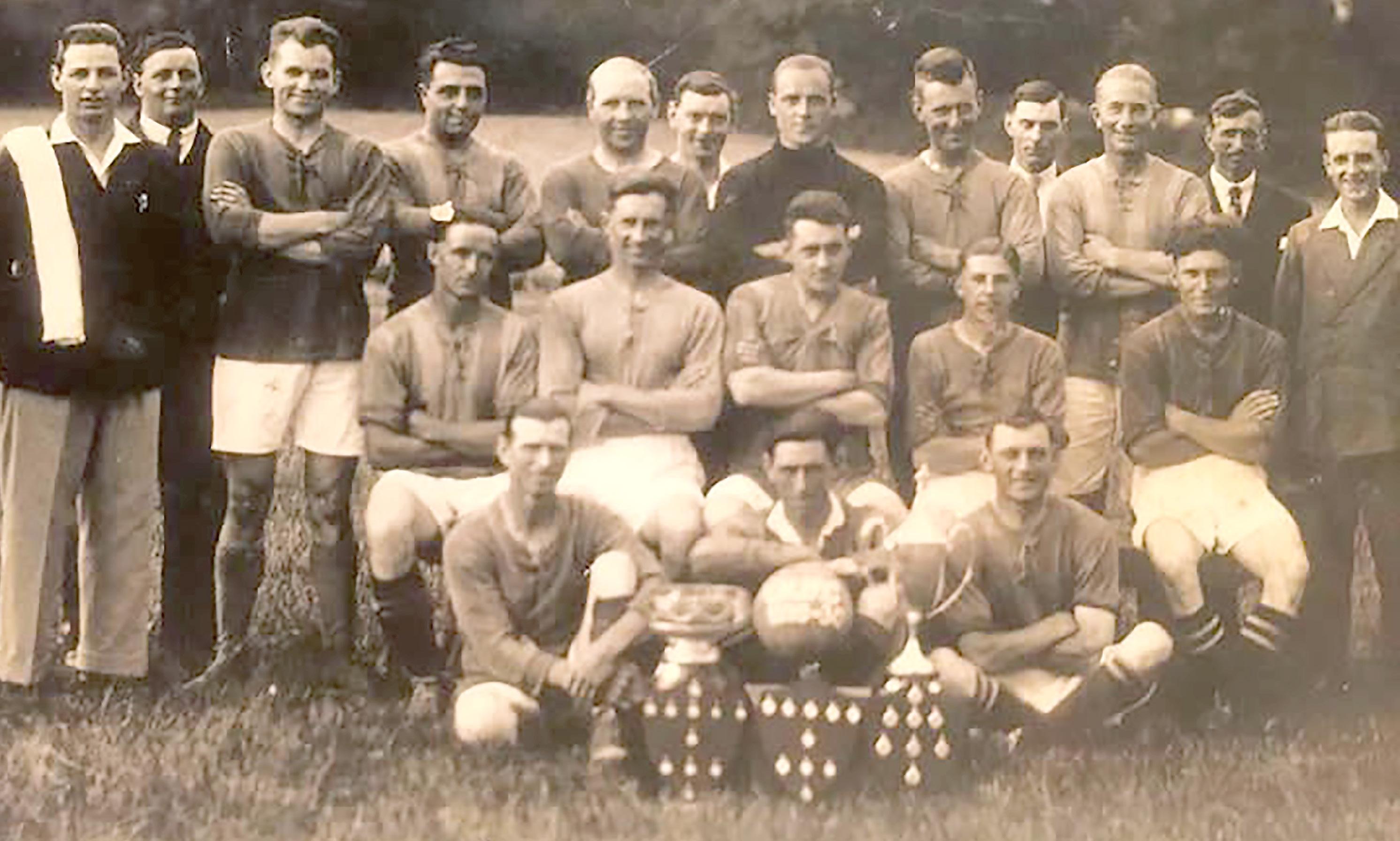
Okeford Fitzpaine’s team marks 125 years of village football, dairy roots and generations of families who have played for the love of the game
When a village football team was formed in 1900, Okeford Fitzpaine was right at the heart of the local dairy industry. The main employer in the village was Hill View Dairies, where new hires began as ‘Butterboys’ – workers from dairies began playing football as a team, and these founding members gave the club its nickname, The Butterboys. Steve Corben started playing for Okeford United Football Club when he was 15: he’s now chairman, after 49 years involvement with the club.
‘Willie Pearce, from the milk factory, started the club with the Reverend Phillips,’ Steve says. ‘The Pearce family gave us a donation when Willie died in 1989 – we bought a cup in his memory, the Pearce Trophy, which we still award now to the Player of the Year.
‘There aren’t many football clubs in Dorset that have been running as long as we have. Some have folded, and others have stopped and then started up again over
the years. But there has always been a football team in Okeford Fitzpaine for the last 125 years –it was only disrupted by war.
‘Years ago, if you lived in a village then you played football, cricket or skittles. It was a way of getting out to places, especially if you had no transport. Every village had a team, even tiny places like Hilton. If you lived in a village, you played.’
During the First World War, many of the Butterboys joined up to fight for their country. In the club’s pavilion, a team photograph taken around 1910 is on display. Sadly, of the 15 players in the photo, many did not return: the village lost 19 men to the war, and many of them would have been Butterboys. In 2024, a memorial was created by local historian Andrew Vickers on Castle Lane to commemorate all the Butterboys who died.
‘I think the reason Okeford has kept going is that there has always been a hardcore group of people. The club began playing in the Shaftesbury and District leagues up until the 1930s,’ says
Steve. ‘After that, they played in the Dorset leagues. One of our most famous players was Harry Osman. Born in Hampshire in 1911, he grew up in Okeford and started playing football here in 1931. He played for Dorset, and went on to play for Plymouth Argyle and Southampton – he was

Southampton’s top goal scorer in 1938. After the war, Harry became the manager of a non-league Winchester, and that’s where he spotted Terry Paine, who went on to play for England.
‘We’ve had teams that have won the league, and been runners-up. For two or three seasons Okeford played in the Dorset Senior Club –the top league in Dorset.
‘The best team we ever had in Okeford was probably in 1984. They were the strongest.’
Okeford didn’t have an individual manager until the 1970s, so everything was decided by a weekly committee meeting in the dairy building. There have inevitably been lots of changes over the years, and Steve has an archive of the old records:
‘As you go through the old meeting minutes, you can see the details right down to the price of goal nets in the 1930s.
‘They wrote down the turnover, of course, and they had to buy all the kit. Today, kits are cheap and massproduced – I can order it, with the printing, and it will be here in three days. But in the 1970s, Okeford players wore a cotton shirt – if you got wet in the rain, it was heavy! No one had sponsors back then, it wasn’t something people thought about. I don’t think it was even allowed.
‘I have some old football boots, with steel toe caps – and they are harder than my work boots! If you hit someone in the shin – and there were no shin pads back then – you could break a bone.

‘We used to borrow the ball when I was a kid in the late 1960s, and we had to return it – they had just one leather ball. I have just ordered 60 training balls for the coming season!
‘In the 1970s a match ball would cost £20, and you treasured it, because that was a lot of money. Now we always have two match balls. Another thing is that today, the players do a serious warm up before playing. We never used to do that!’
After the Lionesses’ tremendous success in the 2025 Euros, is there an opportunity for Buttergirls at Okeford Fitzpaine?
‘Okeford had a women’s team between 1996 and around 2004. Women’s football is a different game to run – someone would need to take it on, and it would need to be the right person. But Okeford would welcome any team.’
Two years ago, Chris Chaffey –Okeford’s long-standing player, youth team leader, committee
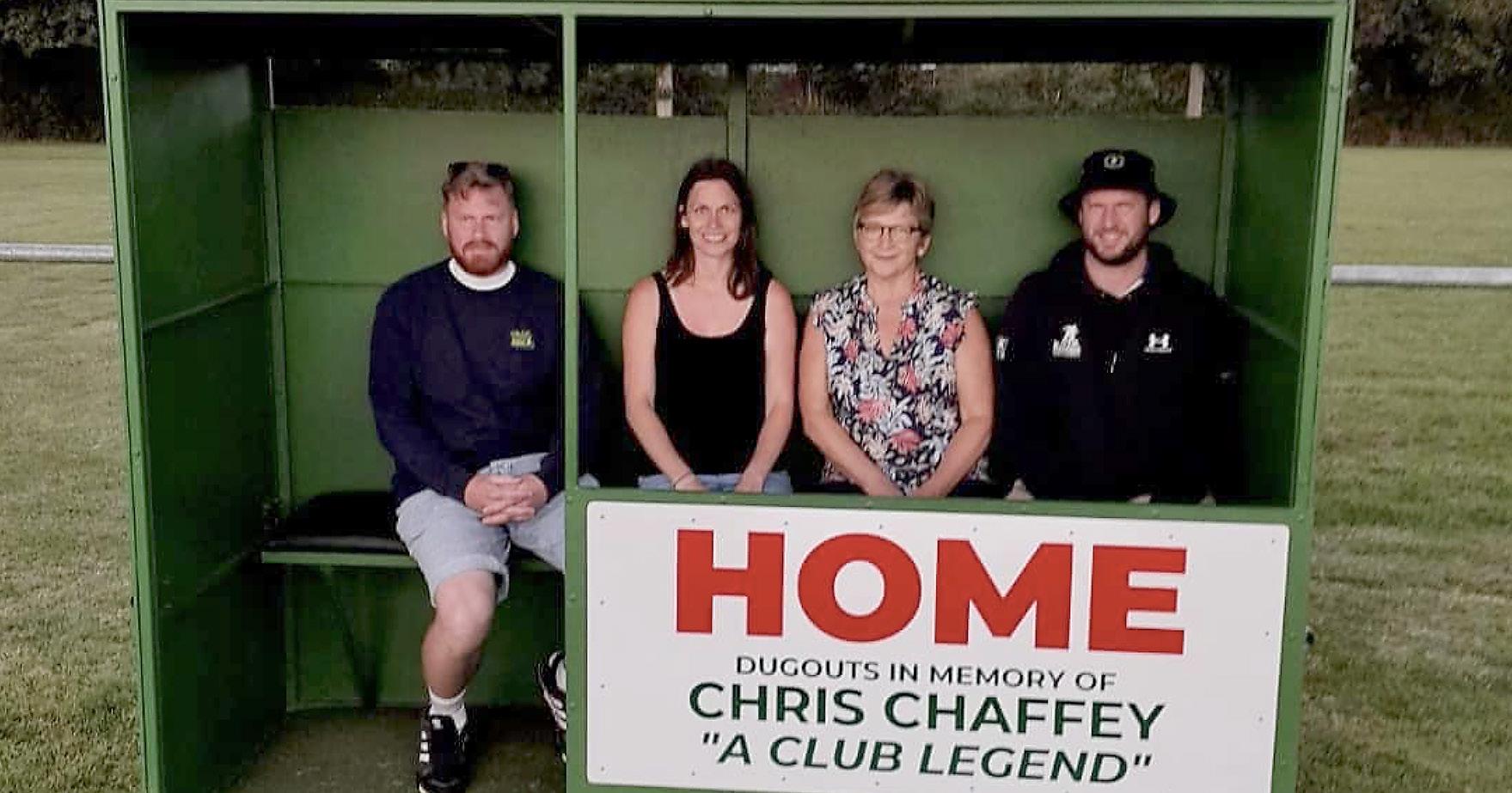
member and team manager – died suddenly after nearly 50 years of service to Okeford United. He had been in the middle of refurbishing the match day dugouts, part of the voluntary work he carried out for decades. After his death, past and present players and club members came together to finish what he’d started. The completed dugouts now bear his name.
On 16th August his family will host a special event in Chris’ memory at the football ground on Castle Lane. A veteran Okeford team will play the Dorchester Devils. Chris’ son Olly says: ‘It’s a charity event to support The Brave & Determined Company, a local mental health charity that’s already helped more than 240 people to access life-saving counselling.
‘We want to to not just raise funds, but also raise awareness – to let people know they’re not alone, no matter who they are or what they’re going through.
‘We want to bring people together, see old friends they may not have seen for a while, and know that being around others can help us all feel better.
‘As a family football club that’s been part of the local area for 125 years, this club is important to so many people. I started playing for Okeford when I was six, right through to the adult mens’ team along with lifelong friends and family members.
‘Okeford has seen generations of families play for the club – and continues to do so.’






by Courtenay Hitchcock
Diagnosed at 47, Matt Riggs is tackling a 45km Inca Trail trek with Parkinson’s for company, one high-altitude step at a time
‘I was expecting something else,’ Matt says. ‘Parkinson’s wasn’t even on my radar.’ It took nearly two years for Child Okeford resident Matt Riggs to receive a diagnosis. The symptoms crept in gradually – hand tremors during kickboxing, aching shoulders ... ‘sometimes you think your legs feel a bit funny, so you you start wondering what’s wrong with you. You know something’s not right, but it’s hard to pin down,’ he says. Parkinson’s is notoriously difficult to diagnose in younger people: only around 2,000 people in the UK have what’s known as youngonset Parkinson’s, diagnosed under the age of 50. Matt is just 48.
Move it
Once diagnosed, he decided not to stand still. Instead, he and his sister Caroline signed up to trek the Inca Trail in Peru this September – 45km of steep, high-altitude terrain that ends at the ancient site of Machu Picchu. ‘It’s not Everest,’ he says. ‘But it’s high – we’re talking around 4,800m at some points. And the steps are brutal. The Incas really liked stairs.’
For someone living with Parkinson’s, even small physical challenges can be unpredictable. ‘Some days I wake up and I feel fine. Other days, my legs feel heavy, or I’m off balance. That’s part of the challenge – getting up and doing it anyway.’
To prepare, Matt is focusing on what research increasingly suggests is the most effective way to slow the progression of Parkinson’s: exercise. ‘There’s no cure. The drugs just mask the symptoms. But they’ve found that intensive physical activity can actually slow it down. That’s what I’m hanging on to. I go to the gym twice a week, and I work on strength and balance. I’ve been seeing a physio once a month, just to keep me moving: I get stiff in my hands, shoulder and back, and they just iron out the creases, allow me to keep going.
‘It’s about staying upright, literally. You feel this pull, like Parkinson’s is trying to drag you forwards and down, and exercise helps you resist that.’
He also tries to keep running, though it’s getting harder: ‘I tried to do Parkrun recently and found I couldn’t run more than about 200 metres without needing to stop. That was a bit of a shock – I used to be able to run 5k easily.’



Do the hard things
Matt still works at a local tech company in Blandford, balancing work pressures with family life – he has two daughters – and his commitment to raising awareness. ‘There are more than 40 symptoms of Parkinson’s – it’s not just tremors. There’s anxiety, depression, fatigue, even motivation itself – the part of your brain that produces dopamine is under attack. That’s what makes it such a tough disease to explain. It takes hold slowly. It’s the fastest growing neurological disease in the world, and it’s still underfunded and widely misunderstood.’
Matt has joined Park Life, a Dorset support group for people with young-onset Parkinson’s. ‘We meet every two months in Wimborne. It’s a good way to talk honestly about what we’re going through – the mental and physical side. You meet people in all stages. Some have lost relationships. Some can’t work. There’s real fear and stigma out there. So part of the reason for us doing the trek is showing that there’s still hope. You can still do hard things.’
Matt is also clear-eyed about the wider purpose of the trek: ‘We’re covering all the travel costs ourselves, so every penny raised goes straight to Parkinson’s UK.
‘There’s not been a major breakthrough in Parkinson’s treatment for many, many years,’ he says. ‘Nearly everyone’s on the same meds as me, and they’ve been used for years. They don’t slow the disease down – they just mask the symptoms. And as things get worse, you end up taking more just to keep going.’
His hope – and the focus of his fundraising – is that real progress might come soon.
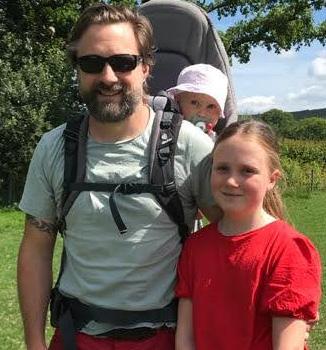
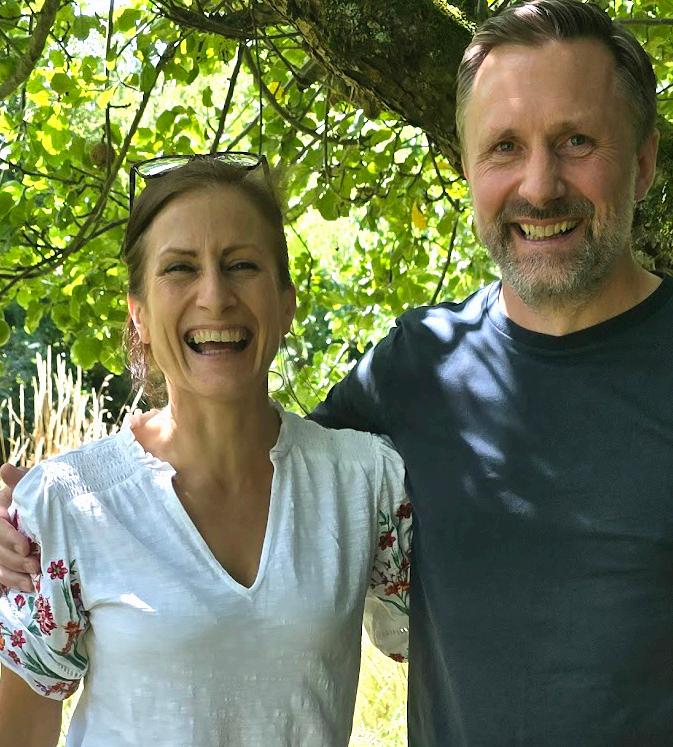
‘They are developing other treatments, but we’d love to see something that actually stops the progression. That’s the goal. But it’s underfunded. The profile is low.
‘I think sometimes people assume because Parkinson’s doesn’t kill you straight away, it’s not urgent. It creeps up on you – there are people out there like me, who you could meet me and think there’s nothing wrong with me quite easily. But others who are more advanced literally can’t get out of bed, can’t feed themselves, can’t wash ... it really is bad when it gets to those stages.’
That’s why he’s so keen to support charities like Parkinson’s UK and Cure Parkinson’s. ‘They direct money into research. Into finding a cure. And they provide Parkinson’s nurses, which makes a huge difference. It takes pressure off the consultants. You’ve got someone you can call for advice, who really knows what you’re dealing with. That kind of support matters more than people realise.’
Caroline, who will join him on the trek, says it’s been inspiring to see how Matt has channelled his diagnosis. ‘Action is the antidote to despair,’ she says. ‘That’s what this is – not giving up, not giving in. I’m incredibly proud of him.’
‘It’s just one step at a time, isn’t it?’ says Matt. ‘I’m not going to pretend it’s easy. But you can’t focus on the end point. You have to look at what you can do today – and then do it.’
• Support Matt and Caroline’s Inca Trail fundraising trek for Parkinson’s UK via the Matt Riggs JustGiving page here



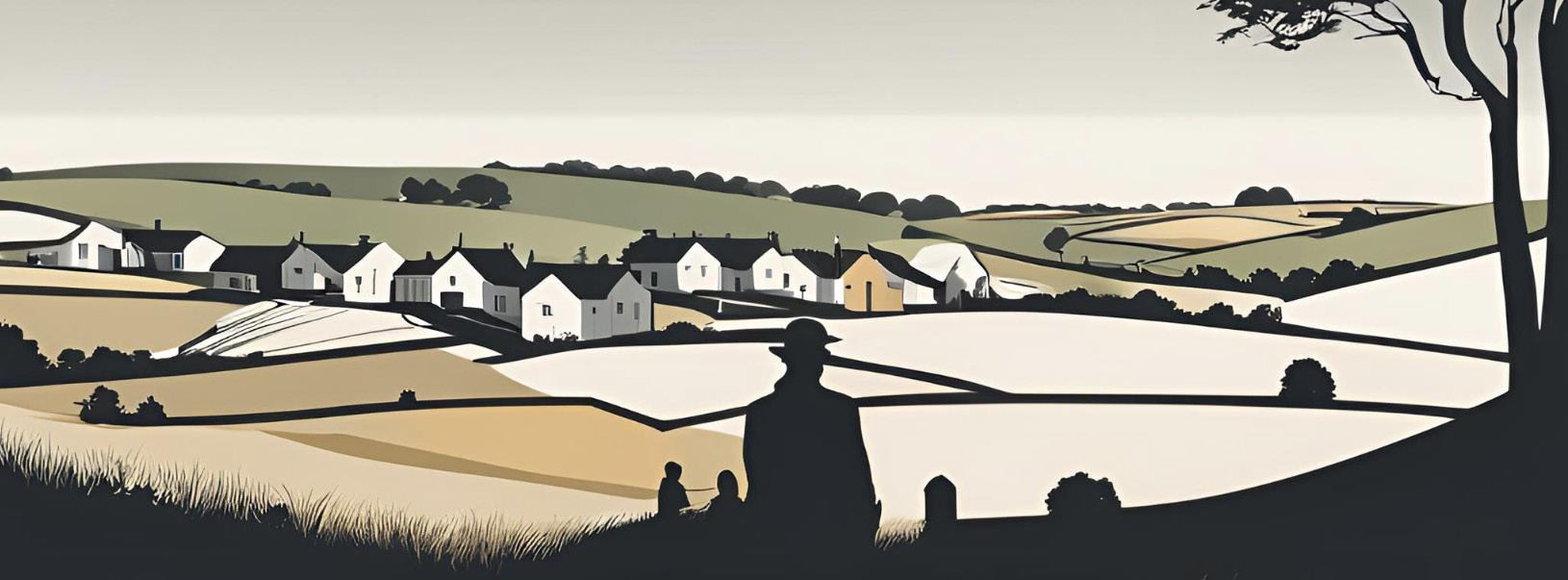
The Dorset Insider is a no-holds-barred column pulling back the curtain on local affairs with sharp insight, unfiltered honesty and the occasional raised eyebrow. Written by a seasoned parish councillor who prefers to remain anonymous (for obvious reasons), it cuts through the noise to expose the frustrations of grassroots politics, and say what others won’t. Rest assured, their identity is known – and trusted – by the editorial team. Expect opinion, candour and a healthy dose of exasperation ...
“Come and hear about the Local Plan,” they said. “At last!” I thought. Now I can deal with the good, the bad and the frankly ugly news following the Government’s directive on planning and its impact on my patch in Dorset.
A crowd of councillors piled into Dorchester to hear the news from the council staff. What is the collective noun for a group of parish councillors? (A wrangle? A mutter? A grievance? - Ed) We have all been waiting for information: parishes need to manage the impact of yet more houses on top of what they have already agreed.
I think it’s fair to say that every single councillor in the hall was waiting to find out exactly how the plans would impact their area –parish councillors will have to manage the news. Immediately, the entire presentation felt like a ‘slopey shoulders and hands-tied-behind-backs’ job. From the start, Dorset Council said it wanted our help with the consultation. Hard when you don’t have the details. Most people are aware that the housing targets have doubled under the Labour government. Where Dorset’s obligation was to build 1,700 homes a year, that has increased to 3,283 annually. Where there were plans for 25,000 houses – which seems enormous – there’s a gap, and a further 25,000 need to be planned into the system to make 50,000 additional units in the county by 2040. Already, many of us turn a corner on a familiar road to be faced with unexpected concrete and building sites springing up in the countryside.
Well, it’s about to get far worse. While brownfield sites will still be prioritised, there’s now a ‘grey belt’ in addition to green belt. A map was flashed on the screen to demonstrate.
Why are we looking at Bournemouth?
The entire presentation felt like a ‘slopey shoulders and handstied-behindbacks’ job
As I squinted to read the small print on the map, I assumed the coastal part was Weymouth and tried to work out whether any grey belt had infiltrated my patch. But it wasn’t Weymouth. We were looking at a map of Bournemouth – which isn’t even part of Dorset Council! About as much use as a chocolate teapot to parish councillors wanting to know how the new plan will impact their small, rural villages and towns which are already creaking at the seams. Because that’s what our residents will ask: every councillor knows at least six people in every parish who will pull the plans apart and challenge every sentence. And that’s not a bad thing. We councillors need the answers for them, and we don’t have those answers right now. Frustrated, the questions came flying. Where was the infrastructure to support this? The gradient on those slopey shoulders promptly got significantly steeper. What we all want to see is an improved road structure, especially in rural areas. We want confirmation there will be adequate school places –the scale of these builds requires several additional classrooms, possibly a new school. And we want social and affordable homes to be finished on time
so people on the local housing register can get somewhere to live.
However, what we’re likely to get is the odd bat box, a wildflower verge and a sand pit. Infrastructure was “a grey area” – a bit like the nebulous grey belt.
The Plan includes “reducing the use of cars in Dorset”. Green policy is admirable, but we need a significant improvement to public transport, especially for rural villages, for this to happen. A bus once a week to Dorchester is inadequate for the working population who don’t drive. For those wanting to get people to cycle more, just try cycling home from work on the A3030 in the dark in winter. Then you’ll have a better idea of why people commute by car. It is clear that every town and village across the county will need to take more houses, on top of what are already planned. We asked for local builders to be prioritised – there are excellent companies in Dorset who produce quality homes. However, “there has to be a mix” (says the Government) ... which means the big boys with the cardboard cut-out monstrosities will be circling. While green fields will inevitably be lost, there
was noticeably little mention of food security, despite agriculture being such a massive part of the Dorset economy. The council’s declared ‘nature emergency’ appears to have conveniently disappeared as well.
The council’s declared ‘nature emergency’ appears to have conveniently disappeared
Many parishes already have neighbourhood plans, but these will need revising to deal with the grey belt and the new target. However ... there comes a point when housing increases to such an extent that it transforms the entire character of a community. Perhaps that’s what we should focus on developing? Instead of pandering to the government’s diktat on housing tick boxes, what we need to do is demand better infrastructure and work on strengthening the wonderful communities we have already. Rural Dorset thrives on volunteers, on innovation and on having good neighbours. More than ever before, we need to work together as a strong community to retain the very best of living in Dorset.

The Malthouse Care Home Bay Road, Gillingham, Dorset, SP8 4EW
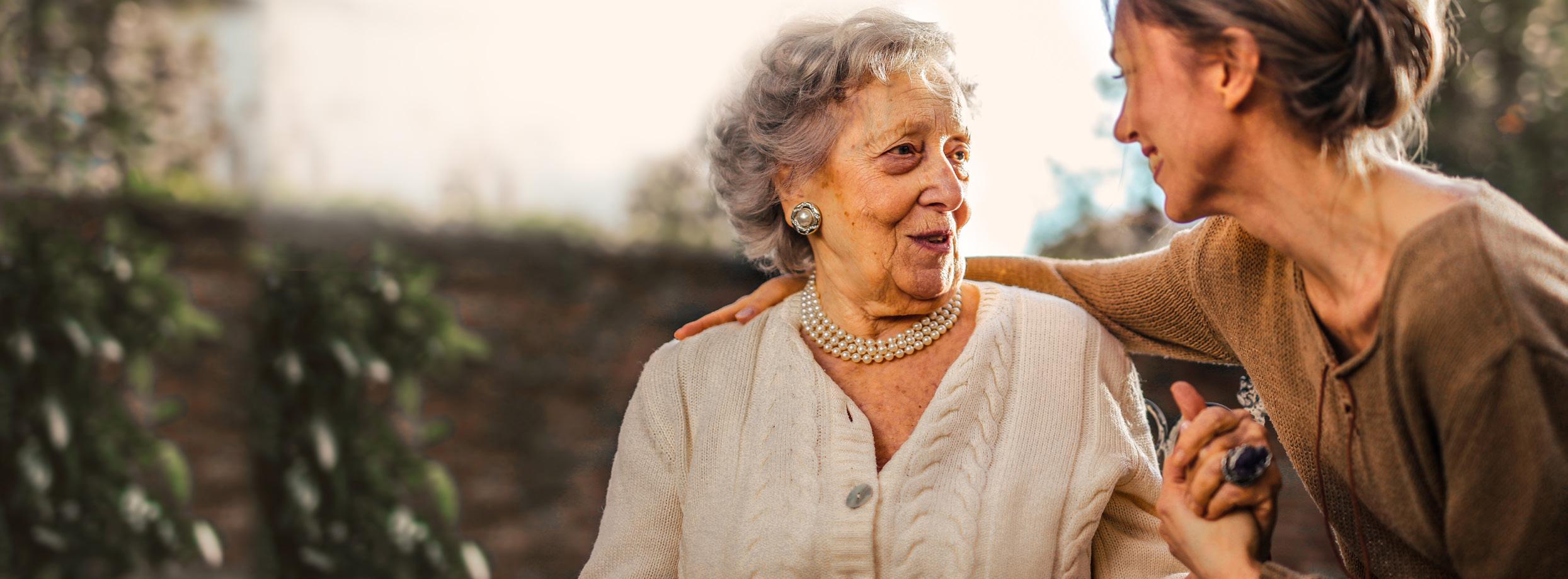
Our friendly team truly care for your family like they would their own - providing compassion, respect, and dignity.
With a deep commitment to meeting residents’ individual needs, whether it’s residential or respite care, The Malthouse is your perfect choice.
We currently have vacancies for permanent and respite stays. Call us today to book a viewing and to meet our team.
• The Dorset Local Plan will be available for public consultation from 15th August. I urge you to read it, and to add your opinions. Call us on 01747 448580 for a reassuring chat with one of our advisors.



The Grumbler – the open opinion column in The BV. It’s a space for anyone to share their thoughts freely. While the editor will need to know the identity of contributors, all pieces will be published anonymously. With just a few basic guidelines to ensure legality, safety and respect, this is an open forum for honest and unfiltered views. Got something you need to get off your chest? Send it to editor@bvmagazine.co.uk. The Grumbler column is here for you: go on, say it. We dare you.
Quick question: does anyone remember voting on whether Bournemouth should be symbolically married to Netanya in Israel? No? Me neither. But here we are in 2025, 30 years into a civic ‘twinning’ arrangement most residents couldn’t name, caught in the crossfire of one of the most bitterly polarised international conflicts in living memory.
A petition of 2,500 locals asked BCP Council to sever the link – a hefty chunk of public opinion. And the council’s response? A full debate, some legal headscratching, and ultimately a gloriously meaningless outcome: ‘we take no position’. This, said the councillor who brought the motion, was ‘a masterclass in fence-sitting.’ He wasn’t wrong. Because here’s the thing: you can’t claim neutrality while maintaining a symbolic civic tie to a state currently accused of war crimes. That’s not impartiality. That’s passive endorsement – a decision not to decide, while still flying the flag (or at least, not removing the road signs ... unless they go missing) (Again).
Sincerely yours
So let me ask a different question: what is town twinning actually for?
Originally, it was a hopeful gesture – a post-war reach across borders, encouraging friendship and understanding between former enemies. Noble stuff. But now? In many towns, it seems to be just a dusty relic – the kind of arrangement that lives quietly on a council website while no one really notices or remembers (except, of course, when someone tries to end it ...).
And yet, twinning hasn’t quite died. In some places, like Sturminster Newton, it’s very much alive – and clearly rather well-fed. The town’s mayor recently returned from a trip to Montebourg in Normandy to mark 30 years of twinning. Her account reads like the diary of a cheerful exchange student: language barriers bridged by Google Translate, ceremonies followed by “food fests,” presents awkwardly re-gifted (a book on Dorset, bought in a last-minute panic), a tree planted, and multiple lunches, dinners and museum visits squeezed in between emotional stops at Omaha Beach and the local church (“even damper than Mappowder”)
It’s very much alive –and clearly rather well-fed

It’s a lovely write-up. It’s charming, heartfelt and sincere. But it also begs the question: who benefits from all this? A handful of councillors and association members? Do residents see the cultural exchange? Do schools, choirs, businesses or sports clubs? Or is twinning now just a series of wellcatered weekends for the elected few, travelling at public expense for “friendship” while wielding little or no impact?
Because if the only visible output of a 30-year civic link is some polite speeches, a wooden plaque and several large buffet spreads, then perhaps we need to be honest about what this is: not diplomacy, not culture ... just a jolly with French wine.
And in Bournemouth, it’s worse.
There, twinning has become a political landmine. The question of whether to maintain links with an Israeli city embroiled in the Gaza conflict has become so charged that BCP Council’s grand solution was to say nothing at all. They’ll neither condemn nor support the link, they say ... but they’ll quietly keep it. That’s not leadership. That’s performative neutrality.
Twinning can be meaningful – it should be meaningful. It should bring tangible benefits: school visits, language exchanges, shared community projects. But if it’s just a ceremonial shrug –something a handful of people toast every few years with a glass of Calvados and a chicken lunch – then maybe it’s time to untwin.
Because symbols matter. And silence, as BCP just proved, is also a statement.

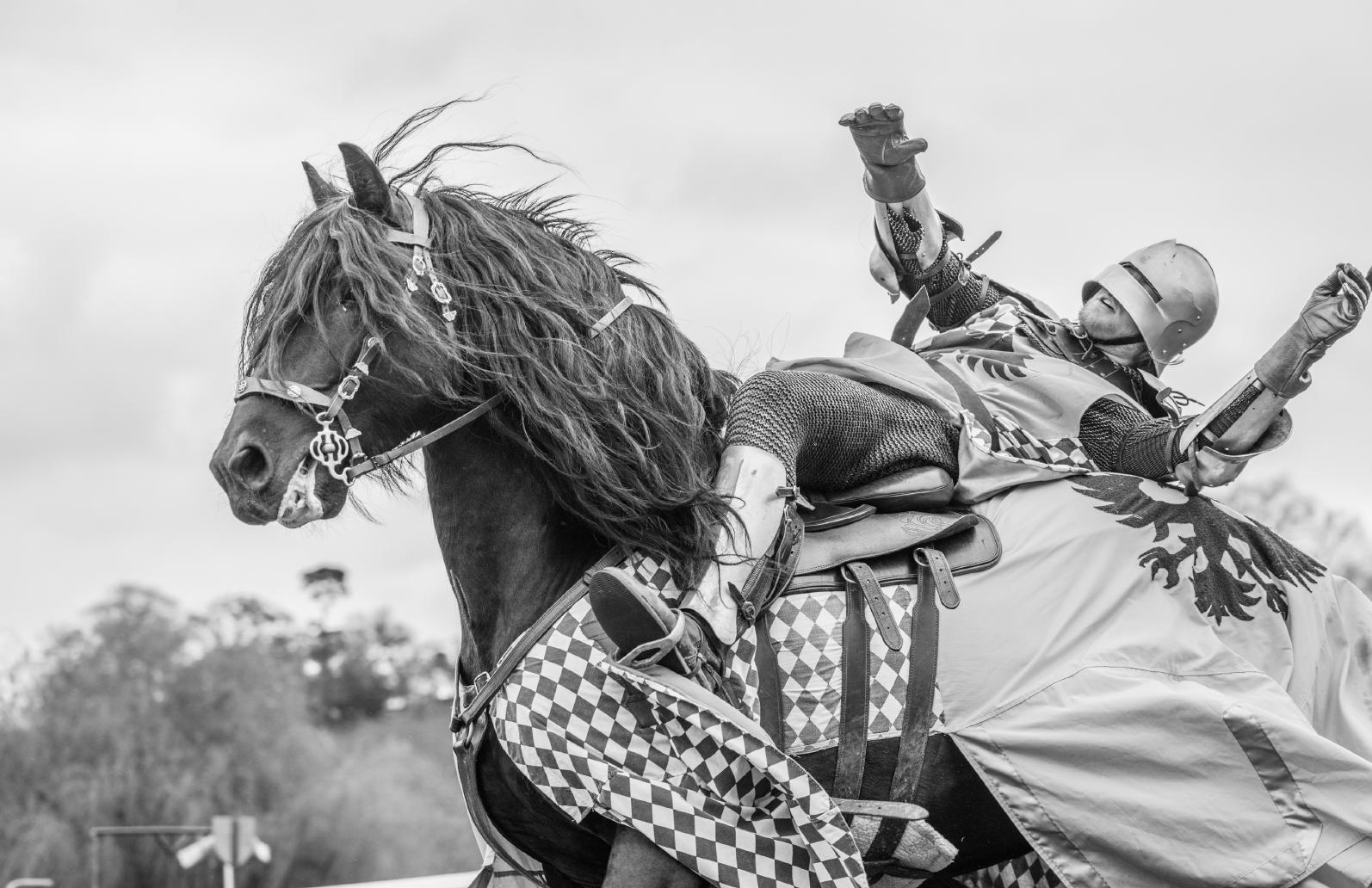
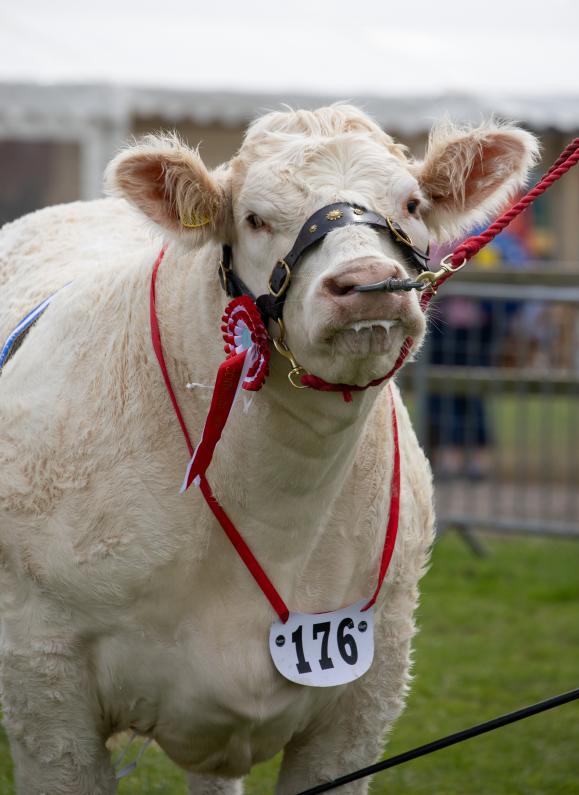

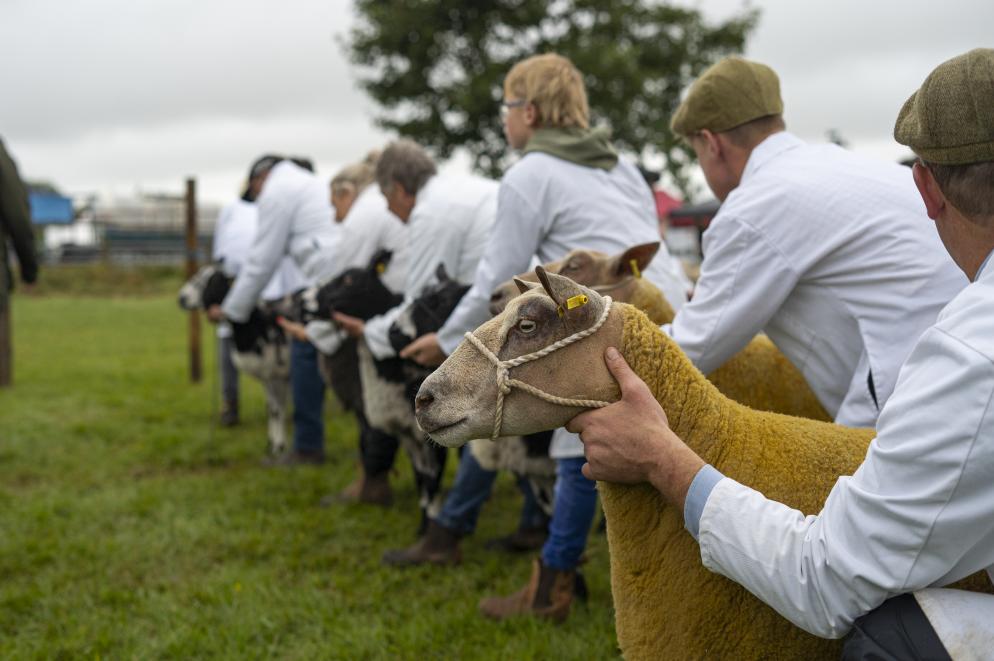

Once again, The BV has teamed up with the Gillingham & Shaftesbury Show team to create the official pre-show magazine. Inside this special section, you’ll find their insider ’s guide to what not to miss –from the best ringside spectacles to quiet gems around the showground. Click here to read the full magazine – it’s packed with tips, maps and behind-the-scenes interviews. Whether you’re a lifelong fan or a first-time visitor, it ’s the easiest way to plan your day and make the most of every minute. Haven’t got your ticket yet? Click here. They’re £19 for adults, £3 for children – and booking ahead saves you money. It’d be rude not to.
The G&S Show team know the ground better than anyone – so we asked them what not to miss this year, once you manage to tear yourself away from the Main Ring:
The cattle and sheep lines
At its core, the G&S is still proudly an agricultural show. You don’t need to be a farmer to find the sheep and cattle competitions genuinely fascinating – and it’s well worth wandering the lines afterwards. Don’t be shy: breeders are usually happy to chat and there’s no such thing as a silly question.
On Wednesday, you’ll see the Commercial Sheep classes, along with Beef and Dairy cattle breeds.
On Thursday, it’s the turn of the rare, traditional and minority sheep breeds, plus the Cattle Championships and the ever-popular Young Handlers classes.
• HOW TO SEE THEM:
The cattle and sheep lines are to the side of the main show area – just check the map. Judging starts at 8.30am and runs through until late morning on both days.
The Grand Parade
Staying with the agricultural theme, the Grand Parade of Livestock – sponsored by Cornish Mutual – returns
As well as the static display of steam engines and vintage tractors, favourites like the Littlegem Foster and Garrett 4NHP Tractor will be parading in the Main Ring!


proudly to the Harts of Stur Main Ring.
Watch as the day’s champions and prize-winning livestock take a lap of honour around the ring. It’s a proper show highlight – and not one to miss.
• HOW TO SEE THEM:
The Harts of Stur Main Ring, both days, 3.15pm
Sheep and Cattle Top Trumps
New for this year – keep an eye out around the livestock lines for the Sheep and Cattle Top Trumps trail! Each breed has its own info card, packed with fun facts and stats – from weight and wool type to history and rare breed status. There’s one for every breed on display.
• HOW TO DO IT:
See how many you can spot as you wander the cattle and sheep lines.

The Dog Ring
Sitting roughly halfway between the Main Ring and the Turnpike Ring, the Dog Agility Ring is easy to find – and well worth a stop. There’s a full timetable of demonstrations running all day, covering Fitpaws, gundog work, scentwork and agility. It’s all run by Dogwise Training School, based in Mere, who’ll also have their brilliant dog shop on site
• HOW TO SEE THEM:
The Dog Agility Ring, both days, with regular demos from 10am to 3pm
Thank you for the music
When it’s time for a break, make sure you stop near some music – there’s live entertainment all day across the showground! On the Main Stage you’ll catch everything from the ever-popular wit and harmonies of the Belle Street duo to the electric energy of rock/pop favourites Sugar Rush. Over at the Bandstand, enjoy a rolling line-up including The Pedigree Jazzband (jazz, jive and swing), Acoustic Jass (traditional New Orleans jazz), the Gillingham Imperial Silver Band and the award-winning Significance Sign Choir.
• HOW TO SEE THEM:
Live entertainment runs all day on both stages, with the Band Stand starting at 10am and the Main Stage from 10.30am on both days.
Have a go!
From dry stone walling with top waller Tom Trouton to cutting old pennies into intricate designs with Simon at A Pretty Penny, maybe stone carving or even thatching: there’s plenty to have a go at.
• HOW TO FIND THEM:
Wander through the craft areas and see what hands-on activities catch your eye.

(all included with your ticket!)
1. Watch the Jousting – Knights, lances, chaos and chivalry in the Main Ring
2. See the Tigers Motorcycle Display – jaw-dropping stunts and flying bikes
3. Catch the Shetland Pony Display Team – big attitude in tiny packages
4. Visit the Heavy Horse Village – gentle giants with serious pulling power
5. Watch the Cattle Judging – the best of British livestock on parade
6. See Sheep Judging – fleece, form and serious farmyard rivalry
7. Take in the Equine classes – from retired racehorses to elegant showjumpers
8. See the Vintage Tractor Parade – engines, nostalgia and polish galore
9. Watch the Steam Parade – the clanking, hissing heart of rural history
10. Try dry stone walling – take the time for a hands-on go at a timeless skill
11. Try thatching – see if you’ve got the knack!
12. Watch the Gun Dog display – obedience, skill and an overload of wagging tails
13. Cheer for Terrier Racing – total chaos at high speed
14. Enter the Fun Dog Show – rosettes, wobbly sit-stays and waggy pride
15. Watch Ferret Racing – pure mischief on crazily fast feet through drainpipes
16. Watch The Sheep Show – music, dancing and shearing demos
17. Make a coin pendant – have a go, and take it home with you
18. Visit the Observation Hive – spot the queen and watch the bees at work
19. Enjoy live music – there are great bands on the Main Stage all day
20. Watch the Grand Parade – livestock champions take a lap of honour each day
21. Visit the Tractor Dealerships – the latest machines up close
22. See the Dog & Sheep Show – clever dogs and confused sheep
23. Explore the Horticultural competitions – cakes, carrots and creative flair
24. Make a beeswax candle – drop in to the Bees & Honey tent
25. Have a go at milling flour – old-school power, creating some fresh-ground grain
26. Learn about Grain & Fodder – what goes into feeding a farm
27. Try felting – soft, colourful and surprisingly satisfying
28. Explore Stone Carving – watch and try your hand at carving
29. Meet the Goats – everyone loves their friendly faces and sassy character
30. Watch the Open Air Dairy milking demo – see how cows are milked right there in the field


In the heart of the Main Ring, noble rivalry brews as Sir Marc the Brave of Gillingham prepares to face off against Sir Rebekka the Wise of Shaftesbury. With the graceful Lady Rosie presiding as the Lady of the Tournament, the stage is set to decide which town boasts the worthier knight…
But the contest is thrown into chaos with the thunderous arrival of Sir John the Vile – a rogue from the northern wastelands of Trowbridge. Bound by knightly code, the heroes must let him ride… and so begins a storm of trouble, terror – and some distinctly unruly peasant abuse.
Can honour and order be restored before the final lance is thrown?



WEDNESDAY 13th
9:15 Jousting
12:30 Heavy Horse Classes
12:10 Hound Parade 11:10 Tigers Motorcycle Display Team 10:00 D1-D4 Driving Classes sponsored by Brown & Brown sponsored by Paul Millard Plant Hire sponsored by BV
Jousting 14:15 Tigers Motorcycle Display Team 13:45 Steam Parade sponsored by TDJ Hunt Agricultural Services Ltd
sponsored by Paul Millard Plant Hire sponsored by Brown & Brown
15:15 Grand Parade sponsored by Cornish Mutual 16:00 SJ1 - SJ4 Showjumping Classes 10:00 Ferret Racing 10:30 Terrier Racing 11:00 Ferret Racing 11:45 Gun Dog Display
TDJ HUNT AGRICULTURAL





10:30 Rockit Choir 12:00 Conor Smith 13:30 Belle Street 15:00 Set Ready 16:30 Soul Sonics 18:15 Sixteen String Jack 20:00 Balance of Power
21:00 Decatonics
10:00 Gillingham Band
11:15 Acoustic Jass
12:30 Gillingham Training Band
13:45 Gillingham Band
15:00 Acoustic Jass
16:00 Gillingham Band
sponsored by Peter Harding Wealth Management
12:15 Ferret Racing 12:45 Dog & Sheep Show 14:00 Meet the Hounds 14:30 Terrier Racing
Ferret Racing
Gun Dog Display 16:00 Dog & Sheep Show 13:30 Ferret Racing
16:30 Terrier Racing sponsored by Pawbeck
sponsored by Peter Harding Wealth Management sponsored by Pawbeck sponsored by Pawbeck



8:30 Breed Classes

8:30 Young Handlers Classes 9:00 Commercial Classes
RING A

08:30 1-3: Ridden Hunter 10:30 4: Irish Draught 11:30 5-7: Working Hunter 14:30 8-9: ROR Classes 16:00 10-11: Open Ridden Cobs
RING B
13:00 12: ROR In Hand 14:00 13-14: Irish Draught In Hand

THURSDAY 14th
10:00 Tractor Parade
9:30 Shetland Pony Display Team 12:15 Jousting 11:15 Tigers Motorcycle Display Team 10:45 Heavy Horse Parade
10:00 Ferret Racing 10:30 Terrier Racing 11:00 Ferret Racing 11:45 Gun Dog Display
sponsored by Paul Millard Plant Hire
sponsored by Brown & Brown sponsored by The BV sponsored by Dorset Tractors
13:00 Steam Parade
sponsored by TDJ Agricultural Services Ltd
13:45 Tigers Motorcycle Display Team
sponsored by Paul Millard Plant Hire
14:45 Jousting
sponsored by Brown & Brown
15:15 Grand Parade sponsored by Cornish Mutual 16:00 Shetland Pony Display Team
16:30 Heavy Horse Parade sponsored by The BV






12:15 Ferret Racing 12:45 Dog & Sheep Show
14:00 Meet the Hounds 14:30 Terrier Racing 15:00 Ferret Racing 15:30 Gun Dog Display
16:00 Dog & Sheep Show 13:30 Ferret Racing sponsored by Peter Harding Wealth Management
16:30 Terrier Racing sponsored by Pawbeck sponsored by Peter Harding Wealth Management sponsored by Pawbeck sponsored by Pawbeck



TDJ HUNT AGRICULTURAL SERVICES LTD 10:00 Championships
Interbreed Groups 9:30 Young Handlers


15:00 Band on the Strum
Ponies

by Fanny Charles

Fans of Swan Lake – arguably the greatest of all classical ballets – had an unexpected treat at Covent Garden Dance Company’s 2025 Ballet under the Stars at Hatch House near Tisbury. A serious viral illness forced the withdrawal of Lauren Cuthbertson, and the change of soloist meant two changes to the programme, including a heart-stopping finale pas de deux from Swan Lake, performed by the exquisite Emma Hawes, with her dance partner Gareth Haw. It was a great disappointment for regular audiences, who were looking forward to the return to Hatch of the famous dancer, a principal guest artist with the Royal Ballet. Everyone hoped for a speedy recovery for Lauren, but Emma Hawes, leading principal dancer with English National Ballet, was no mere stand-in. She captivated everyone with her beautiful shapes and feather-light classical perfection, in a touching pas de deux from Giselle, with Haw, who is also a leading principal dancer at ENB. They followed this, rounding off a magical evening, with the great Swan Lake pas de deux, possibly the most famous in all classical ballet, here given a matchless beauty and poignancy by a ballerina whose return to Hatch will be eagerly awaited!
The evening lived up to the name ‘ballet under the stars’ on both Friday and Saturday – Sunday’s rain did nothing to dampen the experience, and if the stars were mostly hidden in the sky, they were very much on show on stage under the marquee in the beautiful 17th century walled garden.
Courteney Celeste Fox, probably the Caribbean’s most


famous dancer and now the Cultural Ambassador for the Bahamas, gave a joyfully smouldering performance of In Time, a new work which she choreographed, danced to a score composed and performed by Bahamian jazz trumpeter Giveton Gelin, who also performed two solos. For lovers of contemporary dance, there were two astonishing pieces created by Ekleido and danced by company founders and joint artistic directors Hannah Ekholm and Faye Stoeser. Performing to a powerful and mainly electronic score, the pair – dressed in gothic-influenced glittering black – gave the world premiere of their new work, Clinquant, this year’s Dicky Buckle Fund new work.
The fund, created in memory of the noted dance critic, is supported by Covent Garden Dance Company, and enables the creation of new works by emerging choreographers. The second piece, the mesmeric, almost robotic Splice, saw the two dancers in shiny black and white, like balletic space travellers! Each of the dozen pieces – performed in three acts, between the three courses of dinner – showcased exceptional dancers. It was thrilling to see Joy Womack and Xander Parish in Stravinsky’s The Firebird, Zai Calliste’s seductively virile Hereafter, and Royal Ballet principals Sarah Lamb and William Bracewell in the enchanting pas de deux from Prokovief’s Cinderella.
Next year marks the 20th anniversary of the founding of Covent Garden Dance Company, which will return with Ballet under the Stars on 24th to 26th July 2026.

Music lovers are in for a rare treat this September as the internationally acclaimed Gentlemen of St John’s College, Cambridge return to St Peter’s Church in Dorchester for one night only.
On Saturday 6th September at 7pm, this celebrated vocal ensemble – affectionately known as ‘The Gents’ – will perform a programme spanning more than 600 years of music. From Renaissance polyphony to contemporary arrangements, their concerts are known for exquisite blend, impeccable musicianship and engaging charm. A septet of singers from the choir’s rich tradition will take the stage, bringing the unique sound and heritage of St John’s College Chapel to the heart of Dorset. The Gents last performed at St Peter’s two years ago, drawing a full house and widespread praise. With their reputation for selling out performances across Europe, the US and Asia, early booking is strongly recommended.
Formed from the choral scholars of St John’s College, The Gents are a professional touring
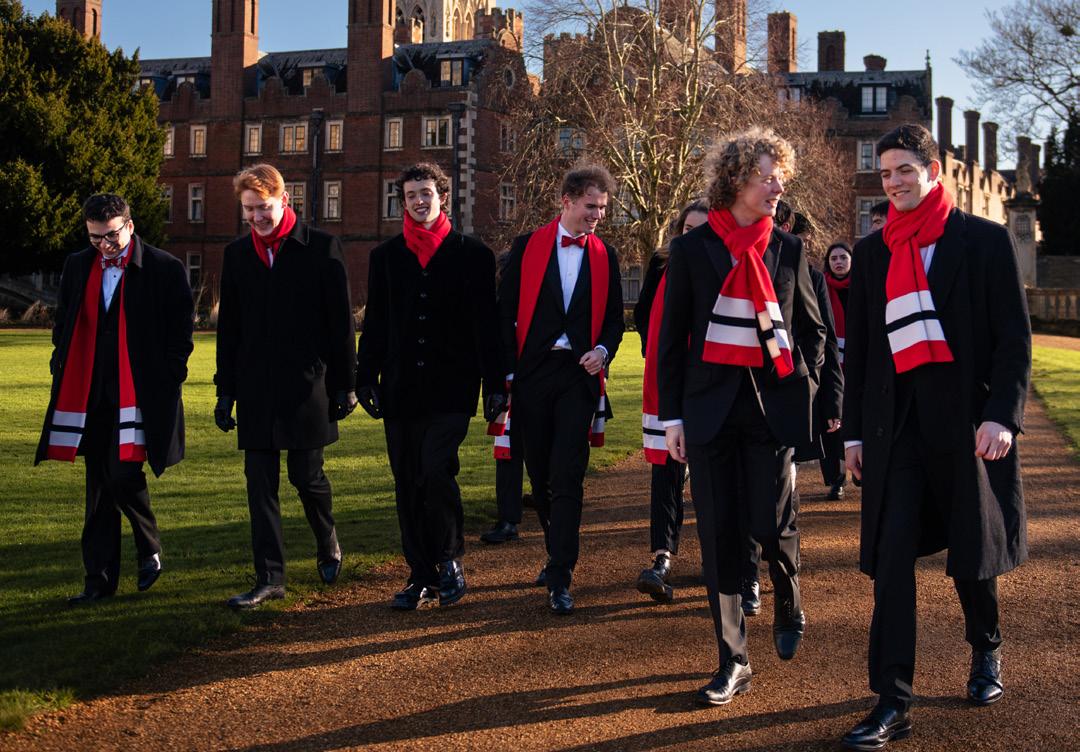
The Gentlemen of St John’s College, Cambridge, will be performing for one
group who perform both sacred and secular works worldwide. Their acclaimed discography and international tours have made them one of the most respected male vocal ensembles in the UK.
• Further details and tickets (from £14) can be found on the Music at St Peter’s website: musicatstpetersdorchester.org
Now in its fifth year, the Child Okeford Art Trail returns this August Bank Holiday with an inspiring line-up of 22 artists and craftspeople across the village. From Friday 22nd to Monday 25th August, 11am to 4pm daily, visitors can explore home studios, gardens and community spaces, discovering work ranging from ceramics and printmaking to jewellery, painting and sculpture. At the Old School House, Diane Ablitt will be showing her latest pieces in a newly refurbished studio set within a beautiful garden. She’ll be joined by linocut printer Kathy Clarke and Jo

Burnell, whose hand-thrown earthenware pots are decorated in bold, colourful designs inspired by the Dorset countryside.
Clock Cottage has seen recent transformation too, where Rob Adams unveils a new studio space. He’ll be joined by Cath Broadway of Elm House Studio pottery and Sue Fawthrop, whose expressive paintings evoke the atmosphere of Dorset’s landscapes and coast.
Eleven artists will exhibit together in the Village Hall, where visitors can enjoy homemade cakes, light lunches and refreshments in support of Julia’s House, thanks to local charity SERO.
All proceeds from Julie Little’s paintings will also go towards the hospice.
New to the hall this year is printmaker Victoria Garland, whose intaglio etchings often feature winter trees etched into copper or steel plates. Also debuting is jeweller Rachel Raine, whose silverwork incorporates ethically sourced stones, fossils and recycled materials, with designs inspired by natural textures and forms.
Village resident Kirsty Baird joins artists at the Community Centre with her paintings reflecting a deep love of local life and countryside.
With everything from fine art to handcrafted jewellery on show, the trail offers a unique opportunity to meet the makers, explore creative spaces and discover something unexpected in every corner of the village.



Get ready — Canford Classic & Supercar Sunday 2025 is shaping up to be the biggest, baddest automotive celebration yet. Expect a glorious exhibition of more than 700 of the finest, rarest and most remarkable cars you’ve ever laid eyes on.
The Sunken Lawn will be the jewel in this year’s crown – a gorgeously curated display featuring five masterpieces from Bonhams|Cars. Highlights include a 1960 Aston Martin DB4GT Zagato Sanction III and a 1963 Ferrari 250 GT

Berlinetta Lusso. The legendary Lamborghini Miura, on loan from Haynes Heritage, also takes pride of place.
And we’re not done yet – the Iconic Ferrari F40 returns to the show, featured alongside engineering marvels from McLaren and Aston Martin courtesy of Harwoods Group. There are many more world class surprises still to be revealed…
Have a go
Around the wider showground, the crowd-favourite Rev-Off Battle will return with its usual thunder. A symphony of engine noise, carefully curated and perfect for the petrolhead!
And for our younger guests, the Mini Rover off-road course promises a big adventure for little drivers. Thanks to Canford School for sponsoring this brilliant feature, where children aged four to ten can tackle
obstacles in mini electric Land Rovers and earn their very own driving licence – the perfect family experience.
Did we say, the Mini Rovers experience is totally FREE? Have as many goes as you like!
Can you beat Reza?
But the biggest new addition this year? The Daizun Racing Simulator Challenge.
Brought to you by our headline sponsor, Daizun Investments, this immersive racing sim experience is open to everyone, and it’s FREE to have a go. Reza Seewooruthun, the local talent tearing up the GB3 grid, has set the pace.
Can you beat him?
He’s 17. He’s from Poole. And he’s one of the fastest young drivers in Britain.
Reza has already claimed titles as Junior Rotax English Karting Champion, stood on the British F4 Championship podium, and brought home a Bronze Medal for Team UK at the FIA Motorsport Games.
Now racing in GB3, he’s tipped for the very top.
He’s laid down a blistering benchmark lap on the Daizun Racing Simulator Challenge, and your mission is simple: beat it. ‘Reza’s passion for performance mirrors the pace and precision we pride ourselves on at Daizun,’ says Dave Rogers, Managing Director. ‘This partnership isn’t just about style. It’s about substance, strategy – and driving real results.’
So Reza’s already set the pace ... Now it’s your turn.
• Tickets are on sale now –and they’re selling fast. Entry includes both the Mini Rovers off-road course and the Racing Simulator Challenge: it’s all included in your entry! Don’t miss out.
CLICK TO BOOK NOW: ApertaEvents.com




Local farmer Philip Trim has donated £8,800 to University Hospitals Dorset’s Radiotherapy department in memory of his late wife, Jane – a deeply personal gift that honours both her legacy and the care she received at Poole Hospital.
Jane, described by Philip as a ‘hardworking cattle girl’, was well known on the agricultural show circuit for exhibiting her awardwinning Charolais cattle. With deep roots in the community – her father was the GP in Corfe Castle – Jane insisted on using the NHS throughout her lung cancer treatment. The couple were profoundly grateful for the compassion and dedication shown to them by the hospital team. Jane passed away in 2018.
No marathons
‘Our son, Ben, and I wanted to do something to give back,’ Philip said. ‘The team pulled out all the stops for Jane and we wanted them to recognise that we appreciated everything they had done for her. We wanted other families to benefit like we did.’ This latest donation adds to a remarkable total of more than £80,000 raised by Philip, his

Trim Contractors, over the years. Fundraising began on Jane’s birthday the year after she died, when the family held a tractor run. The farm opens a seasonal campsite each August, and the family also raise money by offering educational tractor and trailer rides around the farm to their campers.
Dorset Past Finders, a local metal detecting group, has also supported the cause.
‘People have been so generous,’ Philip said. ‘I’m past running marathons – but I’ve got a farm, a campsite and a community,
something back.’
David Frost, head of radiotherapy at UHD, praised the Trim family’s enduring support. UHD’s Hayley Harris added: ‘This donation will make a real difference. Jane’s story continues to touch lives through the generosity of her family and their remarkable fundraising work.’
The donation will directly enhance the radiotherapy services at Poole Hospital, providing comfort and cuttingedge care beyond what standard NHS funding can cover, to patients undergoing treatment.
Artsreach, in partnership with Pavilion Dance South West, is launching a weekly dance class this autumn, specially designed for people over 60 living in North Dorset. Held at The Exchange in Sturminster Newton, the 12-week course begins on Thursday 25th September and runs through to 11th December.
Led by a teacher trained to support older participants, the sessions focus on lowimpact movement – no dance
experience is needed. Alongside gentle exercise, the classes offer a chance to meet others and enjoy refreshments afterwards.
‘As the winter months approach, we all tend to spend more time indoors – and for older people this may mean greater feelings of loneliness and isolation,’ said Yvonne Gallimore, Assistant Director of Artsreach. ‘We are very grateful to the Britford Bridge Trust and Dorset Community Foundation for
enabling us to launch these classes in North Dorset.’
Each class costs £6, and anyone over 60 is welcome. Those needing extra help are encouraged to bring a carer. Whether you’re looking to improve fitness, lift your mood or just have fun in good company, this new class offers a welcoming way to stay active.
To book, contact The Exchange on 01258 475137 or email yvonne@artsreach.co.uk

A family’s decision to cut their carbon footprint has seen their home leap from an EPC Band D to Band A – and they credit local community lender Lendology for making it possible.
Mike and his family wanted to install solar panels, but the upfront costs were a stretch too far. A home energy loan from Lendology CIC – a not-for-profit community lender that works in partnership with local councils – helped them bridge the gap: ‘They couldn’t have been more helpful,’ said Mike. ‘Without their support, I don’t think we could have done it.’
The new system generates enough electricity to meet the family’s needs and will support a heat pump installation too. Lendology’s people-first approach is proving vital as energy bills rise and rural homes

face retrofit challenges. Last year, the organisation delivered more than £3.6 million in affordable loans to more than 400 homeowners across the South West – half of those were for renewable and energy efficiency improvements.
Now working with 20 local authorities, Lendology is part of a wider community finance partnership alongside SWIG Finance and Great Western Credit Union. Together, they’ve


delivered £30 million in impactled funding across the region, supporting households and small businesses often overlooked by mainstream lenders.
For homeowners looking to future-proof their properties or fund essential improvements, Lendology offers a fair, accessible alternative – one that is helping Dorset households build warmer, greener, more resilient homes. To check eligibility or find out more, visit lendology.org.uk



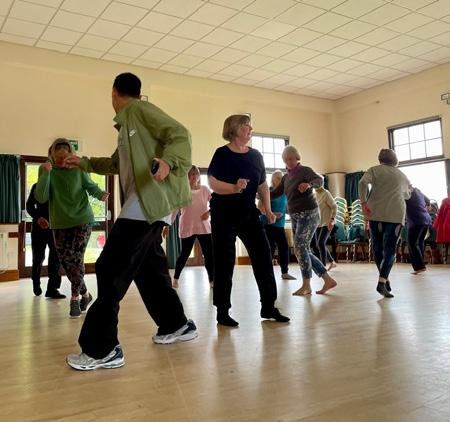










JERRY
SATURDAY 9TH AUGUST
All the Rock N Roll hits - Great Balls Of Fire, Whole Lotta Shakin, Breathless, High School Confidential, Be Bop A Lula, Wild One, Roll Over Beethoven, Johnny B Goode and more
SATURDAY 23RD AUGUST
Lead singer with The Hollies and West End star of Only the Lonely – The Roy Orbison Story, performs the all-time favourites He Ain’t Heavy, He’s My Brother, You Got It, and Pretty Woman
MUD
SATURDAY 30 AUGUST TH
3 UK number 1s, 11 UK top 10s and 15 UK top 40s as well as hits worldwide, today the band still has 2 surviving original members, ROB DAVIS and RAY STILES ‘Oh Boy’, ‘Tiger Feet’ and all the hits!
BOOTLEG BLONDIE
SATURDAY 6 SEPTEMBER TH
Debbie Harris, lead vocalist with a live band, perform all of Blondie’s greatest hits with the looks, the voice and the attitude of the original Blondie bombshell!





With six vacant seats and only five councillors currently in post, Stalbridge Town Council is calling on residents and local workers to step forward and help shape the future of the growing town.
A new short film, now live on the council’s website, showcases the work councillors do behind the scenes – from planning and green spaces to community wellbeing – and aims to demystify what’s involved in the role.
‘The town is growing fast, and with our Future Town Vision Project, we need more hands on deck,’ says Vice Chair Paul Hancock.
Councillor Neil Penny added: ‘I’m keen to get a Neighbourhood Plan off the ground, but we can’t do it without more councillors and involvement from local residents.’
Councillor Jan Wardell stressed the value of getting involved: ‘A lot of what we do makes a real difference. It’s rewarding and it’s for everyone.’
Chair Katie Garland encourages anyone curious
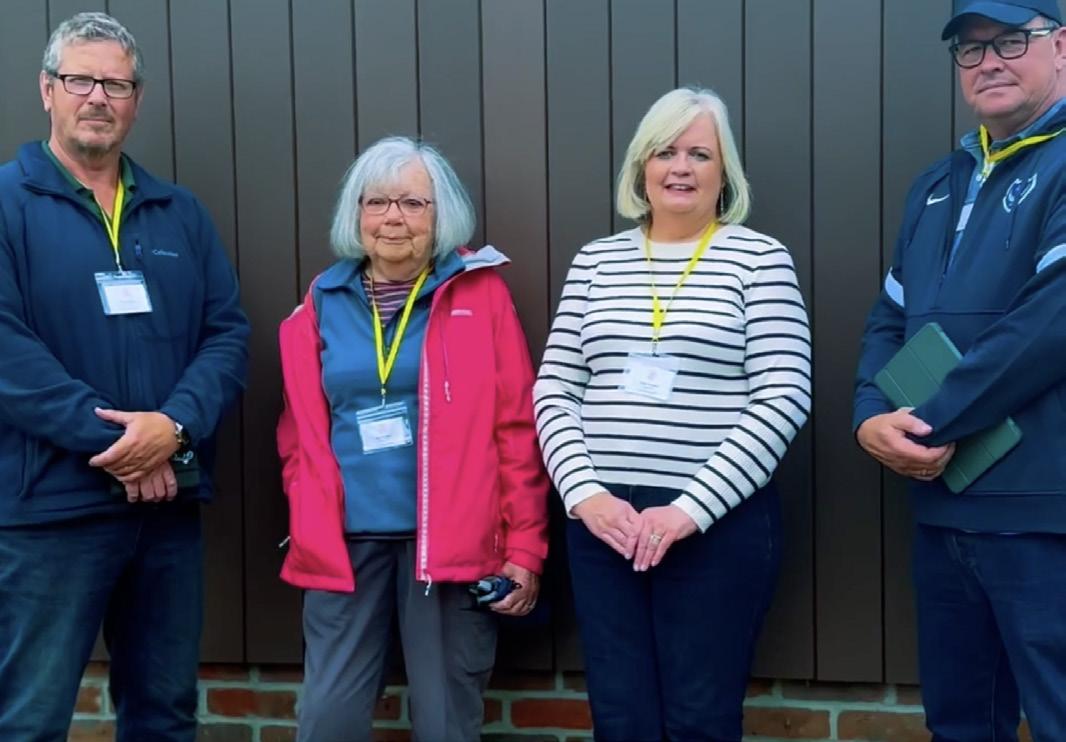
Stalbridge councillors are calling on residents to step up
to get in touch: ‘No pressure, no obligation – just come and find out what it’s all about.’
• To watch the film and learn more about joining the council, visit stalbridgetowncouncil.gov.uk and use the contact page to get in touch.
Barn owl chicks are surprisingly noisy. Now, thanks to a project based in Dorset, their hissing chatter might be the key to protecting them – without anyone needing to peek inside the nest.
Bournemouth University PhD student Kavisha Jayathunge is developing artificial intelligence that can listen to young barn owls and work out how many are in the nest – just from their calls.
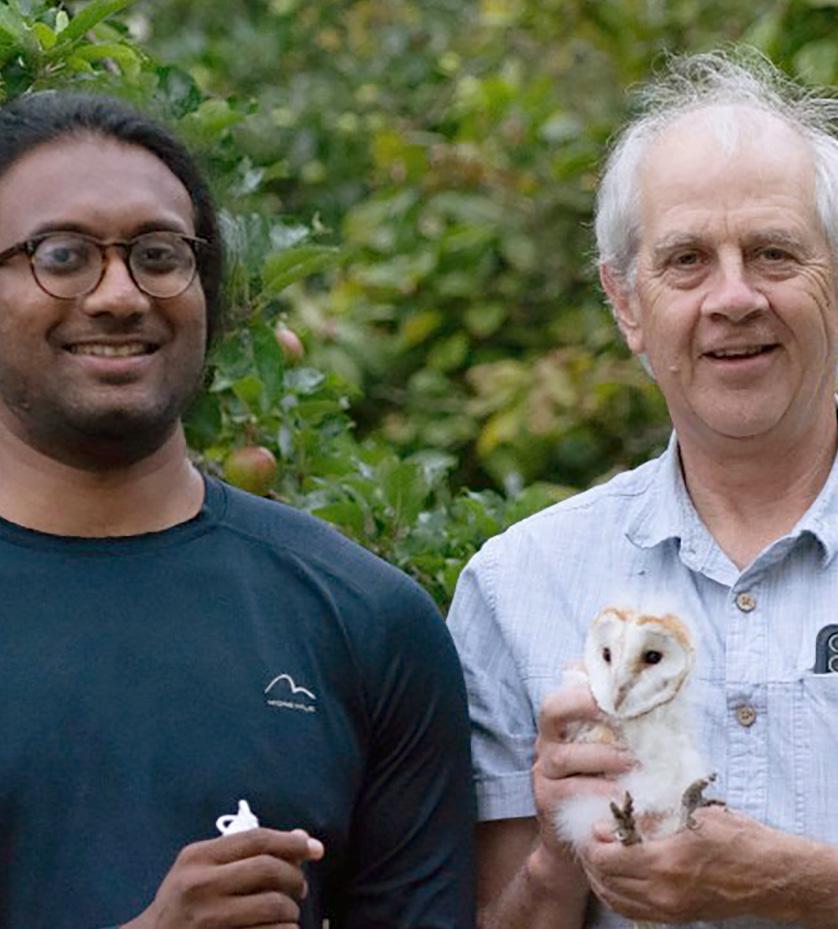
Each chick has a slightly different hiss, and while a human couldn’t tell them apart, the software can. It can even track which owlet is which ... and may one day be able to estimate how hungry they are based on how they call for food.
‘We’re using AI to count baby barn owls by sound instead of disturbing them with video cameras,’ says Kavisha. ‘It means we can monitor natural nest sites as well as nestboxes – and do it all without stressing the birds.’
The research is being carried out with Dorsetbased engineer and biologist Brian Cresswell, who specialises in using technology to support conservation. Their prototype has already successfully identified three chicks from one North Dorset nest recording.
Brian added: ‘It’s a great research tool – and might help us understand more about what the hissing actually means.’
Because the sound of a barn owl chick carries so far, the idea is that conservation volunteers could one day simply place a recorder in a nearby hedge and leave the AI to do the clever bit. The work could be particularly valuable in hard-to-reach natural sites, where checking nests isn’t feasible –or legal.
‘This could be brilliant for citizen science,’ said Kavisha. ‘It’s inexpensive, non-invasive, and it’s using technology for something genuinely good –helping barn owls thrive.’





The new BV Puzzles page! We’re sorry to leave so many of you without your puzzles last month –last-minute tech issues meant we had to abandon them. BUT - we’ve take the opportunity for a refresh, and we think you’ll like it! They’re all on one page on The BV now – just click, and scroll to find the one you want to complete (and yes, the jigsaw can be made full screen!). We’ve even added Sudoku!




A local expert from Citizen’s Advice provides timely tips on consumer issues. In the postbag this month:
Q: My neighbour told me that the way we pay council tax is changing but I can’t see anything about that in my recent council tax bill. Can you explain?
A:The government is currently consulting on the administration of council tax including:
• Changing the ways council tax is billed, collected and enforced
• modernising the support available in the system
• supporting councils to improve efficiency
The government says that it is aiming to create a fairer and more efficient system for taxpayers and local authorities. One of the proposals is to change council tax billing from 10-months to 12-months.
Another is to amend how council tax is collected – including giving households more time before councils can demand full payment, and placing a cap
on the fees when councils seek liability orders for unpaid tax.
Other issues which are up for consultation include:
• modernising council tax disregards, to ensure they continue to support those they were intended to
• improving efficiency in billing for councils.
• exploring whether there is anything the government can do to remove barriers to effectively challenging bandings
Tom MacInnes, Director of Policy at Citizens Advice, said:
‘Spreading council tax payments over 12 months rather than 10 is a good start – it will help people to budget more effectively, especially those on lower incomes.
‘We also welcome the government’s review of how council tax is collected –something Citizens Advice has been campaigning for.
‘Council tax is our second biggest debt query area, narrowly behind


energy arrears. A quarter of clients with council tax arrears need advice about dealing with bailiffs, which can be a terrifying experience. Current rules mean small debts quickly spiral out of control – worsening hardship rather than providing the support people need to get back on their feet.’
You can read the full consultation document online at https:// www.gov.uk/government/ consultations/modernising-andimproving-the-administrationof-council-tax and, if you want to respond, you can do so either online or by emailing council. tax@communities.gov.uk or by writing to:
Ministry of Housing, Communities and Local Government Local Tax Team, Local Government Finance SE Quarter - 2nd Floor Fry Building 2 Marsham Street London SW1P 4DF
The consultation closes on 12th September 2025.







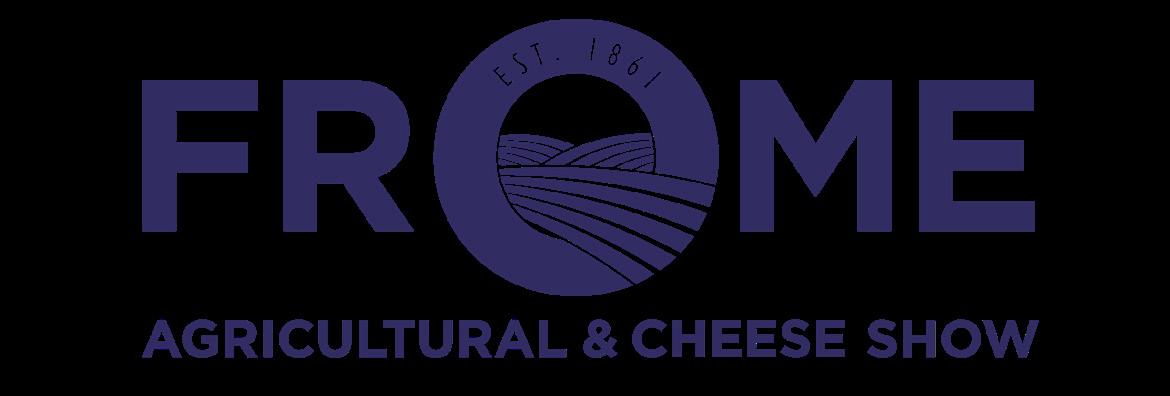


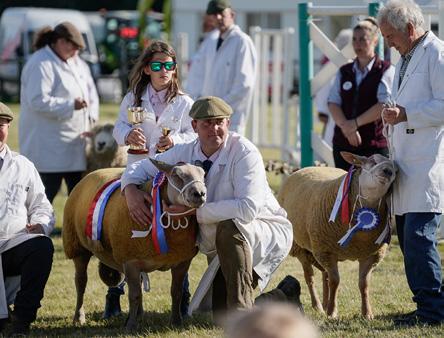


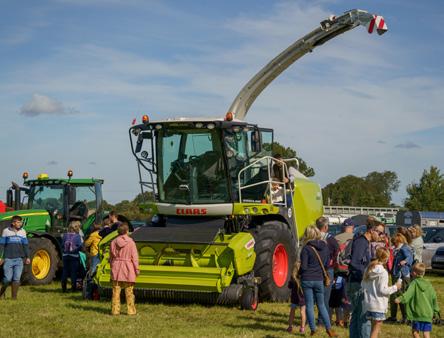


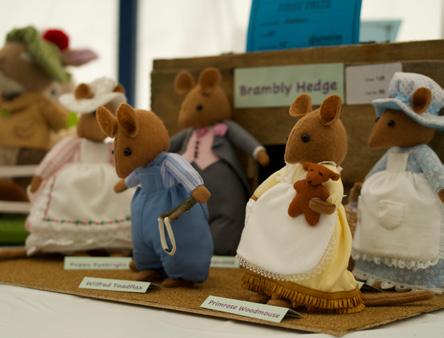


NATIONAL MARINE WEEK
1 AUG 2 AUG
National Whale and Dolphin Watch at Kimmeridge
A SELECTION OF EVENTS FROM OUR WHAT’S ON CALENDAR FOR AUGUST
TWELFTH NIGHT MIRACLE THEATRE
Ibberton, Belchalwell & Woolland Village Hall
DT11 0EL

7 AUG
NATIONAL MARINE WEEK: WILD SCIENCE!
Have you ever wondered how marine creatures float or ...
MARINE PROTECTED AREAS CRUISE ON THE FLEET EXPLORER
wildlife of the Fleet Lagoon
ART EXHIBITION
53rd Annual Art Exhibition by the Seaton & District Art Society
3 AUG 4-27 AUG 8 AUG 13-14 AUG 30 AUG 29 AUG 9-17 AUG
SUMMER SEASON OF PLAYS
Marine Theatre, on the sea front at stunning Lyme Regis
SHELLS, SNAILS AND SLIME TRAILS
Wild Chesil Centre discover the wonderful world of slugs and snails
GILLINGHAM & SHAFTESBURY SHOW
North Dorset’s biggest family day out A GLIMPSE BEHIND BARS
Come and see what goes on at Guys Marsh Prison
BLOKES PLAY BLUES
Get ready for an evening of toe-tapping tunes and good-time vibes!
Discover What’s On across Dorset – for locals and visitors alike. From car boot sales to comedy nights, fun runs to village fetes, our calendar has the what, when, where, how much – even how long it’ll take you to get there. Got an event? Add it – it’s quick, easy, and FREE.


Valerie celebrated her 104th birthday at the end of July with a relaxed afternoon gathering at The Malthouse residential care home in Gillingham, surrounded by friends, good food and plenty of conversation.
Chef Nicki prepared a homemade birthday cake and a generous spread for the occasion, helping to make the day feel special without too much fuss, just as Valerie requested.. Guests praised both the celebration and the care Valerie receives every day. Many noted how well she’s settled in, especially given how apprehensive she’d been about the move to residential care. There were warm comments about the team’s kindness, and the way staff support residents in their day-to-day lives. Valerie herself was clearly moved by the effort made on her behalf: ‘It’s a home from home,’ she said. ‘You’re all wonderful, and I can’t thank you enough for everything you do – especially for making today so special.’
The birthday marked a quiet milestone for a woman whose long life continues to be full of


quiet good humour, warmth and resilience. And while Valerie might not have made much of a fuss, the team at The Malthouse were only too happy to do so on her behalf.

As a retired registered nurse, Lynsey was used to being busy and dependable, but after years of caring for her mum, Flo, at home, she recognised that she needed a break. It wasn’t that she needed a holiday, or to ‘get away from it all’ – she just needed to catch her breath.
This realisation prompted Lynsey to research respite breaks for her mum. Having worked in care homes, she had seen the benefits that a short stay could offer –both to the respite guest, and their family carers. Lynsey began looking for a home where Flo could be comfortable, and where she could have confidence in the quality of care.
Can I come back?
After thorough research, Lynsey chose Greenhill House residential and dementia care home in Cheddar for her mum’s respite break: ‘When we visited Greenhill House, prior to my mum going in for respite care for a week, I was impressed by the friendly staff, pleasant surrounding and relaxed atmosphere. I had researched many homes and it was important to find the right one, as this was the first time she had gone into a home as a resident.
‘The food is excellent, plentiful and varied, with a snack bar

available, so the residents can help themselves if they get hungry throughout the day. The activities are also varied, led by helpful and enthusiastic team leaders.
‘As a retired registered nurse, I have worked in many homes –and I would rate this as one of the best. I wouldn’t hesitate to use Greenhill House again or recommend to others.’
While Lynsey took a well-earned break from being her carer, Flo enjoyed the change of scene that her respite break provided – so much so, that she asked when she could return!
Flo now visits Greenhill House three times a week for day care, and loves joining her new friends for activities and mealtimes.

Strength in seeking support
It’s not always easy to admit when you need help – especially with something that feels like your duty, like caring for a loved one. But caring is a skilled profession which requires specialist training: it’s not something we’re automatically prepared for. And when strong emotions are involved, the weight of responsibility can feel even heavier.
No matter how much you might want to, you can’t pour from an empty cup.
A respite break provides a chance to rest, recharge and reset, safe in the knowledge that your loved one is being well cared for.
• Somerset Care’s day care and respite services support you and your loved ones to live independently at home, for as long as possible. For information and advice, please visit somersetcare. co.uk, or contact our expert enquiries team on 0800 817 4925.



Want to reply? Read something you feel needs commenting on? Our postbag is open! Please send emails to letters@BVmagazine.co.uk.
When writing, please include your full name and address; we will not print this, but do require it.
On ‘Eddy’s next chapter’
(The BV, July 25)
Reading about Eddy’s return to Ukraine was both inspiring and infuriating. Inspiring, because his compassion, courage and resolve are extraordinary. Infuriating, because it reminded me how quiet the world has gone on Ukraine. We’re now awash with news on Gaza – rightly so, it’s horrific – but Ukraine hasn’t stopped suffering just because it’s no longer in the headlines. The war is still there. Civilians are still dying. People like Eddy are still out there trying to help. How have we let it become background noise? Sophie L, Gillingham
What an uplifting read Rachael Rowe’s interview with Eddy was. In a world where so many people complain about trivial things, he’s out there, choosing to help others in the most challenging conditions – and doing it all with warmth and positivity. Eddy’s outlook is a real credit to him. His ability to keep smiling and moving forward, despite everything, is deeply humbling. We could all do with a bit more of that spirit.
M Edwards, Sturminster Newton
On
Dorset Council is railroading residents over the decision to introduce a booking system for council tips. The scheme has now been dropped from most sites, yet Shaftesbury, Sherborne, Wimborne and Dorchester remain on track. The reasons it’s unnecessary are obvious: there’s no congestion, tips already work well, and the system adds pointless bureaucracy, requires internet access, and assumes people have their own car. Even DC seems aware this is flawed –their reasoning keeps shifting. First, Cllr Andrews suggested it was because ‘other councils do it’ (ignoring that many have scrapped it). Then we were told it was about stopping people crossing county lines – as if we all live by border controls. The announcement on 12th June sparked a storm of protest – petitions, hundreds of online objections, all against. It was enough for DCC to backtrack on most sites. Yet bizarrely, they still voted against holding a public consultation. I live in Shaftesbury – why should we be penalised just for living near the edge of the county? And
take a look at the time slots: most of us are in and out in three minutes, but now we’re all forced to run at the pace of the slowest driver.
It’s hard not to feel DC is deaf to its residents. Penny S. Shaftesbury
I have noticed a lot of debate regarding the Shaftesbury refuse collection centre going to a booking system.
I live outside Shaftesbury on a small lane, and for the first time in the many years I have lived here we have had fly tipping, left overnight.
It is very upsetting to find some unbelievably selfish person has just dumped their LAWNMOWER and chair amongst other discarded detritus in the rural countryside – because they are too lazy to go to the tip! It’s not difficult.
Name and address suplied, Shaftesbury
Various political parties have been promising to sort out the loop hole that is trail hunting, but we are still waiting for some common sense to prevail from our politicians. Every Dorset resident knows trail hunting is just a cover for actual hunting, usually with dogs.
Maybe once upon a time hunting was a respectable countryside tradition. Sadly, today the hunting industry is more like the drug industry: glamorous and exciting-looking on the outside, but behind the veneer, it is a dirty trail of illegal behaviour, paid thugs and violence.
Just because you call it ‘tradition’ doesn’t make it right. There are plenty of abhorrent traditions that we have thankfully stopped: it’s time to add hunting to this list.
Hazel C, by email
On the ‘Nine Stiles Trail’
(The BV, July 25)
What a terrific idea the ‘Trail of Nine Stiles’ is –exactly the sort of creative, community-rooted thinking that could do wonders for North Dorset. In fact, I’d go so far as to say Visit Dorset should scrap their recent (and frankly pointless) north-ofthe-county photo competition and get behind this instead. A collated map of a number of stile trails – with walkers encouraged to ‘collect’ or tick them off – could create a real sense of adventure.

It would give people a reason to explore our oftenoverlooked corner of the county, discover its small villages, support local businesses and pubs, and actually spend time in the place rather than just passing through.
And maybe, just maybe, if we manage to generate some proper tourism activity, Dorset Council might start to take notice of us up here. Because at the moment, it certainly doesn’t feel like they do.
AJ Brown, Child Okeford
On ‘No appetite for food security’
(Farming, The BV, July 25)
What a welcome voice Tim Gelfs is turning out to be – angry, informed and unafraid to say what so many in farming have been thinking for years.
His column on food security cut straight to the point. We’re constantly fed empty slogans about “supporting British farmers” while the government does the exact opposite – cutting payments, burying us in red tape, and opening the doors to cheap imports with no equivalent standards. Tim’s frustration is spot on: food security should be a national priority, yet it’s being treated like a niche concern. The public deserves to know just how fragile our supply chain is becoming, and Tim has the credibility and experience to spell it out clearly. More, please. We need his kind of honesty if there’s any hope of holding this government to account.
C. Harding, Dorset
On ‘Carbon offsets: a distant dad’s apology’
(Farming, The BV, July 25)
Brilliant article – finally, someone pointing out the farce for what it is.
Apparently, all it takes to wipe away a transatlantic flight is planting a few trees in a Dorset field. Meanwhile, that same field could have been growing food or supporting local biodiversity, but no – it’s now just a guilt sponge for a tech firm’s private jet habit. “Net zero” is fast becoming PR-speak for “we’ve paid someone else to care.”
Bob H, Marnhull
Of course we should be thinking seriously about where local carbon credits are going. Why on earth are Dorset farms selling their environmental goodwill to balance the emissions of a company jetting executives to Davos?
It’s not complicated: if we’re going to do offsetting, we should prioritise local emissions first. Keep it in the county. Use it to help our own businesses and council meet their targets.
It’s really not rocket science – it’s common sense. So why aren’t we doing it already?
Rachel D., nr Gillingham




When it comes to giving advice, we take the time to get to know you and your business, whilst making sure that we explain your options in everyday language.
By working with us, you can be confident that whatever decisions you make, they’ll be based on sound legal advice that’s in your best interest.
to us: info@porterdodson.co.uk 01305 262525



There’s never a dull moment in Sturminster Newton – and this August proves it. Whether you’re into vintage vehicles, live music, artisan markets or just a decent cup of tea, there’s something happening for everyone!
The month kicks off on Saturday 2nd August, when the Recreation Ground plays host once again to the ever-popular Car and Bike Enthusiasts’ morning from 9am to midday. With over 300 vehicles expected, it’s a great opportunity to admire classic motors and chat with their passionate owners.
Also on the 2nd and 3rd, it’s time to spice things up – the Stock Gaylard Chilli Festival returns, complete with a mouth-cooling assist from Shroton Gin and Dorset Ginger.
Throughout the summer holidays, the Vale Family Hub at Butts Pond is open to all ages. Alongside excellent coffee, tea and light meals, visitors can enjoy craft sessions, children’s activities and good company – check their website valefamilyhub. co.uk or their Facebook page for up-to-date listings.
Mid-month brings a moment of reflection as Sturminster Newton marks VJ Day on 15th August. Formal commemorations begin with the Proclamation and flag raising at 10am in the Railway Gardens, followed by a Civic Service at 7pm, and

the Lighting of the Beacon at 8.30pm. Free afternoon tea will be served at Community Connections in the Stour Connect Café.
The following day (16th August), the Riverside Family Festival returns for its third year. This friendly, low-cost day of entertainment is organised by a local family and their friends – and always draws a good crowd.
Later in the month, on 23rd and 24th August, The Oak
Fair returns to the Stock Gaylard Estate for its 18th year. What began as a small woodcraft fair has grown into a major countryside celebration, featuring crafts, countryside skills and live demonstrations, with a strong environmental and family focus.
Meanwhile, the town centre remains vibrant. SturAction continues to thrive with its five pre-loved shops, selling everything from clothes

and books to furniture and collectables – plus a free uniform exchange. The 1855 Artisan Market hosts more than 100 local makers, offering everything from cheese and gin to ironware, art and handmade cards. Two traders have even used their space at 1855 to grow their businesses into their own shops, and another is expanding into a dedicated workshop – exactly the kind of success SturAction was set up to support.
There’s also a warm welcome to Irina at The Green Lake Studio, who has opened a new crochet and craft space in Station Road, repurposing a tiny unit that had long been vacant. And congratulations to Forgotten Frowns Aesthetics and Beauty, the latest addition to Market Cross.
Sturminster Newton is buzzing this summer. Come and see what’s going on – you might just find yourself staying longer than you planned



by Tracie Beardsley
Suddenly, it all makes sense. To the untrained eye, scurry racing looks like pint-sized ponies careering around an arena pulling grown adults on go-karts. But there’s etiquette involved. Strategy. A lead pony. And thanks to the calm, commanding tones of commentator Simon Ledger, I, along with thousands of show ground spectators, understand it all. This is entirely thanks to the seemingly effortless skill of professional commentator
Simon’s voice, which has become a familiar part of the summer soundscape at local agricultural shows. Whether it’s at the Gillingham & Shaftesbury, Dorset County, Frome or Melplash, he brings clarity and humour to everything in the main ring, from cattle parades to camel racing. But while he’s a Dorset favourite, Simon is far from just a local fixture. His commentating career spans Sandown Park race meetings, British Army equestrian events
and high-goal polo at Guards Polo Club. One day he’s in a shed-on-stilts box above a county show and the next, he’s addressing royalty from a grandstand in the grounds of an Indian palace.
When I catch up with Simon at his home near Sturminster Newton, he’s preparing for his busiest time of year: his wall planner reads like a Foreign Office itinerary. In between commentating,


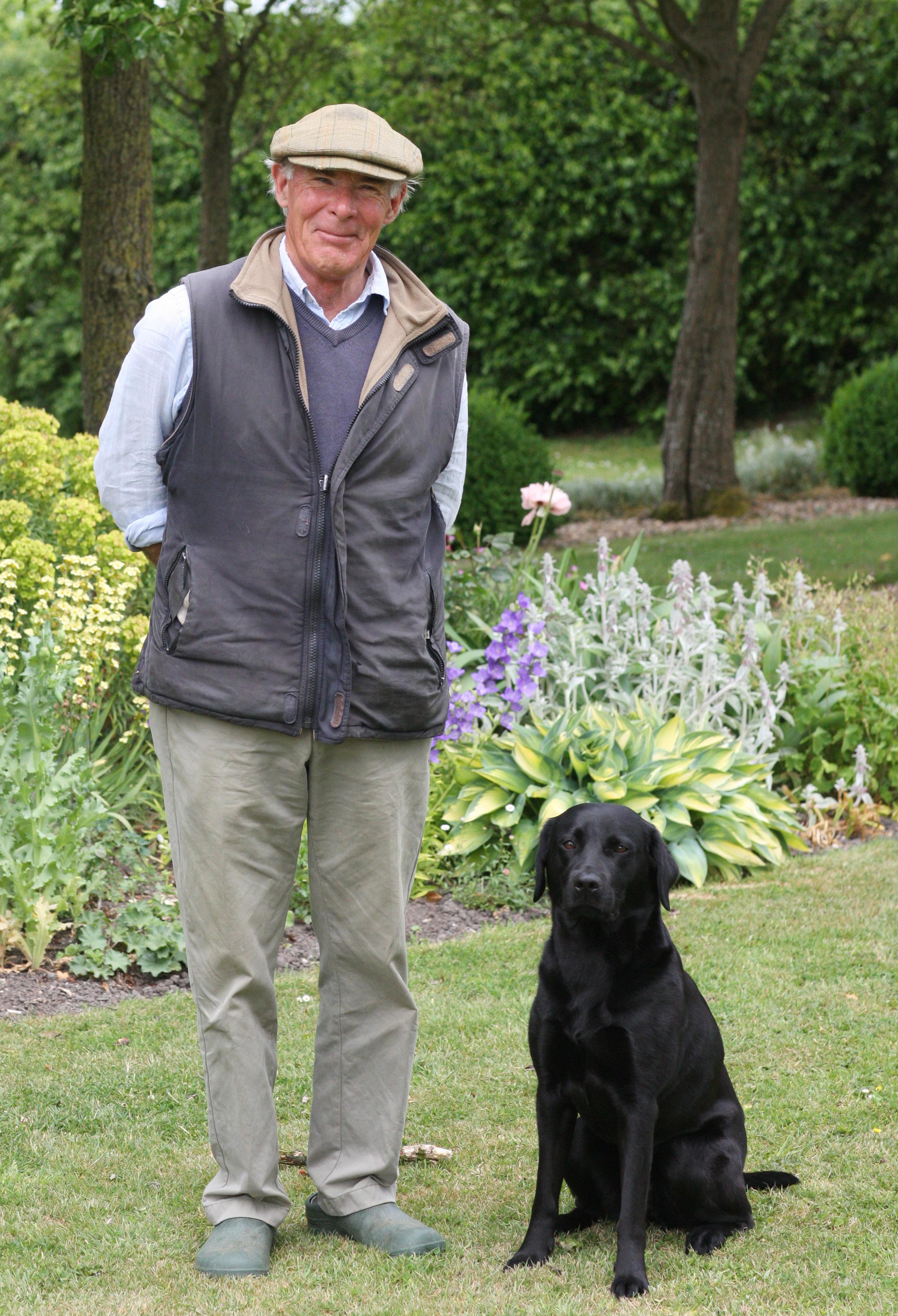


he also oversees the British Army polo teams – managing riders, securing sponsorships, facilitating training and accompanying teams to international tournaments. It’s a role that has taken him from Mongolia to Malaysia, Pakistan to Moscow.
Closer to home, August and September are dominated by country shows, stacked backto-back across the south. His office is part travelogue, part regimental archive. Silver trophies sit beside elegant horse sculptures, alongside photos of polo teams in farflung corners of the globe. The rest of his office is stacked with commentary scripts, folders and paperwork meticulously laid out in regimented rows: his military discipline of 36 years is showing. A graduate of Sandhurst at just 19, Second Lieutenant Ledger’s first assignment was Northern

Ireland. ‘I grew up quickly,’ he says. ‘My troop were sons of Yorkshire miners – tough as teak. There I was, a public school “posh boy”. They didn’t mince their words – invective is probably the polite way of putting it. But they looked out for me and taught me humility. That camaraderie

still moves me. I’m in touch with many of them even now.’
A tour in Germany followed, where Simon traded in ‘his rotten old car’ for £500 and bought his first polo pony. He became a hired hand around the army polo circuit and began to dabble in commentary. His ability to communicate didn’t appear by accident: ‘During my Gunnery Officers Course at Lulworth, I had to memorise a 90-minute lesson on every single part of a gun,’ he says. ‘It taught me how to use my voice to emphasise key points, how to stand confidently before an audience, delivering a structured story with a beginning, middle and end. That discipline is exactly what I use when I commentate.’
Away from the ring
Long before the gates open to the public, Simon is already walking the showground: ‘It’s important to get the human stories across to visitors, so I like to take time to meet the exhibitors and get to know about them and their animals.
I hope my commentary inspires visitors to find out more about the things they see. It’s also vital to thank the show sponsors and put them in the spotlight – their generosity is crucial.’
The job does have its glamorous moments: Simon regularly commentates at polo events attended by diplomats, politicians and royalty.
He’s particularly close to Indian politician and diplomat Maharaja Gaj Singh II of Jodhpur – ‘a great friend’, Simon says. ‘I’ve taken Army teams to him many times.’
He’s especially proud of his fundraising work for the Indian Head Injury Foundation, set up after the Maharaja’s son suffered brain trauma in a moped accident: Simon’s skills with a gavel have so far raised more than $3 million through charity auctions.
Closer to home, he reestablished the Dorset Yeomanry in 1997 as a charity supporting territorial servicepeople – reviving a tradition dating back to 1746. Even after ten hours in the commentary box, that military discipline never wavers. ‘I must
Quickfire questions:
Commentator moment?
‘I was commentating at the prestigious Rundle Cup, between the Army and Navy: my border terrier would always sit with me in the commentary box. Having told the crowds in my sternest commentator voice that all spectators must keep their dogs on a lead, the very next thing I see is a dog tearing towards Prince Harry and his
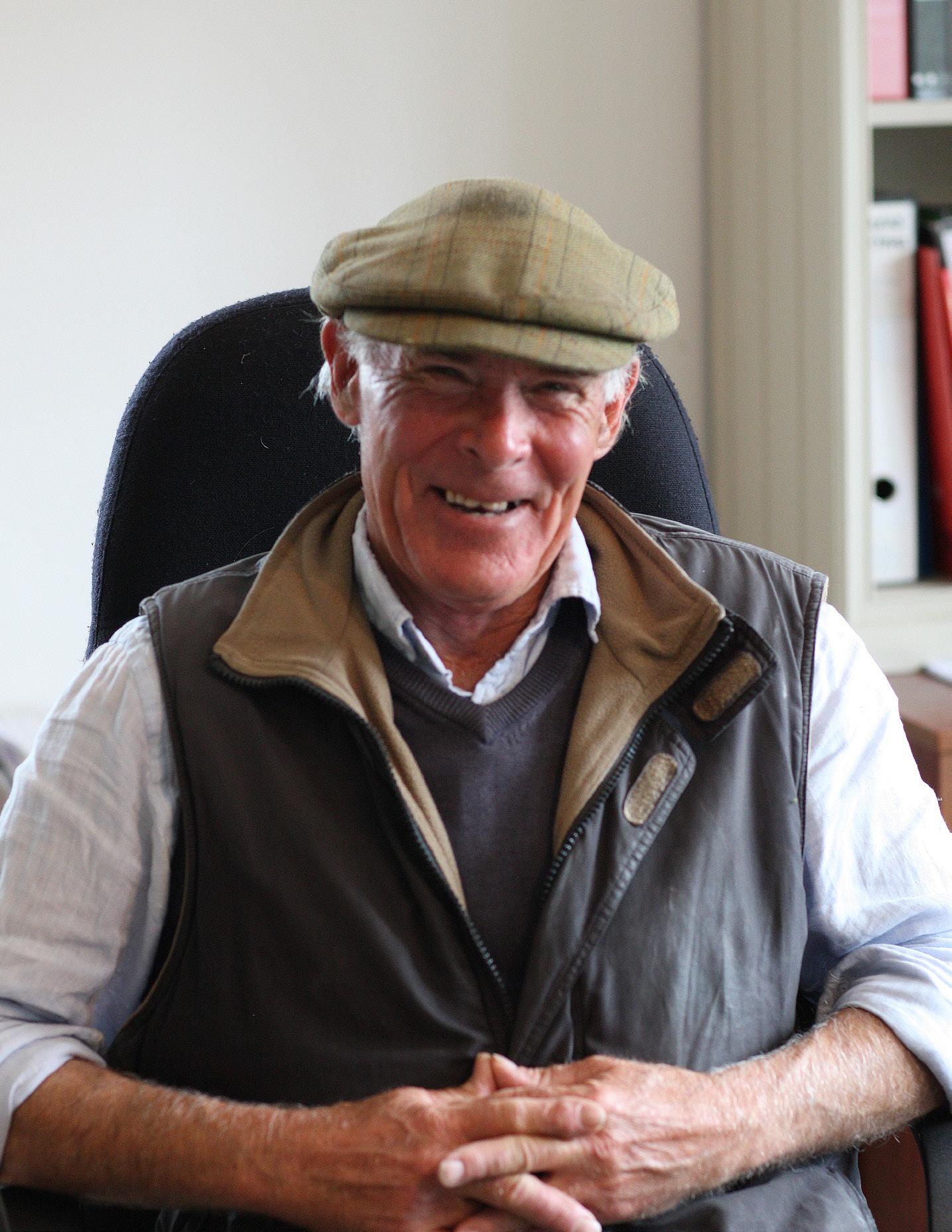
concentrate, get my facts right and ensure the schedule runs smoothly. I pace myself and drink plenty of water – never alcohol. And then after a long
polo pony: “Would someone control their dog!” I yelled ... only to discover the runaway was mine! There was a lot of humble pie ...’
Book by your bedside?
‘I’ve got two Dick Francis’ on the go. I’ve never had the bravery or fitness to become a national hunt jockey, but love it as a sport.
‘Also Exmoor Farms – A Year on the Moor by Victoria
day in a hot commentary box, I go home, run a bath and check my notes so I’m ready for the next day. It’s exhausting – but I love it.’
Eveleigh: it’s a beautiful book charting a farming year on Exmoor.
‘I also keep a diary of birds I see – I love bird spotting.’
A-list dinner party guests?
‘William Wilberforce – a man ahead of his time. Admiral Sir Barington Reynolds, who went to sea at nine years old and played a major role in the destruction of the African slave trade.’



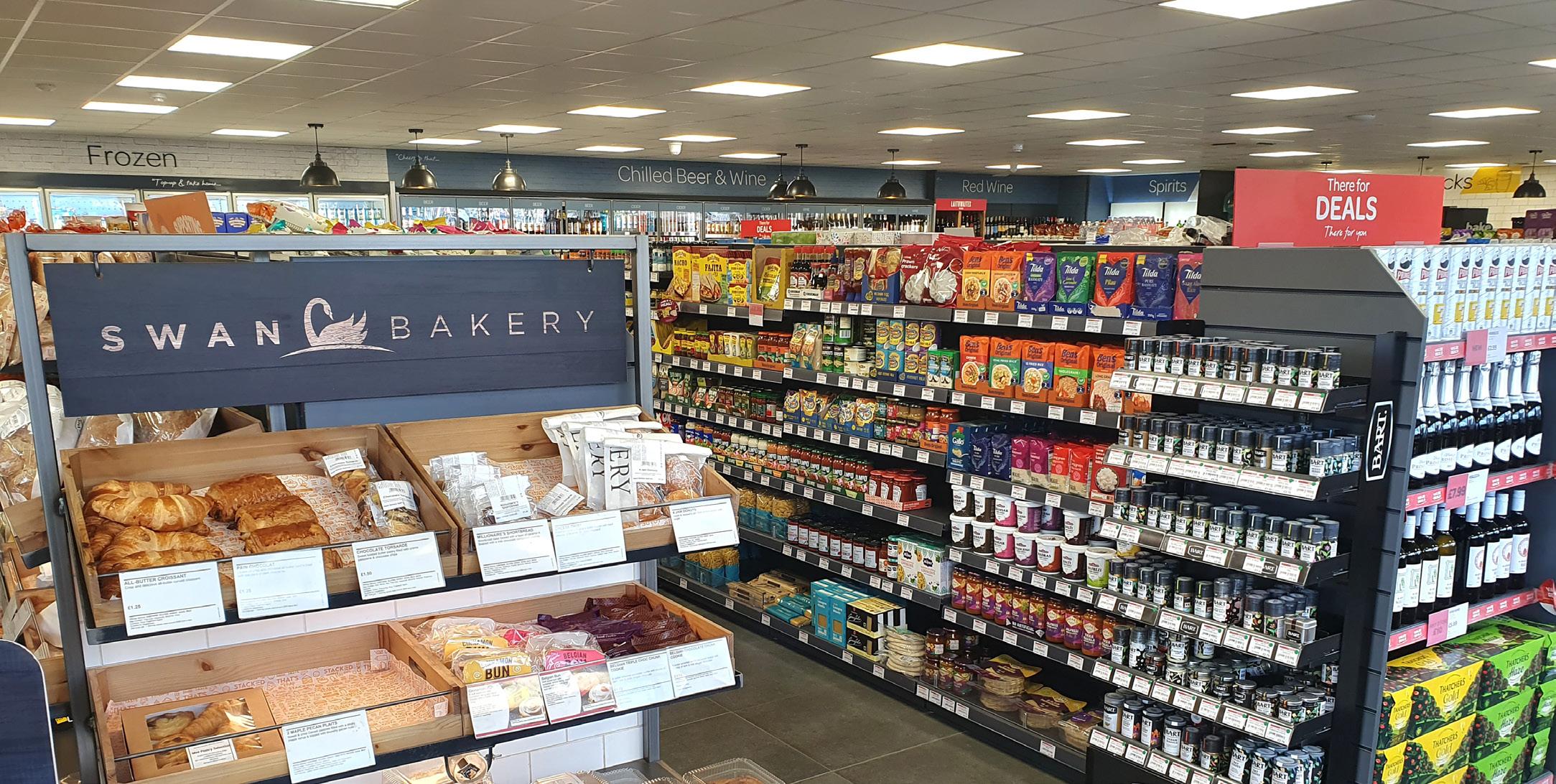
North Dorset CPRE’s Rupert Hardy visits Hawtree & Sons Riverside Garage – the family business that’s busily defining rural retail
After the brief COVID-era reprieve, when shoppers turned to their local stores and village shops rediscovered their value, long-term pressures on rural retail have returned with force. Discount chains like Aldi and Lidl have fuelled an ongoing price war. The shift to online grocery shopping favours the giants. This year, steep rises in the Minimum Wage and National Insurance contributions have squeezed margins across the board. And with energy, insurance and other costs rising faster than inflation, many independent retailers face increasingly tough decisions. So what is it that makes a rural shop thrive, rather then simply survive?
Larger stores have natural advantages. More shelf space means a broader product range. Some have diversified with cafés, attracting footfall and offering higher-margin sales. Many now prioritise local and sustainable produce – something the CPRE has long championed. Dorset has many high quality local food and drink producers. Some independently-owned village stores can also be run more professionally., which was not the case some years back when too many amateurs bought village shops to run as collectives. Other stores have joined large symbol groups like SPAR, benefiting from the greater buying power and marketing support. A few – like Hawtree & Sons Riverside Garage in West Stour – have done all of the above, and then some.
From garage to flagship
The Hawtree family has run the SPAR forecourt
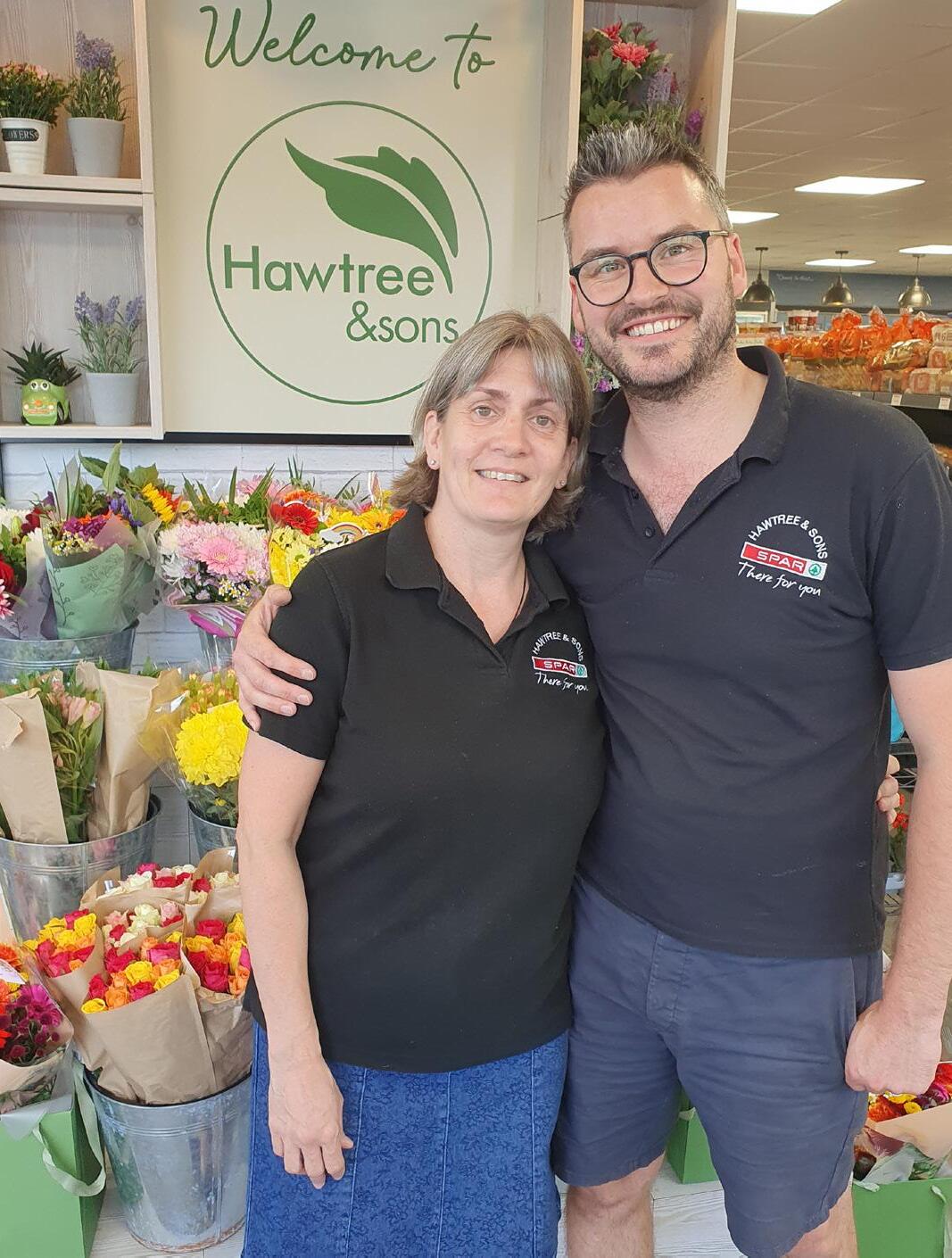
store and garage at West Stour since 1988. Today, the second generation – brothers Seb, Paul and Tom – run the business, with Seb leading the team at Riverside and Tom managing their second SPAR store in Marnhull. The Riverside site sits on the A30, surrounded by ten villages without a single community shop.
It was the community response during COVID that changed everything: customers rallied behind the store and the Hawtrees responded by offering free deliveries to pensioners and disabled residents. That shift – from a transient, roadside clientele to a loyal, local customer base – proved transformative. In 2023, the family unveiled the newly-expanded Riverside site, now the largest SPAR in the South West. It’s a store that comfortably blends SPAR’s national support with local autonomy – allowing the Hawtrees to fill their shelves with lots of quality local produce such as The Real Cure charcuterie and Wilton Wholefoods.
At the same time, SPAR’s own basic range offers a price-point close to the supermarkets – essential in a cost-conscious community. There are also plenty of reasons to linger: fresh bakery items, chiller and frozen food cabinets, a strong ‘food to go’ offer including takeaway coffee and ice cream machines, and even fresh flowers.
They don’t do online shopping – but they are active on Facebook. And rather than rivalling the nearby Udder Farm Shop, Hawtrees complements it – the two businesses attract different shoppers.

offer, which includes a jet-wash, launderette, dog wash and courier lockers. EV charging and DIY car valeting are coming soon. Notably, the petrol prices are competitive. This approach hasn’t gone unnoticed. Hawtree Riverside has twice won the SPAR Convenience Retailer of the Year for the South West, and in 2024 was runner-up in the Countryside Alliance’s Village Shop category. This year they are a finalist at the Forecourt Trader Awards, and they are finalists for the prestigious Retail Industry Awards 2025.
We treat every customer as a guest
Both Seb and Paul previously worked for Waitrose – a grounding that has clearly influenced their customer-first approach. They’ve introduced queue management to keep tills flowing, and Seb is adamant: ‘We treat every customer as a guest.’ That ethos carries through in the shop’s glowing online reviews, which consistently mention attentive, helpful staff. The family briefly ran a café, but now the focus is on broadening the garage
Of course, the business faces the same headwinds as other retailers. Staff costs are rising, shoplifting is a growing concern, and they’ve had to become more creative with sourcing to keep prices under control. Solar panels are already helping offset electricity bills. And while a café may return one day, it will depend on improved consumer confidence. The Hawtrees are also exploring the potential for a small business unit on-site – and they haven’t ruled out acquiring another forecourt in the future. It may look like a service station from the road – but inside, Hawtree Riverside is a true village shop in all but name. Rooted in its community, stocked with the best of Dorset produce, and managed with a professionalism that puts many high street names to shame, this is rural retail done right.
• Hawtree & Sons Riverside Garage Mon to Sat 6.30am to 10pm Sunday 7.30am to 10pm @HawtreeandSonsSpar on Facebook
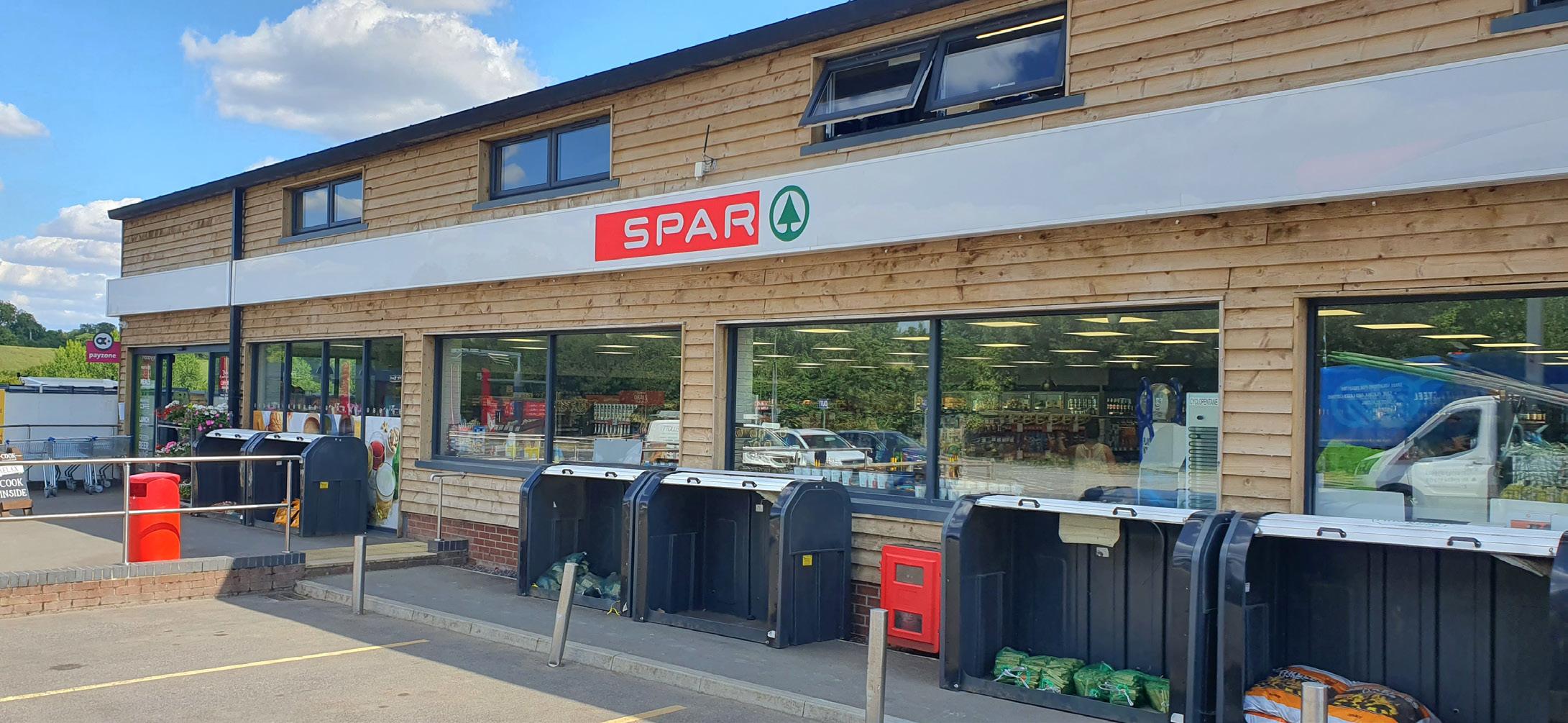
The store extension which opened in 2023 made Hawtree the the largest SPAR in the South West

This month Barry Cuff has chosen two perfectly-timed summer holiday postcards from the 1970s.
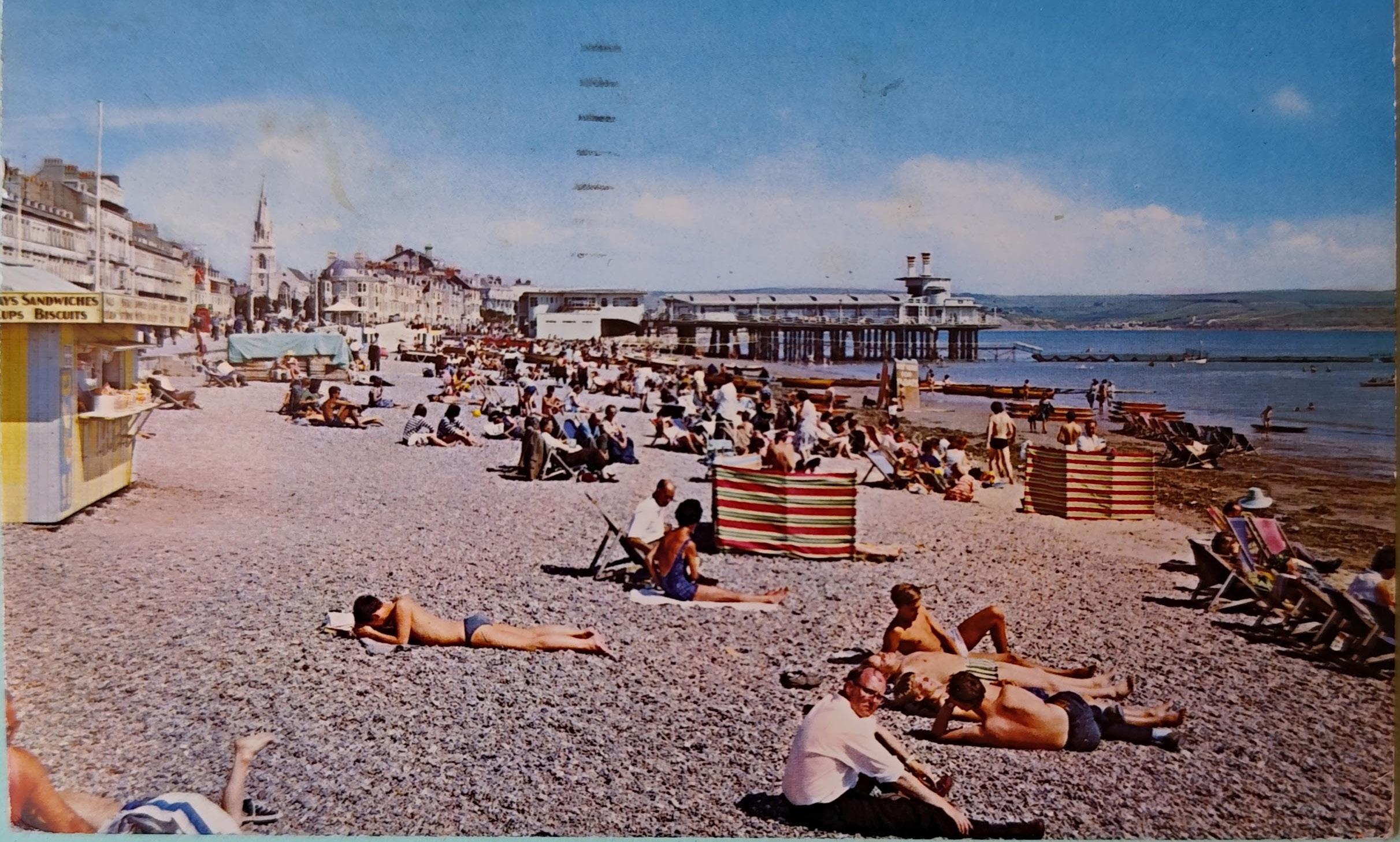
Postcard sent to Herne Bay in Kent, on 17th June 1973 – I’m fascinated by the chap in the foreground looking VERY hot and bothered in his shirt and trousers, socks and shoes among all the sunbathers!
Weymouth - Monday. Dear Mum & Dad, Although we’re coming home on Wednesday, we’re still enjoying ourselves in the tent life. We’re both looking well - Sue’s got a red nose & I had to buy a hat to protect my scalp. Haven’t shaved yet – getting quite bristly. Sun has been very warm & we’ve been on the beach most days. Sea is still a bit cold but we’ve been in most days – only for a paddle sometimes though!! We’ve done all the local high spots like playing golf – Sue beat me yesterday – & the amusements. Going Go Karting today. See you later in the week. Love Sue & Rex xxx
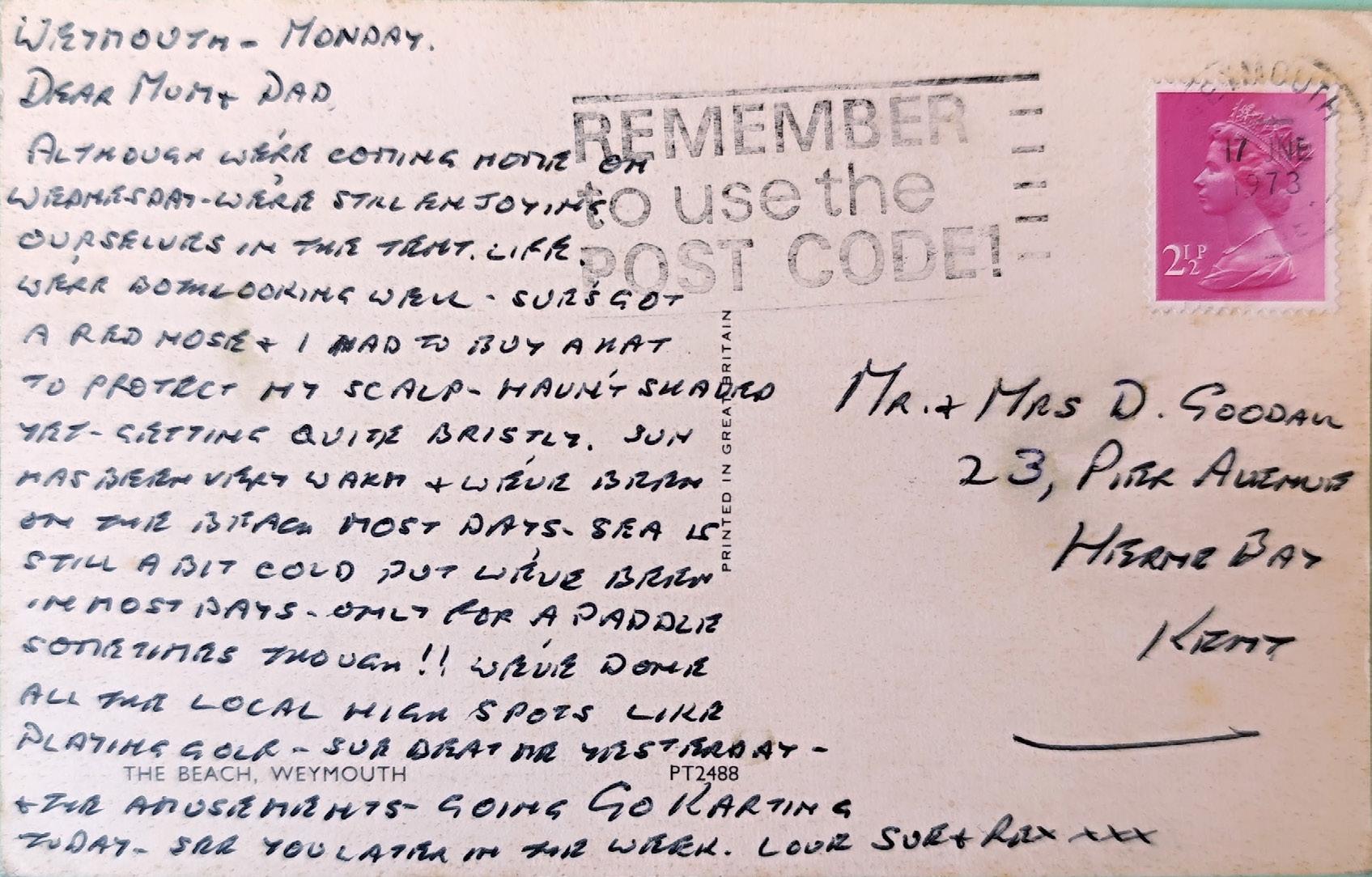
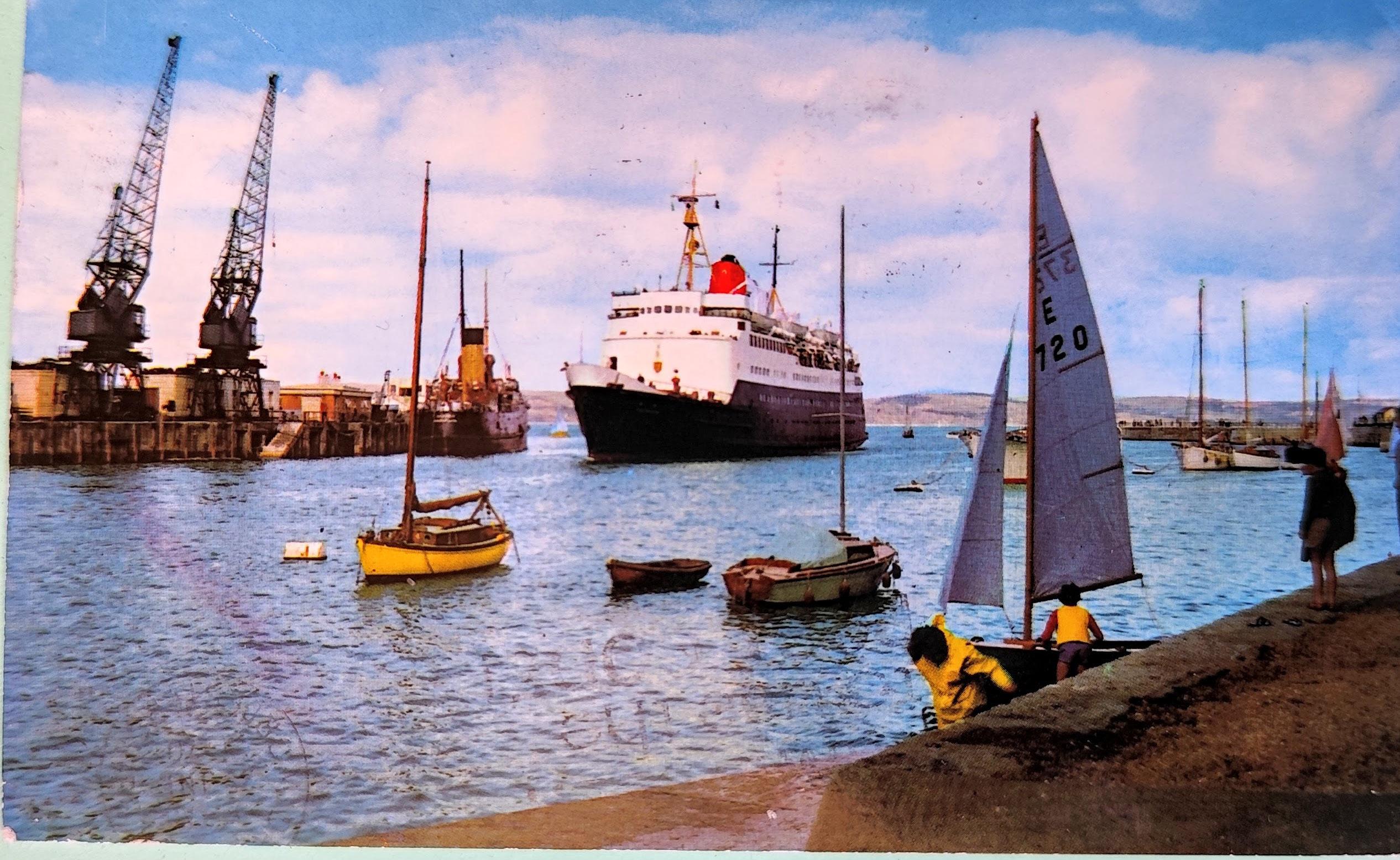
Postcard sent to Fernhill Heath, in Worcester, on 23rd June 1970 (lovely to see that Maud, in 1970, is thrilled with a coloured television at the hotel!). The card shows the SS Caesarea, which was a British Rail cross-channel ferry that operated the Weymouth to Channel Islands route, including Jersey. Built in 1960, the ship was one of the last traditional passenger steamers constructed for the Channel Islands. The coming of the car ferry to the islands in 1973 sounded the end of the classic service: Caesarea made her final scheduled sailing to the islands in October 1975.
23/6/70 Fairhaven Hotel, Esplanade, Weymouth.
Dear Edie & Bill, Having a nice time, weather warm and dry, but rain Monday. Hotel excellent, nice bedroom with Radio, Lounge, Coloured telly, and Lounge Bar separate. Hope you are both feeling better. Lovely this morning. Love from Maud
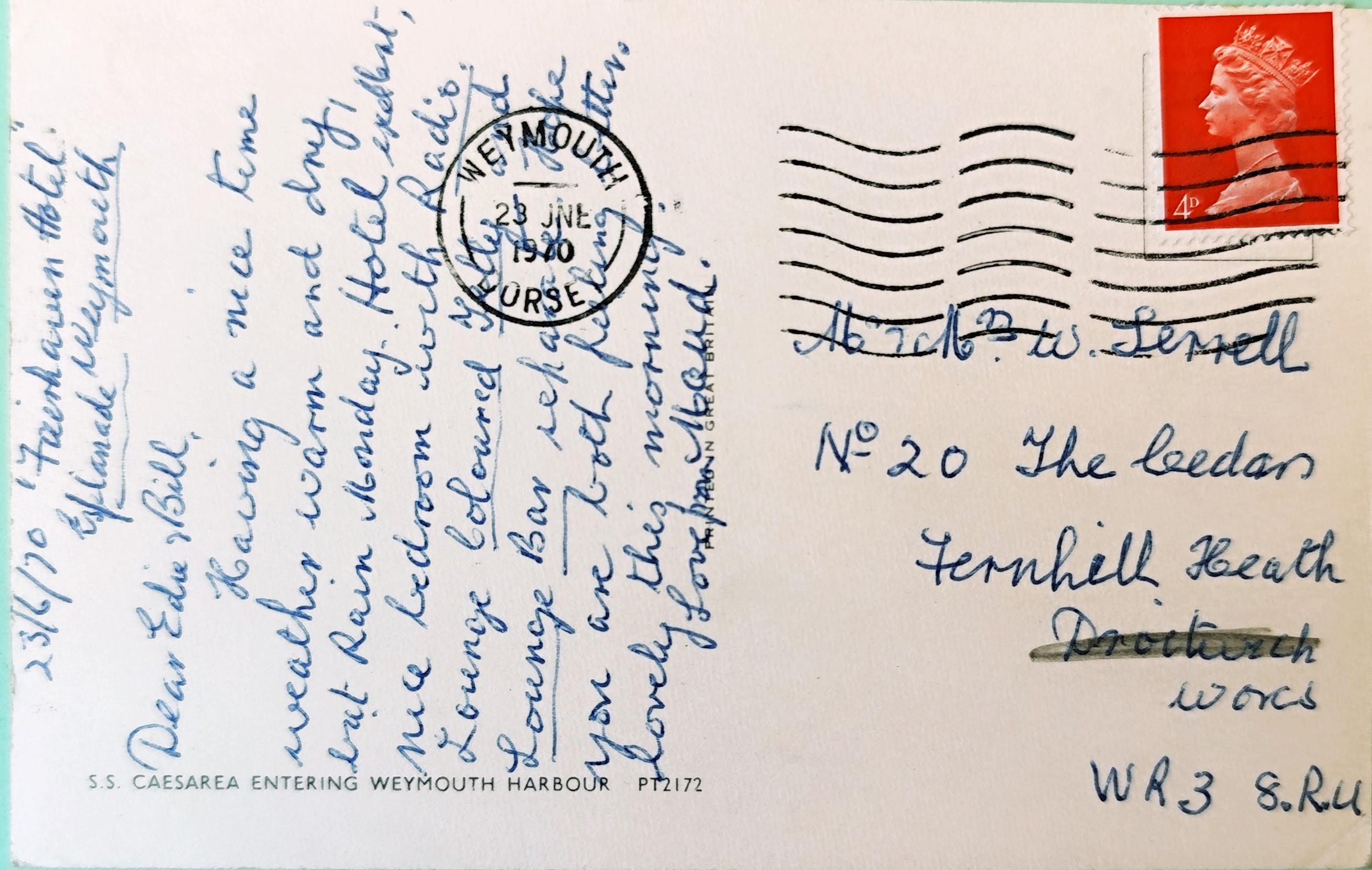

We love pairing a vintage postcard with a photograph taken in the same spot today. Alongside the postcards, we feature a newspaper article from a similar time and place – a little glimpse of life when the card was posted.
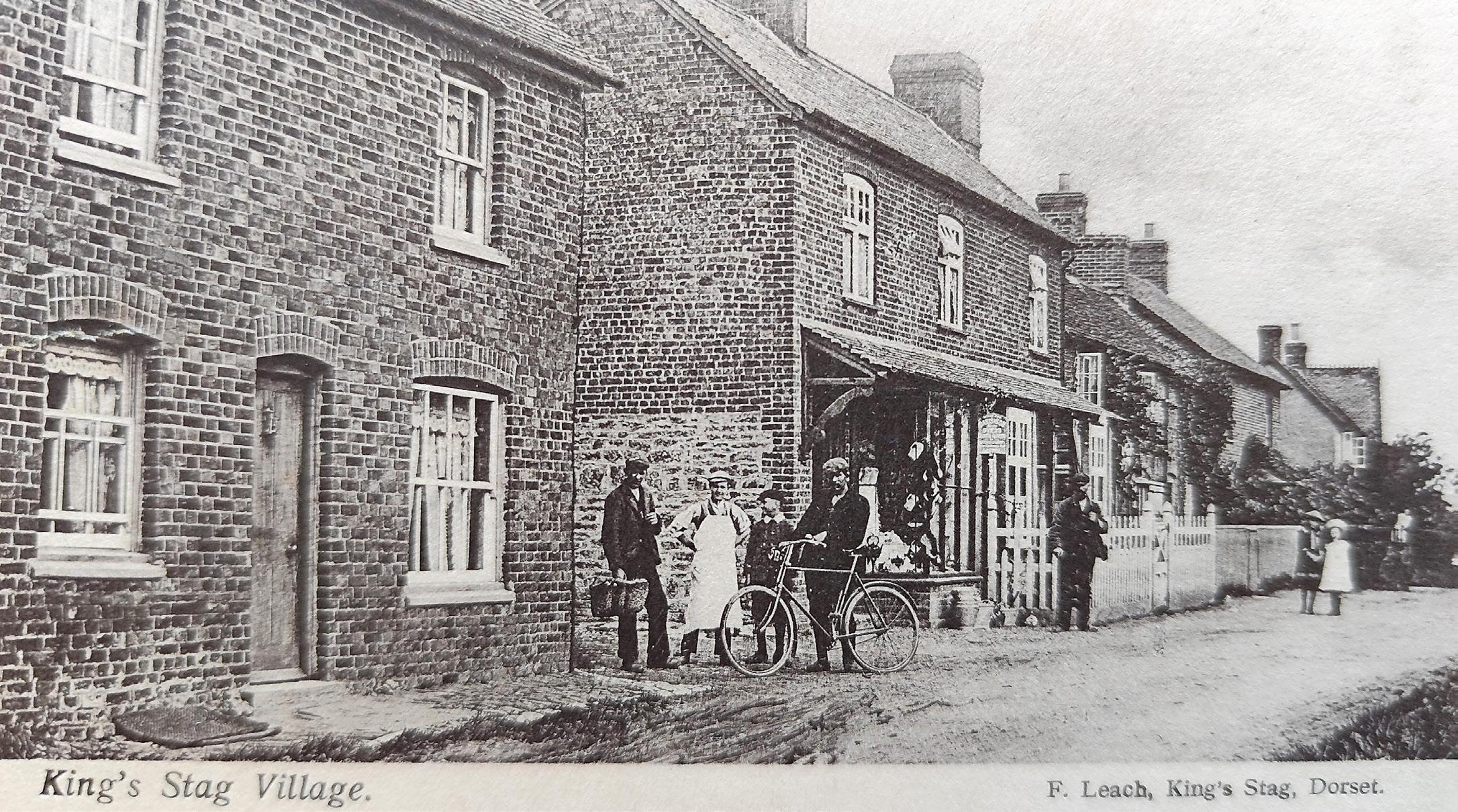
ENTERTAINED HOLWELL. — On Tuesday a féte was held at Holwell in a field kindly lent by Mr. Coffin. This is the second féte that Mr. A. F. G. Trim, the wellknown land dealer, of Yeovil, has generously given for the entertainment of the parishioners of his old parish. Tea and refreshments were provided gratis in a large marquee, and the catering was efficiently carried out by Mr. C. A. Ford, of Sherborne. The Sherborne Town Band discoursed excellent music during the intervals. The weather was beautifully fine, and a most enjoyable time was spent in witnessing the varied sports. Mr. Herbert’s steam musical roundabouts
from Winchester had been specially engaged, and these gave much pleasure to the young people, who were given free rides upon the horses at Mr., Trim’s request. A few pony and donkey races were arranged, and some excellent racing took place, considering the limited space available. The general public had been specially invited, and they attended in large numbers from far and near. The steam roundabouts, swings, cocoanut shies, and houp-la shows were well patronised.
There were also foot races for adults and children, tug-of-war, obstacle races, &c., for which good prizes were awarded by the generous donor.


The ladies were not forgotten, and several races were held for their special benefit. A singing competition took place, and every competitor was obliged to hold a small pig (in arms) while they held forth in song. This event caused endless mirth, especially when the porker squealed its disapproval of being thus exhibited. Prizes were given for the best songs, the judges being Mrs. J. Stevens, Miss Vera Stevens, Mrs. Mogg, Mrs. Percy Rowland, and Mr. V. Marden. The first prize was won by Miss Stock, the second by Mr. Linterne, and the third by Mr. C. Rowe.
A baby show was included, and there were many entries. The judges were Mrs. E. J. Stevens, Mrs. Percy Rowland, and Mrs. Mogg, who, after careful consideration, awarded the first prize for six-months-old babies to Mrs. Barnes, and the second to Mrs. Albert Coffin. For babies over one year, the first prize was won by Mrs. A. Chaffey (Holwell), and second by Mrs. Mogg (Holwell).
A fine display of fireworks, provided by Mr. C. F. Dickinson, of Shaftesbiry, took place during the evening under the supervision of Mr. V. Marden, Mr. Percy Rowland, and Mr. A. G. Nobbs. The committee who worked hard to make the fete a success were Messrs. A. Coffin, H. Coffin, W. Dredge, John Cole, J. Veall,
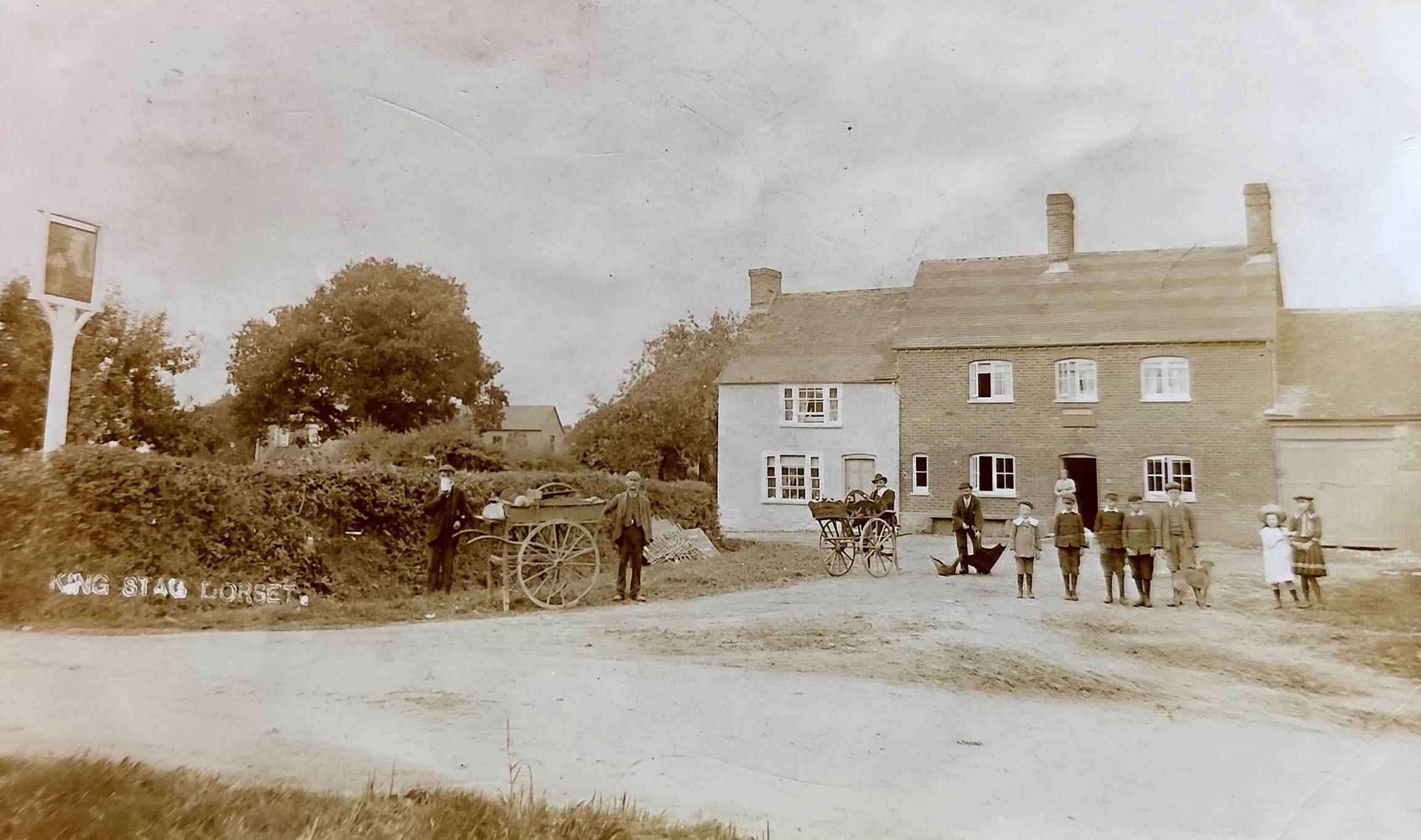
Mrs Gibson (schoolmistress), Mr. E. Harvey, Mr. Humby, and Mr. G. Feltham. A great deal of the success attained is due to Mr. and Mrs. Mogg, Miss Mogg, and Mr. Howard Mogg (King’s Stag) for the hearty manner in which they helped to organise the proceedings. Many personal friends of Mr. Trim also helped in various ways to make the fete go with a swing. The general opinion was that it was a first-rate affair, and everyone undoubtedly enjoyed the afternoon and evening’s relaxation.
During the evening Mr. R. J. Stevens proposed a hearty vote of thanks to Mr. Trim for his great kindness in providing such excellent sports and for the hospitality shown to all. The vote was accorded with three cheers.
Mr. A. G. Nobbs, on behalf of Mr. Trim, thanked all present for the vote of thanks and for the kind expressions used by Mr. Stevens. A vote of thanks was also passed to the committee and to Mr. and Mrs. Mogg.
Police Constable Hayne superintended the field, and was most assiduous in his duties. Mr. Trim, with a desire to create a little innovation, would be pleased if any of his friends and others would kindly give a guess predicting the total number of persons present at the fete during the evening.
Anyone desiring to do this should send their estimate on a postcard addressed to Mr. A. G. Nobbs, of Cerne Abbas. The person guessing the exact or nearest number will be awarded a handsome prize.
*King’s Stag is in what was once known as the Vale of the White Hart, and gives us the legend of Henry III and a white hart that he met while out hunting, mentioned by Thomas Hardy in Tess of the D’Urbervilles as he considers the view across what we now know
as Blackmore Vale. The creature’s beaut so impressed the king that he spared it, and ordered others to do likewise. But the forest bailiff fell foul of the warning, killing the hart on the bridge over the River Lydden, for which he was severely punished: King’s Stag is said to derive its name from the incident. But place-name experts offer something far less romantic – the boundaries of three parishes meet on the bridge, and King’s Stag really means the “king’s stake or boundary post”, they suggest.





•Hedge cutting services
•Hedge
•Hedge & tree planting
• Large or small loads welcome.
•Collection service, or have us mulch it at your property.
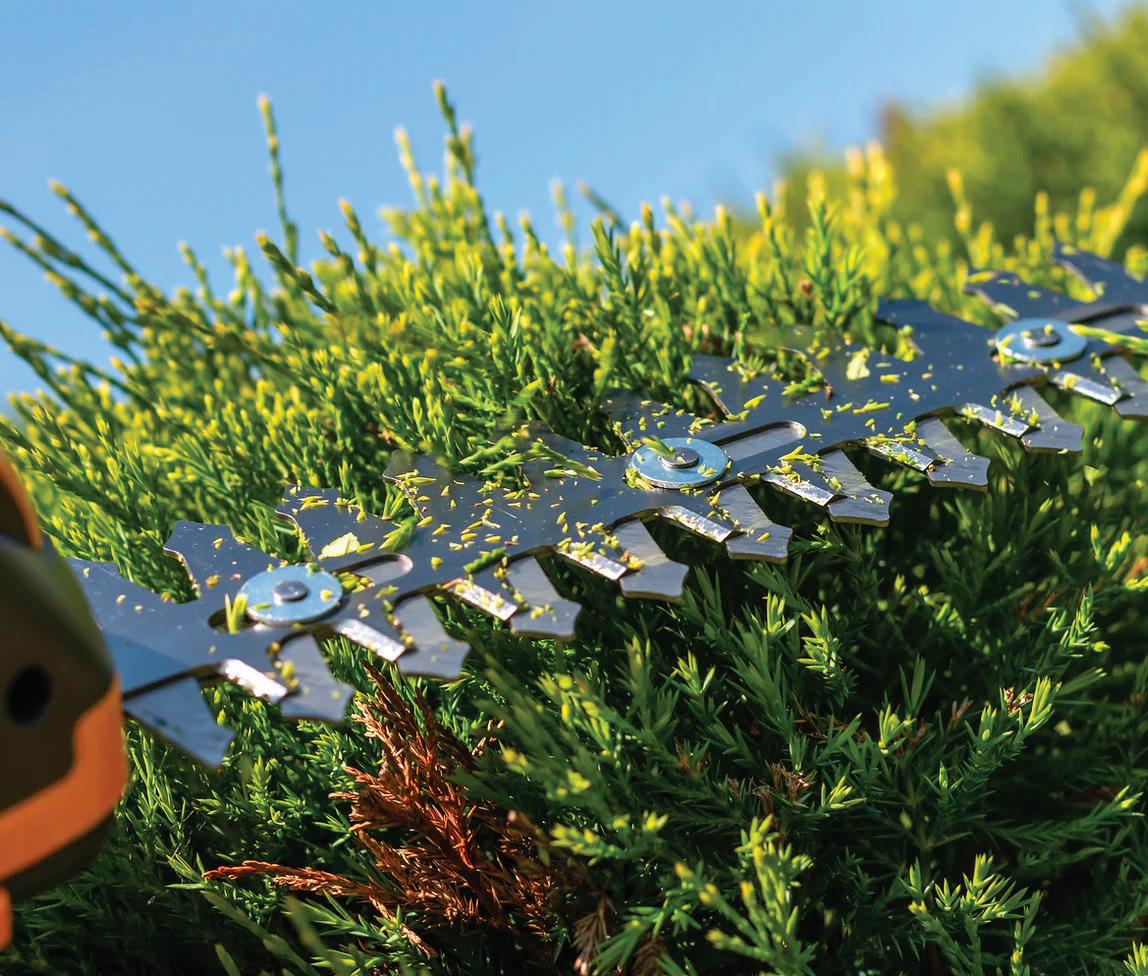
• Professionally installed, or repaired.
• 10 year guarantee!
•Free quotes, fixed rates.
• Based in Shillingstone, we cover all of Dorset, and surrounds.





Importing tomatoes – literally paying for water – from drought-hit Spain is absurd, says Dorset NFU’s Tim Gelfs: ‘food shortages are just beginning’
Water, water everywhere, the saying goes? Well, while writing this we actually have had some welcome rain that will hopefully motivate the green stuff to reappear. Not nearly enough, of course, but a welcome start: fingers’ crossed we will get some more (although, thinking about it, the kids have broken up for the summer holidays now, so of course it will rain!)
The hysterical media coverage of ‘drought-stricken Britain’ and ‘empty reservoirs’ has meant the roses and the paddling pools are all going to suffer with hosepipe bans across the country. It reminds me of the old Morecombe and Wise piano sketch: “We’re getting all the right rain, just not in the right places and never at the right time!”
I see our environment secretary has announced the cleaning up of our defunct water companies, and he did mention something about reservoirs and storage ... we’ll see. I can’t believe we keep being told we are one of the richest countries in the world when our utility infrastructure is an embarrassment, with hardly any long term investment or thinking. But as with all crises, the taps will have to actually dry up before the government’s fire engine comes to the rescue –costing two or three times as much as it should, naturally.
Here in the south west, we can all see for ourselves how a drought affects us. arable crop yields are down, and livestock farmers are already eating into their winter feedstocks. It is costly and doesn’t do the balance sheet much good, but so far we can manage it.
solar farms
The real challenge is for farmers growing root crops, soft fruit and salads – who rely on irrigation to get the right amount of water at the right time to produce a crop worth harvesting. Yet investment in water storage, and in the networks to move water where it’s needed, has been neglected for too long by both governments and the big retailers failing to support vital industry investment. No, they had a better plan: let’s import most of it! And not from countries blessed with an abundance of water, but from Mediterranean countries such as Spain.
... so we can import more water disguised as
fruit. Brilliant.
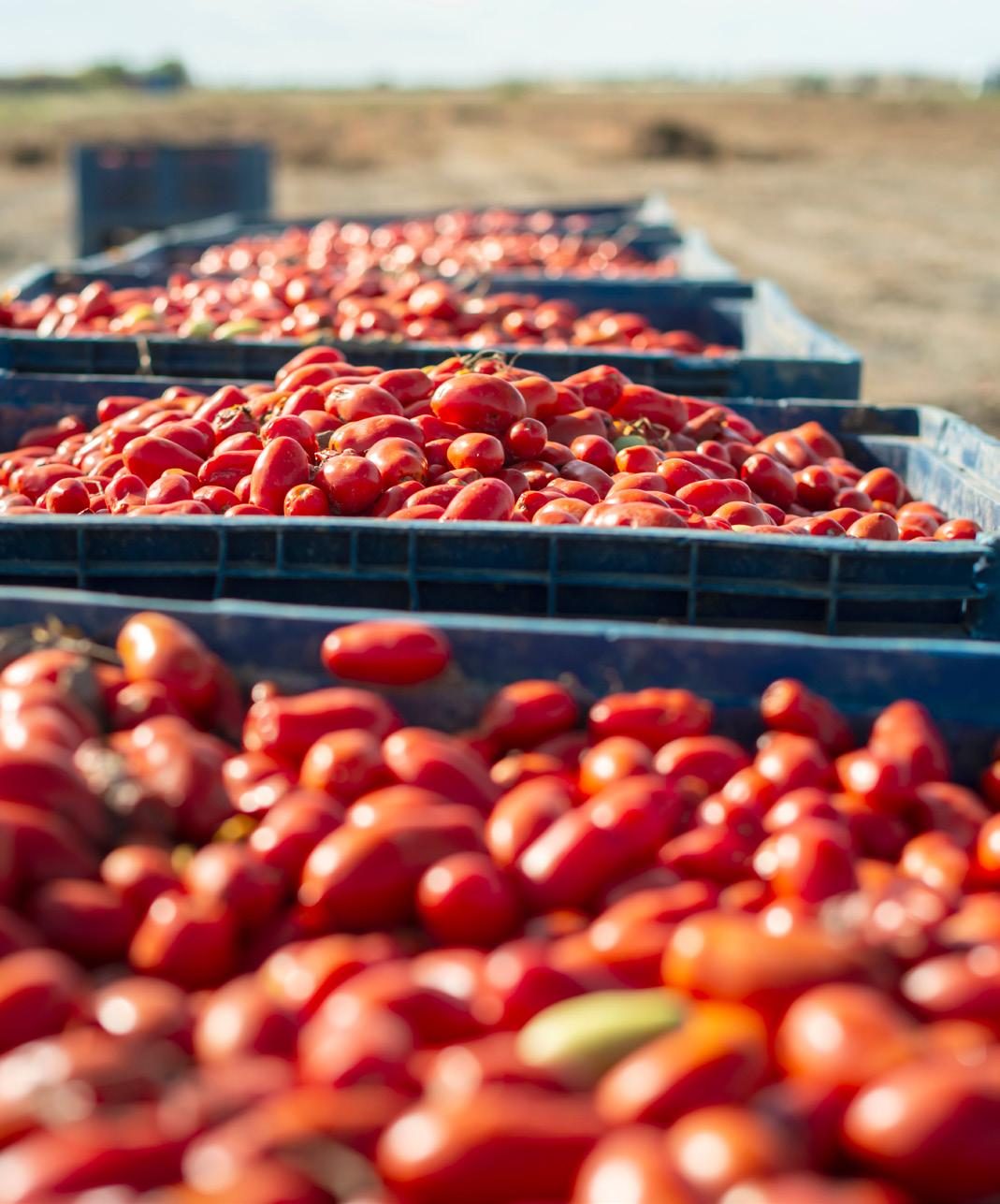
Have you looked at a weather map recently? You think we’ve got problems with water! Just take the humble tomato: we import approximately 400,000 tons every year – well over 80 per cent of our UK market. And guess what? Around 95 per cent of it is water. You really couldn’t make it up. This has to be one of the most expensive ways of importing water into our country.
And where is our illustrious climate secretary when you need him? Of course, he’s championing solar farms on all the land where we could grow our food ... so we can import more water disguised as fruit or salads.
Brilliant.
We are just beginning to see the stresses of water shortages and weather patterns in our shops. I bet all of us in the last few months have been into a supermarket for some veg or salad and found they have been short of something? This isn’t a mistake, or a problem with the ordering, it’s just not available!
Right now we are in the infancy of food shortages, but if we are not going to invest in home-grown food security and instead rely more and more on imports from drought-stricken regions around the world, we had better get used to it!


Striking
All images: George Hosford
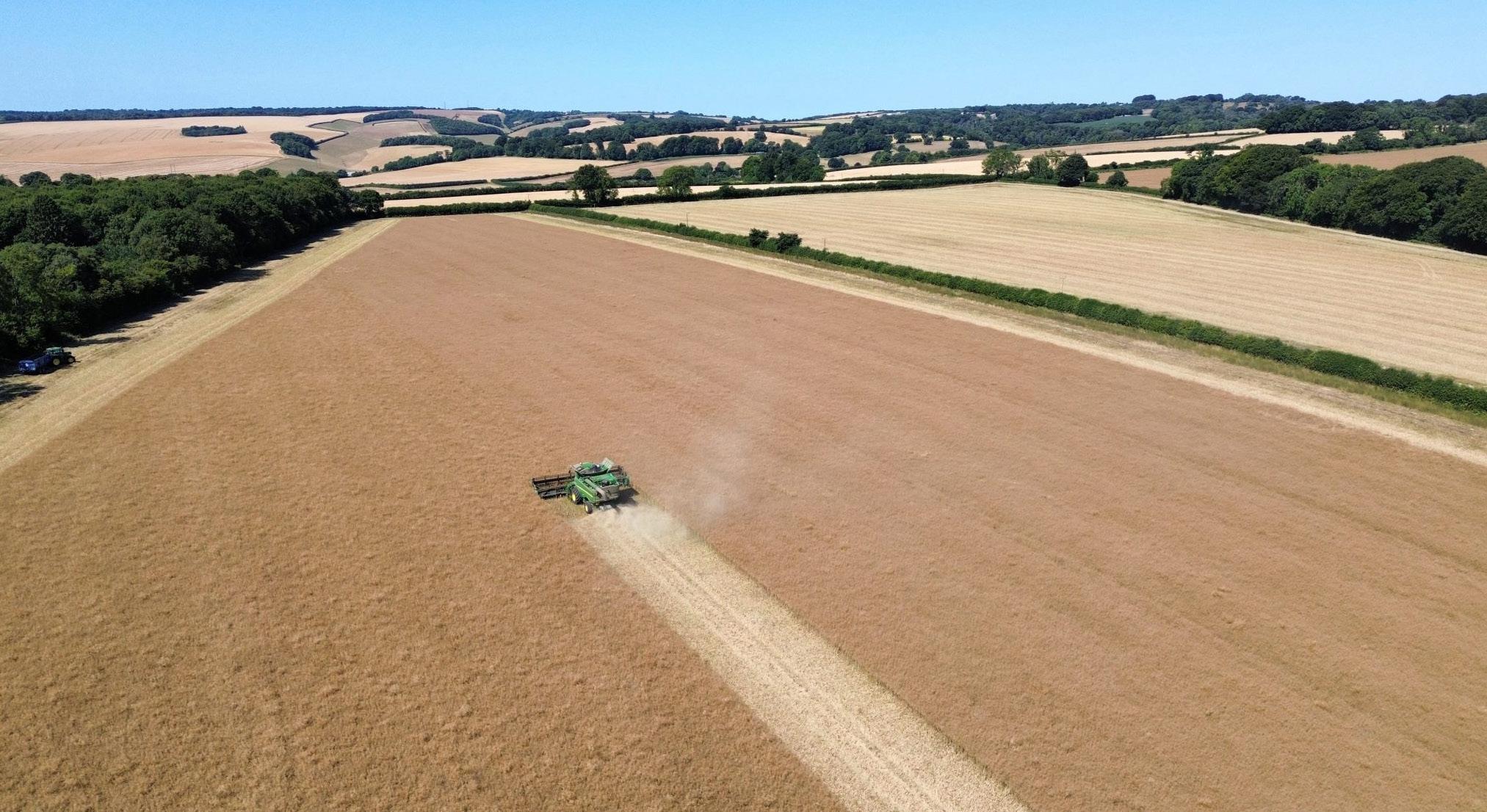
Regenerative farming is full of trade-offs: leatherjackets love ley fields, birds love the worms and schemes shut before you can apply
The picture below, taken last year, shows a group of cows and calves enjoying one of our herbal ley fields – with Theo the bull, head-down mid-picture. I’m including it because it helps explain how difficult it is to marry the soil-improving value of three or four years of grazed herbal ley with the successful return of the field to the arable rotation.
The mix of grasses, legumes and other species in a herbal ley provides a healthy diet for the cows, a vital disease and weed break for the arable crops, a fertility boost from grazing and manuring, and the fixing of free nitrogen by the legumes. All of which are solid pluses.
The tricky bit comes when terminating the ley so that a cash crop can be sown. Winter wheat would potentially be the best-paying option – sown in the autumn – which we tried last time this field came out of ley. But the crop was hammered by
leatherjackets (the larva of the crane fly, or daddy longlegs). These pests love grass fields. The larvae hatch in early spring and munch away at the grass roots below the surface – barely noticed when the grass is growing fast. But in wheat, the result is large bare patches, which are annoying and frankly a bit embarrassing when your neighbours can see them.
Some of those neighbours might suggest this was bound to happen because we insist on direct drilling our crops. But that’s the modern way, isn’t it? Less soil disturbance is high on the regenerative farming list – preserving structure, reducing nitrate leaching, keeping organic matter locked in.
However, cultivation – dare I say even ploughing – exposes leatherjackets to the air, where our feathered friends, especially gulls, can feast on
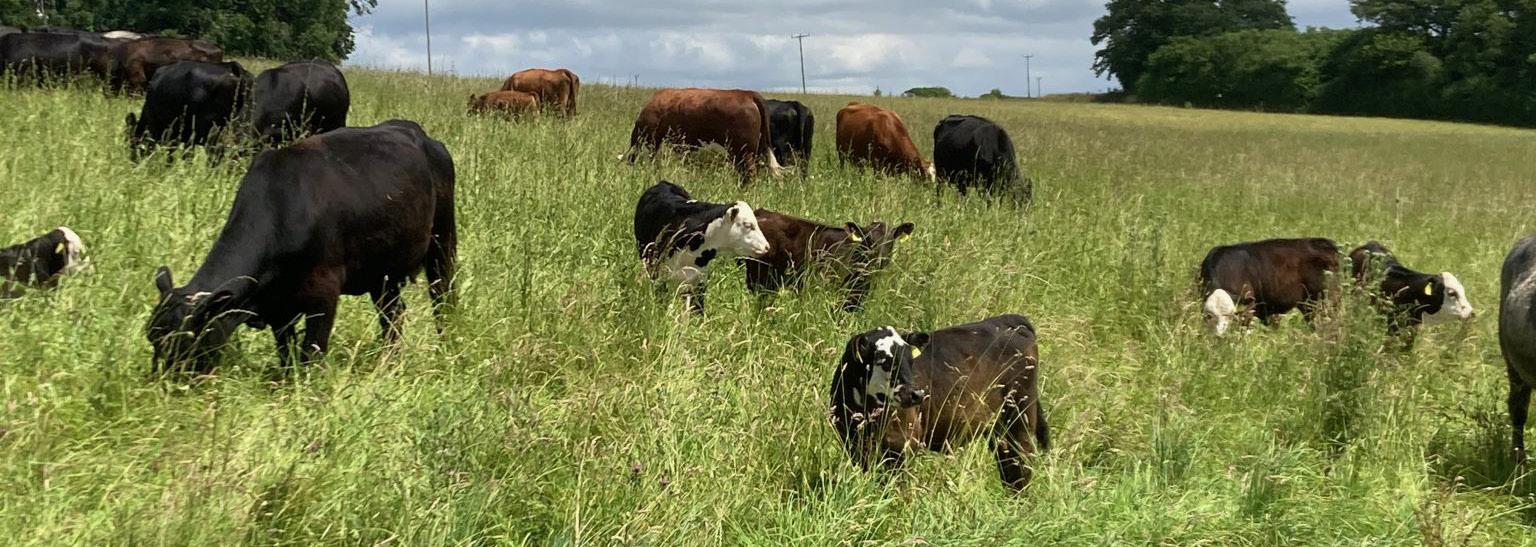
them. Gulls can smell freshly-turned soil from miles away. The downside is that they’ll take worms too – which is exactly why we stopped ploughing more than 20 years ago.
We had a rather lively debate in the farm office earlier this year about how to get Lower Down field back to arable:
• Decision 1: Spring or autumn sowing?
We chose spring, to let the cows stay out longer into autumn without damaging the pasture – since we were going to destroy it anyway.
• Decision 2: Which crop?
Spring-sown wheat or barley would risk wasting the break effect and might still fall victim to leatherjackets. Peas are no good here – too stony. Linseed’s a loser, and spring rape worse. Beans? They were awful last time ... That left oats – maybe with a few beans mixed in. That worked well last year, and if we could claim the new SFI payment for low-input cereal crops, it might even make a profit.*
• Decision 3: How to sow?
To sow two crops together we need the Sky drill. But oats are cereals – would they be hit by leatherjackets like the wheat was? Should we at least consider some cultivation? But if we do, birds will turn over the clods as soon as it’s sown and rolled, leaving an exposed, drying seedbed. Ploughing would bury the turf completely … In the end, we sprayed off the ley with glyphosate and drilled the seed mix directly into the browning turf. The Sky drill did its thing, cutting through and placing the seeds.
The dry season hasn’t been kind to the beans, and the oats struggled with competition from some of the herbal ley species that weren’t fazed by glyphosate. Being a bicrop, our weed control options were limited. Watch this space to see what we do next time.
Our farmer cluster group finally achieved its longhoped-for goal of paddling a stretch of the Stour on a beautiful evening. We put in at Bere Marsh Farm, Shillingstone, where the team from the Countryside Restoration Trust had kindly cut a nettle-free path to the water. Simon Jones, our intrepid leader for the evening, provided six Canadian canoes (thanks to Bryanston School, where he’s in charge of canoeing) and got us kitted up.
After so long without rain, we weren’t sure what to expect – would we actually be able to paddle anywhere? Reeds, trees and weirs can stop you in your tracks. Sure enough, after Hayward’s Bridge we were straight into a reed thicket. The first couple of kilometres were taxing – fallen trees, thick weeds and overhangs made progress tough. A couple of us had to wade out to help boats through, over or under the blockages.
The local farm cluster canoeing down the Stour
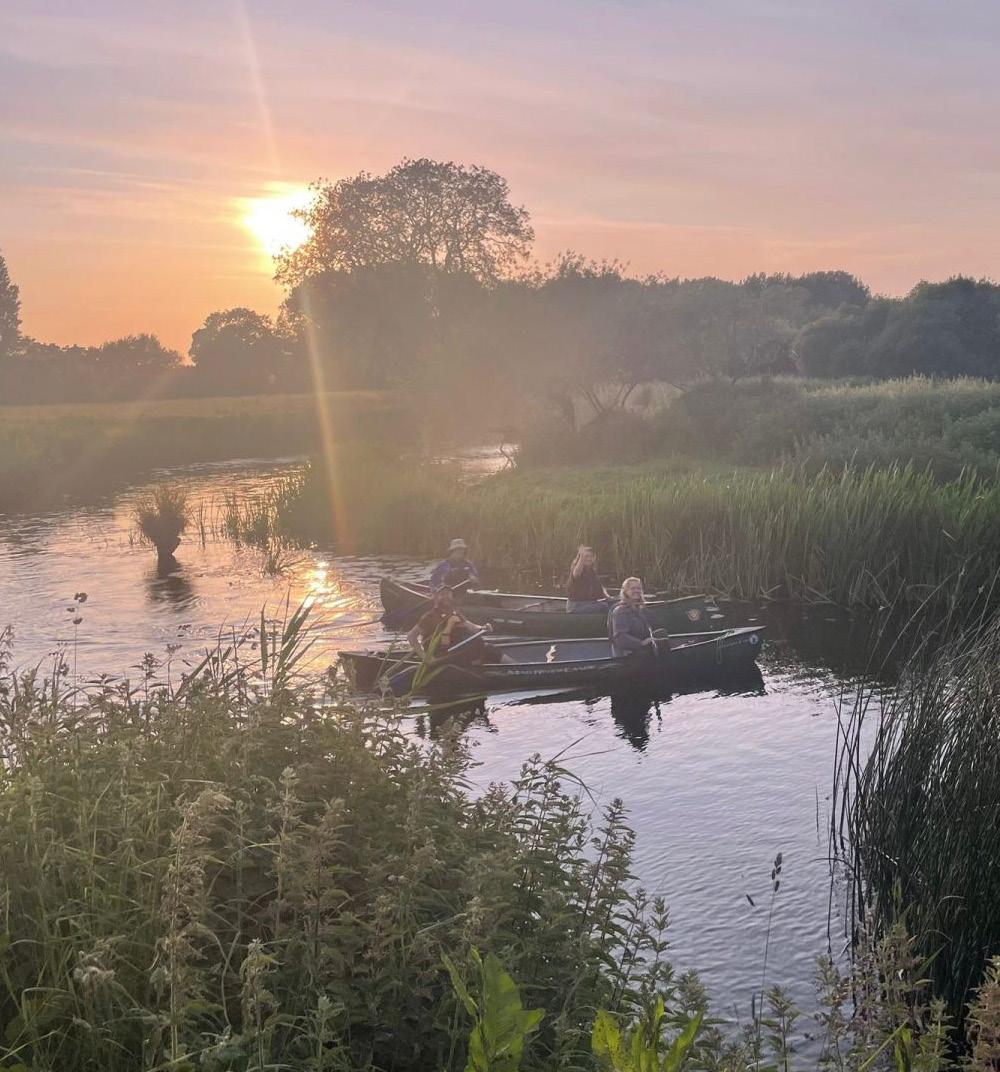
Swans were another concern – we passed at least six – but all without incident. Just one cygnet spotted, which seemed a little disappointing, though one swan was regally perched on a beautiful island nest.
We had a few experts along. The general feeling was that while shade is good for rivers, you can have too much of a good thing – some trees were overhanging the river by 30 feet or more. It’s hard to shake the impression that the Stour is more a chain of stagnant ponds than a flowing river, especially this year. But the water was remarkably clean, perhaps thanks to the dry spell – with no smell or colour at the sewage outfalls. Less rain means less debris washed in from roads, farms and riverbanks (and livestock really shouldn’t be in the river – you have seen what comes out of the back end of a cow, with no warning, right?). There is funding available for fencing intended to keep stock out of rivers.
Finally, a packed sale room on straw day saw prices rise to near-record levels. More than 8,000 acres of straw from across neighbouring counties went under Greg Ridout’s hammer in a couple of hours. A buoyant milk price and a strong livestock trade helped fuel the bidding frenzy, as buyers moved to secure supplies in what’s shaping up to be a lowyield season.
*We sowed the crop. The scheme closed a few days later – before we pressed GO on the application. Many farmers have been caught out by this sort of thing. It’s the kind of nonsense that destroys confidence in ‘schemes’.


by Andrew Livingston
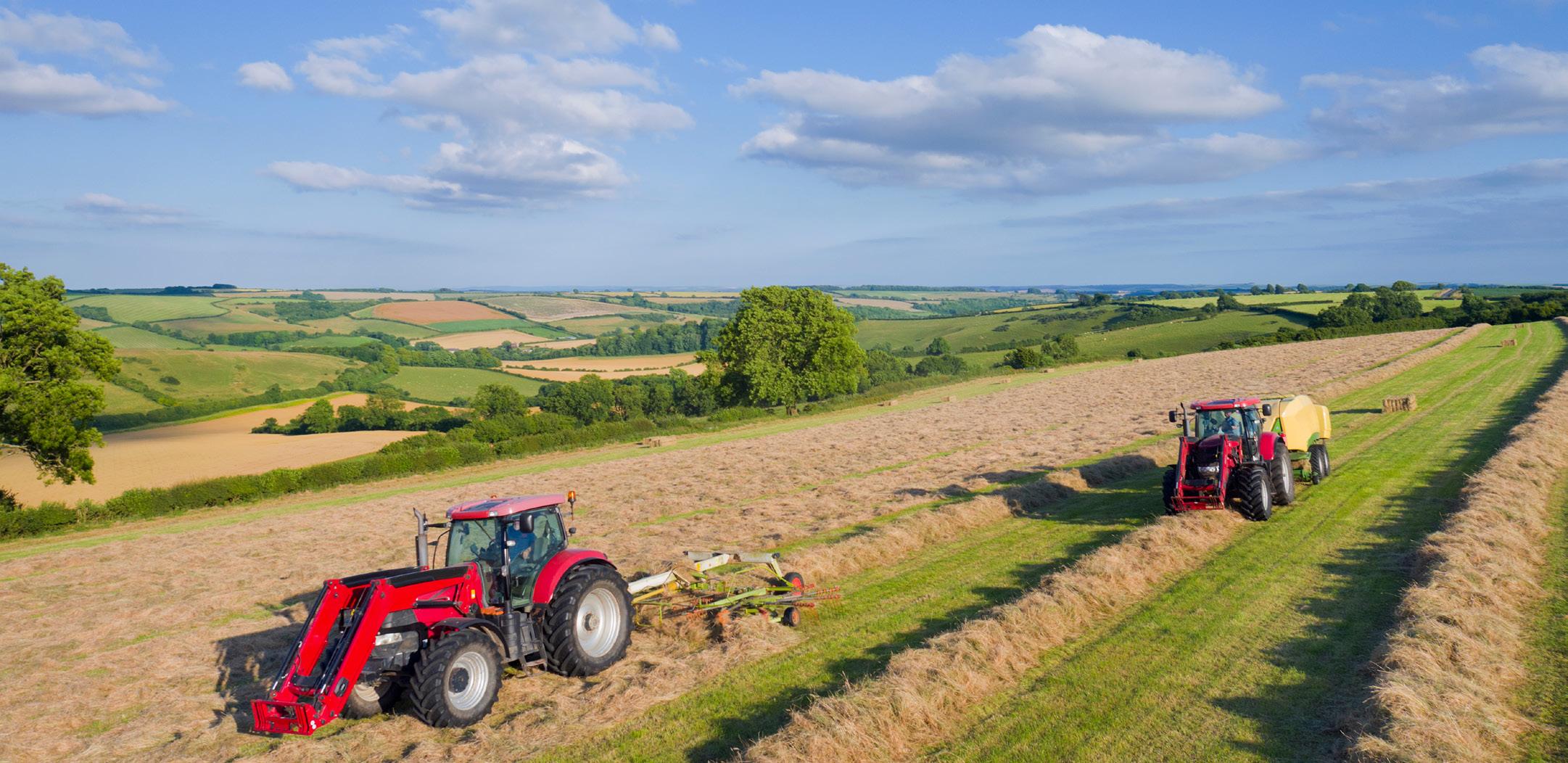
As British farmers warn of suicides over IHT, Trump delivers a rare moment of truth – and exposes Starmer’s deafening refusal to engage
‘We were losing a lot of people to suicide. They’d borrow money to pay the estate tax and they were not able to pay it. And some banks are ruthless – they wouldn’t do anything, and they [the farmers] would end up committing suicide.’ –President Trump.
28th July 2025 has been a momentous day. Donald J. Trump, the leader of the free world, has said something not only momentously sensible, but, honestly, truly profound. Since the autumn Budget last
year, which announced plans to remove inheritance tax protections for agricultural land, farmers have been shouting from their tractors for someone – anyone – to sit up and listen.
And what has been the government’s response?
Keir Starmer and his Labour cabinet have stuck their fingers in their ears and screamed, ‘I can’t hear you!’, as the NFU and farming community warn that farmers will take their own lives over this decision.

Let me be clear: I’m no Trump fan. The only thing worse than his politics might be his golfing ability ... or perhaps some of his more unsavoury past connections. But if he is the only man on the planet who can get Starmer to listen – to take seriously the reality that British farmers may be driven to suicide by the financial pressure of trying to keep their land in the family –then all power to him. If you haven’t seen it, we’ve set it to play on the left. Trump was asked by Beverley Turner, of GB News, for his view on farmers and the impact of the ‘death tax’ –inheritance tax – in a meeting with journalists with the two leaders.
His answer?
‘A lot of these farms, they don’t make a lot of money, but it’s a way of life. They love their way of life and they love that dirt. That dirt is the most beautiful thing they’ve seen.

‘I mean, they are farmers. They love doing what they do. They don’t know how to do anything else, but they don’t want to do anything else.’ It’s not exactly Rudyard Kipling’s If ... but the sentiment is real. And it’s true. Farmers love dirt. They love doing the hard graft that most people in this country wouldn’t even contemplate doing. They don’t do it for money. They don’t do it for fame. They don’t even do it for thanks. They do it because it’s what
they love. It’s what their parents loved. And their parents. And their parents before them.
They do it because it’s what they love. It’s what their parents loved
In May, it was reported that a farmer from Barnsley, found dead in his barn last October – the day before the government’s budget – had taken his own life out of fear for what Rachel Reeves’ proposals would mean. His son told an inquest that he believed his father wanted to ‘beat’ the government’s
proposals and ‘save the farm for future generations.’
Trump finished by saying: ‘We have totally ended the estate tax and those situations – so there’s no death tax.
‘So when a parent leaves the farm to the kids, they don’t have to worry about their local, possibly unfriendly, banker coming in and stealing their farm.’
Well said, Mr Trump. Thank you for giving me three minutes of joy watching Starmer squirm as you spoke of the plight of farmers. How about we don’t Make America Great Again? Let’s just work out how to Make Farming Work Again.

So the madness of summer is upon us: the long working hours and the constant checking of the weather forecast.
After endless months of winter rain, we now find ourselves seriously short of water. The livestock sector is struggling with limited feed stock, and any passing shower or thunderstorm is heartily welcomed. Harvest is well under way, with many having cut a good area before the end of July –unusually early. Yields are varied, depending on soil type and how much rain fell in May and June. All of this puts added pressure on farmers and their teams. Remember: we at the Farming Community Network are always here if needed.
Getting together
In June and early July, we hosted two farm walks, welcoming around 100 people over the two evenings. The first was held at
my own farm in Winterborne Kingston, where Bournemouth University is conducting an archaeological dig exploring Roman and Iron Age rural life. As well as viewing the dig, we discussed current farming practices – balancing environmental schemes with the need to maximise production. Two weeks later, we had a fascinating visit to Hemsworth Farm, enjoying a guided tour of their organic dairy and regenerative farming system. Alongside these, our Walk & Talk
evenings have continued around the county – visiting the Piddle Valley, the Fleet area, Sherborne, Winyard’s Gap and Tollard Royal. Do come and see us at the agricultural shows this summer: we’ll be at Gillingham & Shaftesbury on 13th and 14th August, Melplash on 21st, and the Dorset County Show on 6th and 7th September. And we’re already preparing for our Harvest Festival service at Sherborne Abbey. Book it in your diary: 28th September at 6.30pm.
• bec.fcn@gmail.com
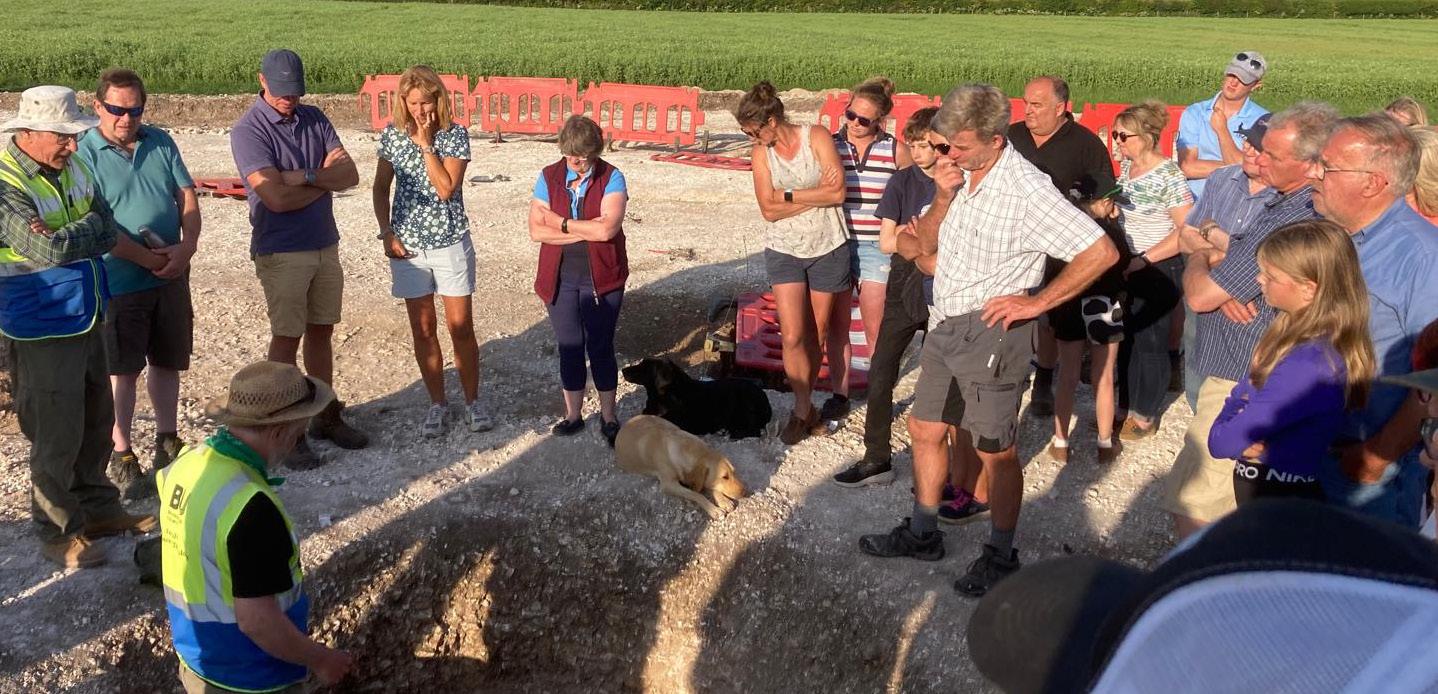

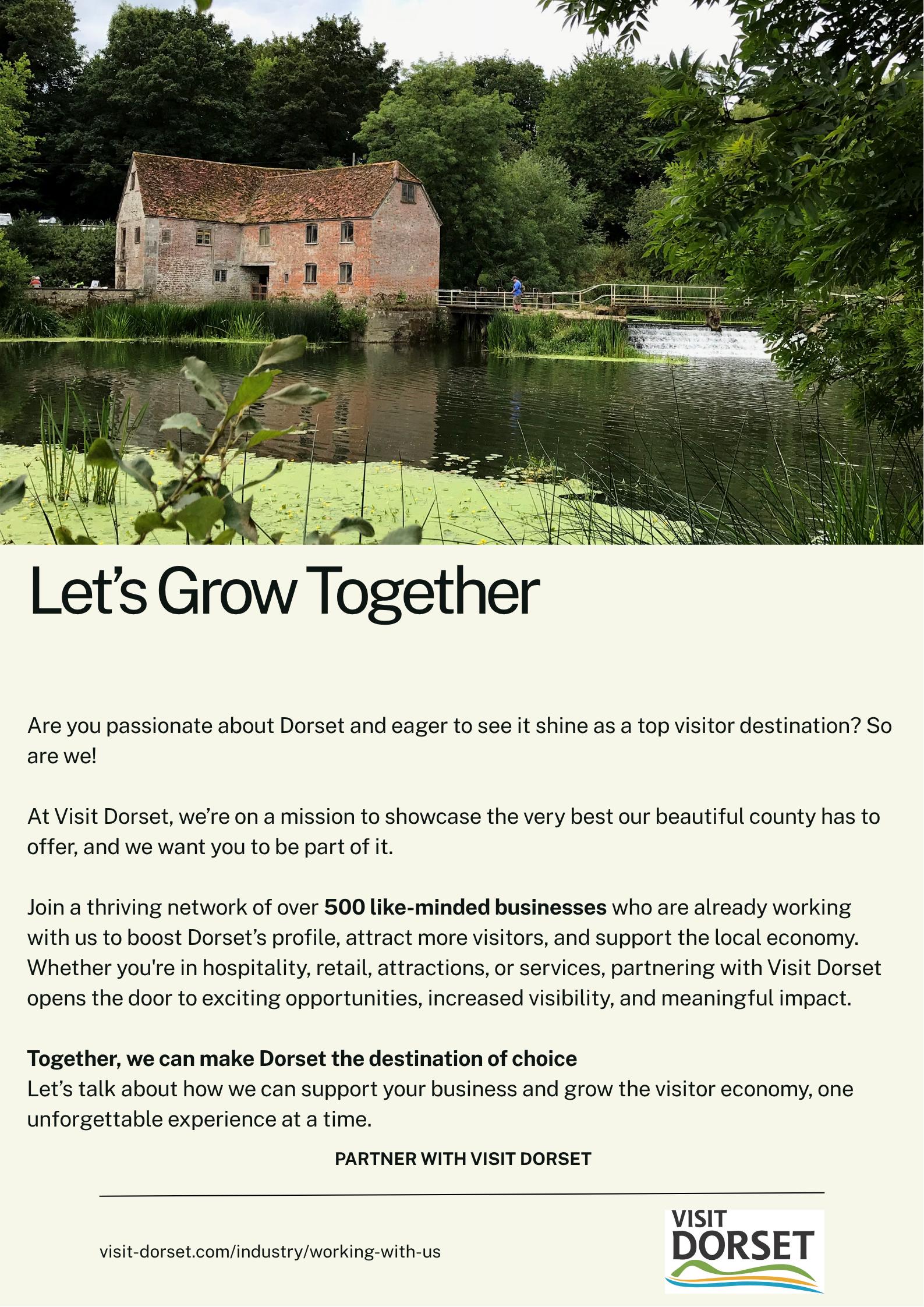


During hot, dry spells, choosing drought-tolerant plants is better for bees, butterflies, your water bill and your summer display
Following on from last month, where we talked about saving water in the garden, perhaps we should consider native plant varieties and species which naturally need less water – including those with grey or silver leaves that reflect more of the sun’s radiation, such as succulents. Many species that thrive in dry conditions and yet are helpful to bees and butterflies are available.
Here is a list of drought-tolerant plants that may be helpful. This list is not restrictive, there are lots of others: Agapanthus, Anchusa azure, all succulents including Cotyledon orbiculata, Geums, hardy geraniums, Bearded irises, Mexican feather grass, Nepeta, Pittosporum, Trachelospermum jasminoides, Sea hollies,, verbascums, artemisia, sedums, lavender and heuchera.
morning and evening! Hydrangeas, particularly in containers, may need to be monitored. Keep feeding all container plants with liquid fertiliser – once a week if possible.
Thin out overgrown pond plants. A water feature that trickles water into the pond will probably help aerate the pond water. Failing that (and assuming no hosepipe ban), water from a hosepipe can be trickled into the pond to help aerate it instead. Solar pond fountains may also help. Remember to top up ponds regularly.
Give garden birds a place to bathe, drink and cool down
Also, do choose your pots with care, as some lose water more quickly – metal heats up fast, and unglazed terracotta is more porous than glazed, so it loses water faster. And think about where you place them – avoid the midday sun.
Plants in containers may well need watering twice a day in the summer – in the early
While you’re there, ensure bird baths are full to give garden birds a place to bathe, drink and cool down. Create an amphibian refuge by placing some logs in a shady area, and stuffing the lower layer with fallen leaves and moss. This will make a cool, damp location for frogs, newts and toads.
Keep deadheading flowers, particularly roses, and summer-flowering shrubs to remove the faded blooms and help continue their display. Sweet peas are at their best this month, and they really do benefit from constant picking for vases in the house. This helps prolong the flowering period.

Barry
It was another very dry month with little rain, high temperatures and drying winds. The little rain we did have only amounted to around 0.6 of an inch. Water was in great demand across the allotment site, and we pumped from our 12 foot well most days to supply the tanks and troughs.
Vegetables on our own plot were watered every day, including the maincrop potatoes. Some planting was held back until after the 0.3 inches of rain on the 20th. We have been picking tomatoes from the greenhouse most days, and we have lettuce available all through the month.


3rd – The haulm (the stalks or stems) was dying back on the Jazzy, Sagitta, Maris Bard and Charlotte potatoes.

4th – Removed three more onions with white rot. Harvested courgettes, beetroot and blackcurrants (Val made a blackcurrant pavlova!). Gave four rows of Desiree potatoes 40 litres of water per row.
6th – Hand weeding.
7th – Dug Maris Bard (good) and Charlotte potatoes (very good!). Prepared the ground for leeks –it’s currently very lumpy.
8th – Dug two rows of Jazzy potatoes (excellent). Helped strengthen and put in new supports under the waterholding tank. Cut haulm off Sagitta potatoes. Harvested peas, courgettes, beetroot, blackcurrants and gooseberries. Fed the strawberry plants.
9th – First big tomato harvest:
Akron, St Pierre, Rainbow Blend, Santonio, Santa Victoria and Ailsa Craig. Planted out lettuce from a plug tray.
10th – Weeds looked stressed from lack of rain.
11th – Picked the first Nairobi snap peas and Carrouby de Maussane mangetout. Harvested French beans, peas and a few onions.
12th – Picked courgettes, gooseberries and blackcurrants. A very hot day (31°C).
13th – Stored garlic: now totally dry. Dug five Harry potatoes (a new variety to us – good, but we won’t grow it again). Picked a punnet of bird-sown cultivated blackberries from the hedge.
15th – Harvested peas, snap peas, mangetout, gherkins, French beans and our first outdoor cucumber. Sowed Sweet Williams and Wallflowers in trays for 2026.
16th – Planted out Rudolph and Claret purple sprouting broccoli from plug trays.
17th – Planted out two rows of Musselburgh leeks from pots. Sowed Palla Rossa radicchio in a plug tray.
18th – Hand weeding. Fed celeriac and strawberries. Harvested mangetout, snap peas,
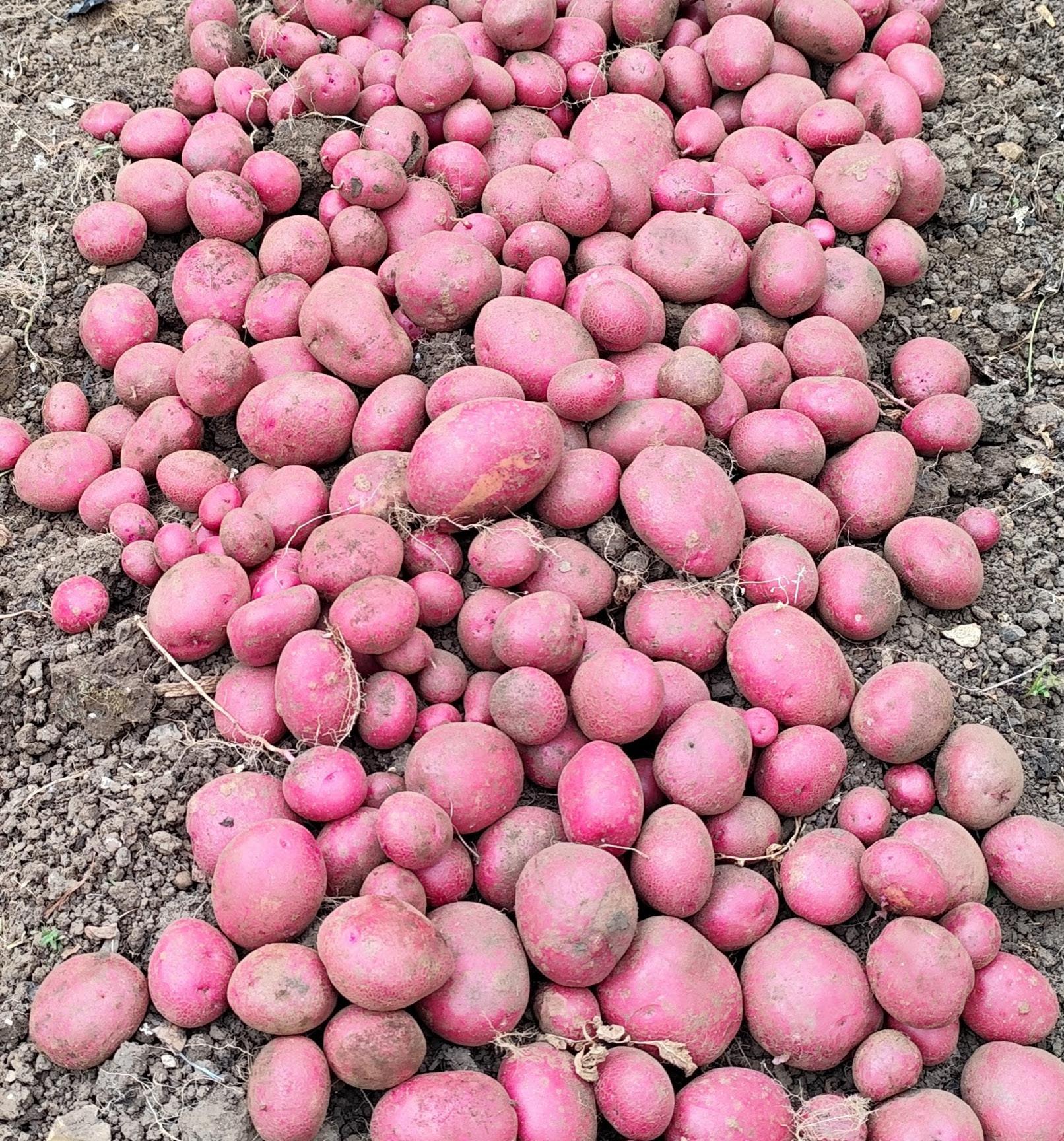
peas, gherkins, beetroot, onions and French beans. Had a big tomato and sweet pepper pick.
20th – 0.3 inches of rain! Sowed beetroot and carrot.
21st – Hand-weeded brassicas.
22nd – Planted out lettuce from a plug tray. Fed celeriac. Planted out Navona romanesco. Cut haulm on the four rows of Caledonian Rose potatoes (dying back). Harvested peas, snap peas,

Caledonian rose pottaoes harvest
mangetout, gherkins, cucumber, beetroot and French beans.
23rd – Sowed Vitimo Chinese cabbage and the next batch of lettuce in plug trays.
24th – Removed cloches from the seven lines of brassicas, then hand-weeded, watered, sprayed for caterpillars and boron deficiency, and erected pigeonproof netting. Large numbers of Large White butterflies on the wing.
26th – Harvested about 50 per cent of onions and laid them out in trays to dry. Picked cucumbers, gherkins and courgettes. Dug first good-sized carrots. Handweeded remaining onions.
27th – Dug two rows of Caledonian Rose potatoes – a good yield, but many were small due to drought. We now need some decent rain for the remaining crops.


This circular route combines sweeping chalk downland views along the Ox Drove ridge-top with long, Roman-straight forest paths through the peaceful expanse of Vernditch Chase. It’s a gently undulating walk on well-defined paths – broad open stretches with panoramic views, broken up by cool, shady woodland. A great choice for a hot day. The walk naturally divides in two at a road crossing in the middle – a handy point to shorten the route if you wish. The right-hand loop is one of our go-to shorter walks, and the longer version simply extends it for a satisfying day hike.
If you want the six mile option, just turn right at the halfway road and follow it for a few minutes straight back to the car – come back another day to explore the second half!
I do know the extra loop out to the Middleton Nature Reserve makes no sense ... but make the effort, and make it your picnic spot. Trust me. (though you’ll hate me on the climb back up. Sorry.)
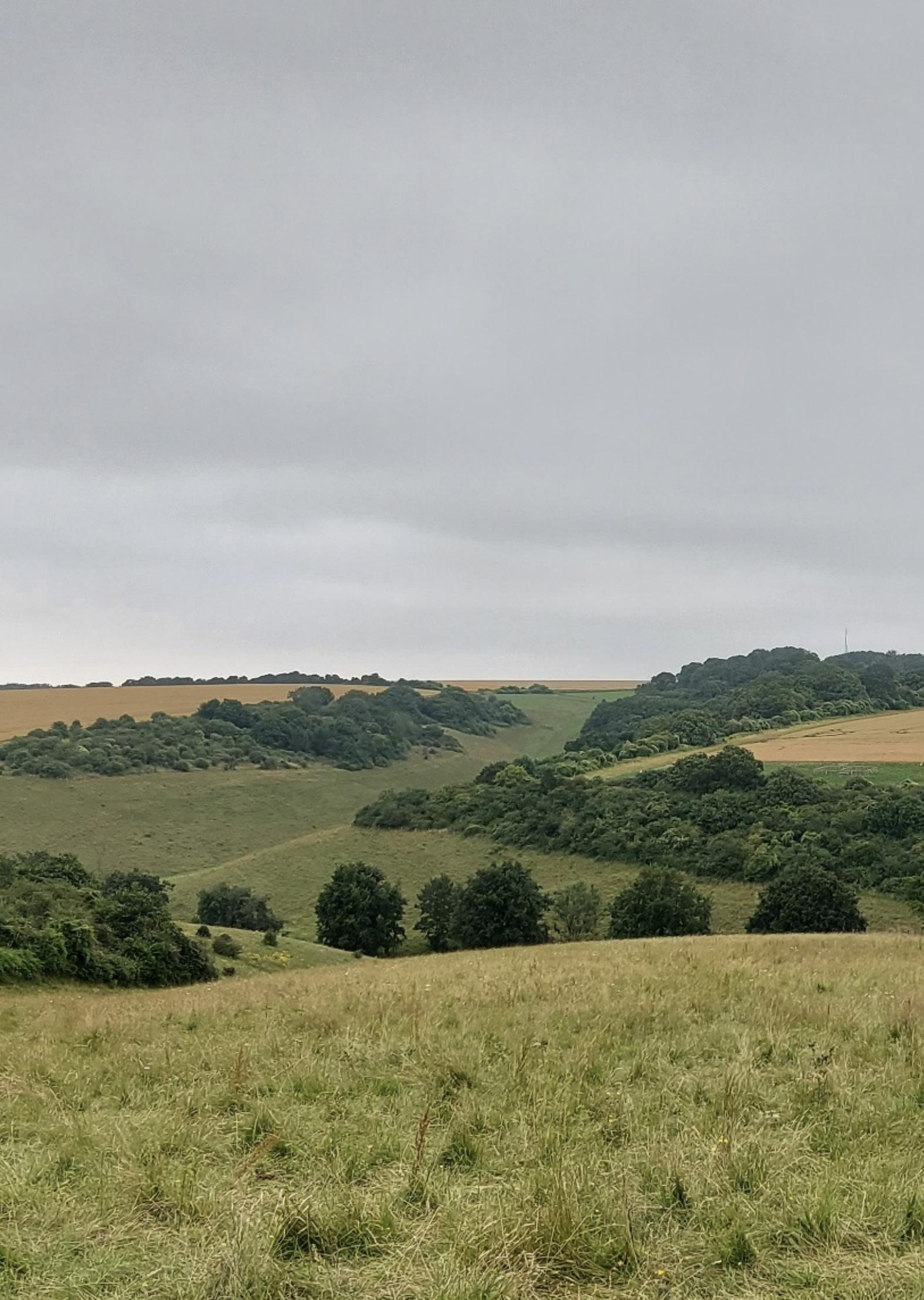
Much of the walk has that timeless green lane feel. One section, marked on the map as a hedge-boundary path, turned out to be a beautiful old track heading towards Cobley Farm – ancient and inviting. And what looked on the map like a modest copse beside Middle Chase Farm revealed itself to be a curving path through a towering, cathedral-like stand of forest – one of the walk’s quiet highlights.
Just a few notes: firstly, the long, straight stretch through Vernditch Chase can be wet – even in summer. Unless there’s been an exceptionally dry spell, some sections still require good
See all previouslypublished Dorset Walks on the website here. You can also find every route we’ve walked (including many which are unpublished in The BV) on OutdoorActive here (just zoom in/out on the map) – all include a downloadable gpx file.
footwear and a bit of care. In winter, it’s definitely a wellies-or-bust affair.
And secondly, when we reached the road crossing at Pribdean Wood, we were eaten by horseflies – pack the insect repellent if it’s warm. Lastly, the final straight track back to the car runs parallel to the Ox Drove, above the Shire Rack. It does save you from a bit of a road stretch past Middle Chase Farm, but be warned – it’s dead straight, with high hedges on both sides, and can feel a bit monotonous. On a hot day, I’d opt for the higher Ox Drove path to catch a breeze and soak in the views.

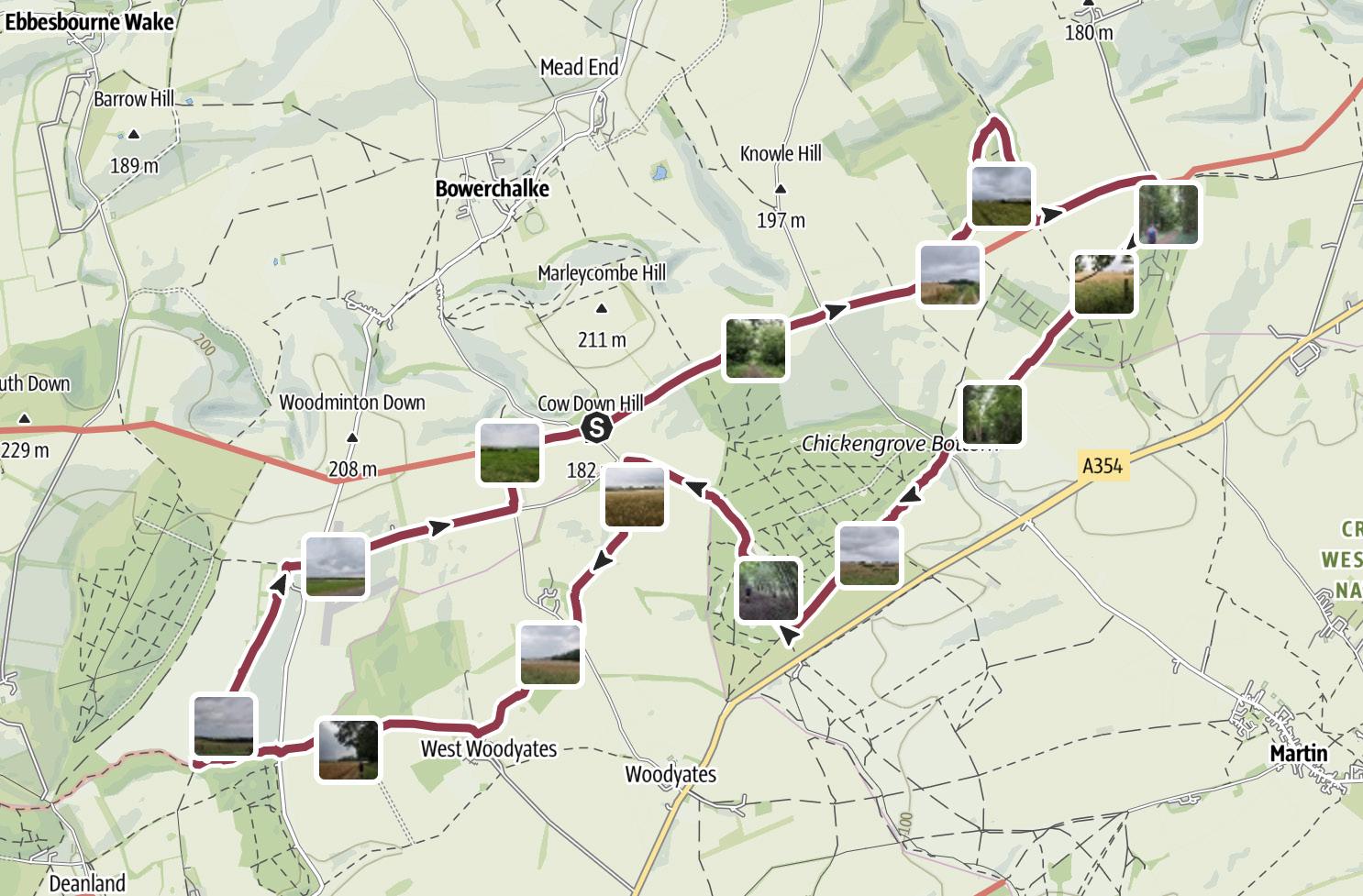


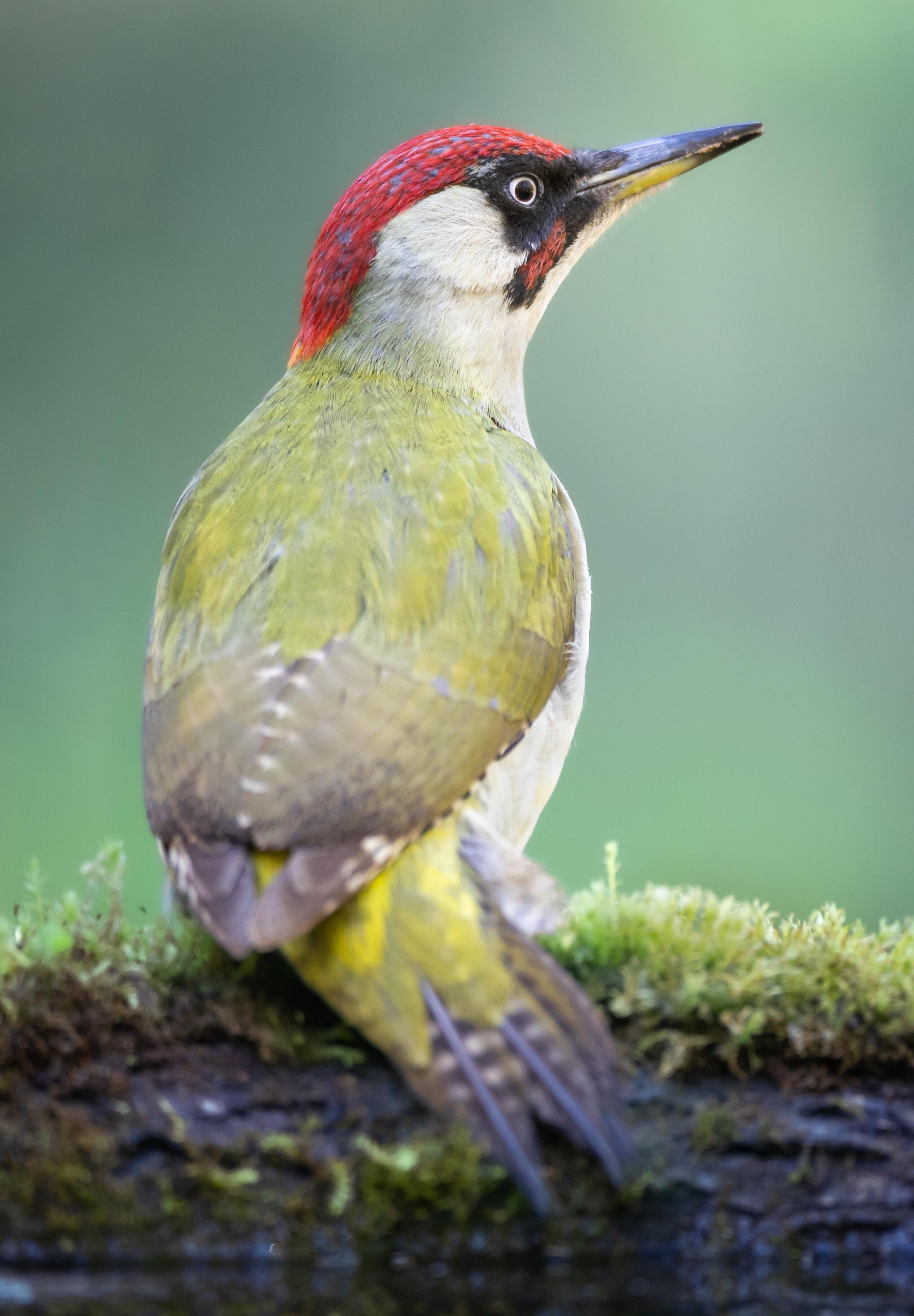

Can you remember the first time you met a green woodpecker? I say ‘met’, as this is no ordinary bird, and any encounter with one feels strangely special.
My own first meeting was in a small, semisuburban garden during a hot summer in the 1990s. Sitting on a bench with my mum, enjoying a cuppa, one appeared on the lawn. We froze, mugs held in mid-air, staring at this strange but beautiful bird not ten feet in front of us. Though its emerald-green feathers, scarlet cap and black eye patches were impressive, it was its size that really surprised us. I remember telling a friend afterwards, ‘It was huge. Like a penguin!’ They laughed.
long, sticky tongues. After probing the ground with their beaks, they deploy their tencentimetre tongues like tiny grappling hooks in order to catch the ants. When not in use, their tongues retract and wrap around the inside of their skulls: they are one of only a few birds able to do this.
They deploy their tencentimetre tongues like tiny grappling hooks
Obviously, it wasn’t – green woodpeckers are more the size of a pigeon – but they carry with them an aura, a magic, that makes them appear larger than life.
Fiddlesticks and flapdoodle!
No wonder, then, that this bird has held a special place in our imaginations for centuries. The name Yaffle comes from the green woodpecker’s laughing, or ‘yaffling’, call – an onomatopoeic nickname still heard in Dorset and across the West Country today. Country folk also knew them as the rainbird – said to call more often during humid weather. Whether that’s true, I don’t know. But if you were born in the 1960s or 70s, you will probably recognise him as Professor Yaffle – a carved wooden bookend in Bagpuss, known for saying “Fiddlesticks and flapdoodle!”. He was a wise old bird, with round scholarly glasses who waddled around with an inflated air of superiority. In the wild, you might see them waddling –or bounding, if they’re in a hurry – around meadows looking for yellow meadow ants, which they catch by the hundreds with their
As summer draws to a close, you might spot this year’s fledglings venturing out on foraging trips with their parents. Dorset’s chalk grasslands and unimproved meadows, where anthills are plentiful, make for perfect hunting grounds. Sadly, this type of habitat is becoming increasingly rare: something conservationists are worried could affect the green woodpecker’s long-term survival. That day in the 90s, our woodpecker prodded the grass twice, decided ants were in short supply, and took off in a flurry of green. As it undulated across the neighbours’ gardens like a runaway rollercoaster, we heard its yaffle echo round the cul-de-sac. It was laughing at us, I’m sure of it.




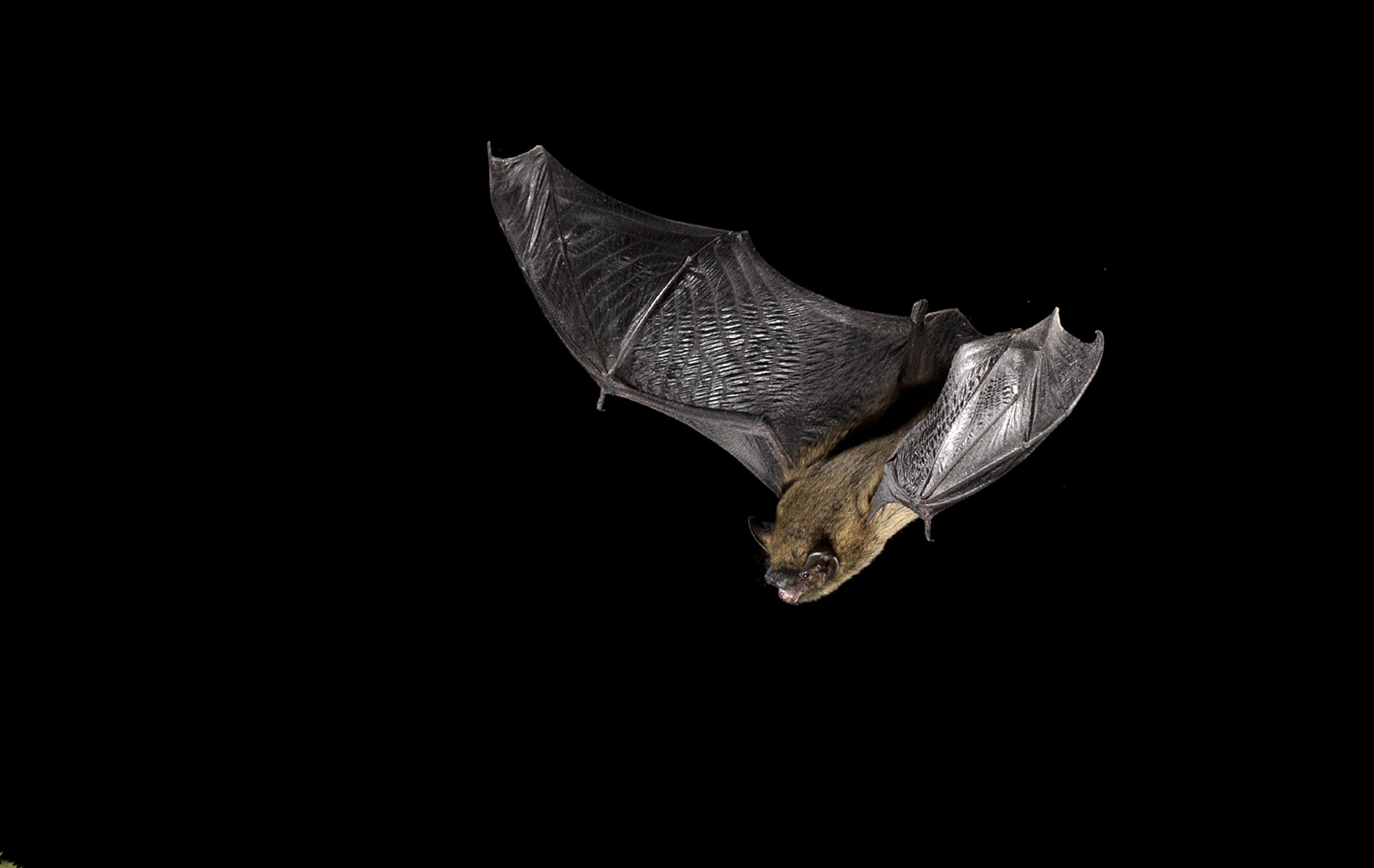
While we sleep, another world stirs – with just a little thought, your garden can be a haven for bats, moths, owls and hedgehogs through the night

Hedgehog out at dusk
As night falls and most of us head indoors, a hidden world of nocturnal wildlife begins to stir. From the silent flight of owls to the soft rustle of hedgehogs in the undergrowth, your garden can become a haven for wildlife long after the sun sets. Nocturnal visitors come in all shapes and sizes, including aerial and terrestrial species –from moths, bats and owls, to hedgehogs, foxes and badgers. There’s lots we can all do to support wildlife at night in our gardens and outdoor spaces ... even while most of us are fast asleep.
The UK is home to a fascinating range of nocturnal species. Aerial visitors include bats like the common pipistrelle – tiny and agile – which feasts on midges and mosquitos as they dart through the night air. Moths such as the elephant hawk-moth and the silver Y are attracted to night-scented plants and their visits are essential for pollination, complementing the work of bees by day. Tawny owls may be heard calling from nearby trees, their ‘twit’ and ‘twoo’ marking their presence as they hunt for voles and mice.
On the ground, you might spot hedgehogs emerging from their daytime shelters to snuffle through flowerbeds and undergrowth, foraging for worms, slugs and beetles.
Foxes often patrol gardens under cover of darkness, scavenging for food or hunting small prey. Earthworms, vital for soil health, also surface to feed on decaying plant matter at night. In warm months, bush crickets and field grasshoppers contribute a soft evening chorus. Each of these species plays its role in the nighttime ecosystem
Helping wildlife at night could begin with creating a welcoming, undisturbed habitat and planting species that bloom or release scent at night: common plants like evening primrose, jasmine and honeysuckle all draw in the moths to your garden. White or pale flowers, such as moonflower or white campion, reflect moonlight and are more visible to insects and bats. Native hedgerow plants like hawthorn and dog rose provide berries and shelter. Herbs like thyme and lavender attract insects by day and linger into the evening. These are key to attracting moths and, in turn, bats.
Fresh water is essential for all animals. Leave shallow bowls, clean and refilled regularly, and consider installing a small wildlife pond – even a container pond can make a difference. At night, garden lighting should be subtle and entirely switched off whenever possible. Always use motion-sensitive, low-level warm lights rather than bright floodlights. Artificial light at night (ALAN) can confuse insects, disrupt feeding, and increase predation risks for small creatures. Avoid chemical pesticides and slug pellets, which harm hedgehogs and reduce insect populations vital to bats and birds. Let areas of your garden grow wild, perhaps create log piles and leave undisturbed corners to provide shelter for amphibians, insects and small mammals.
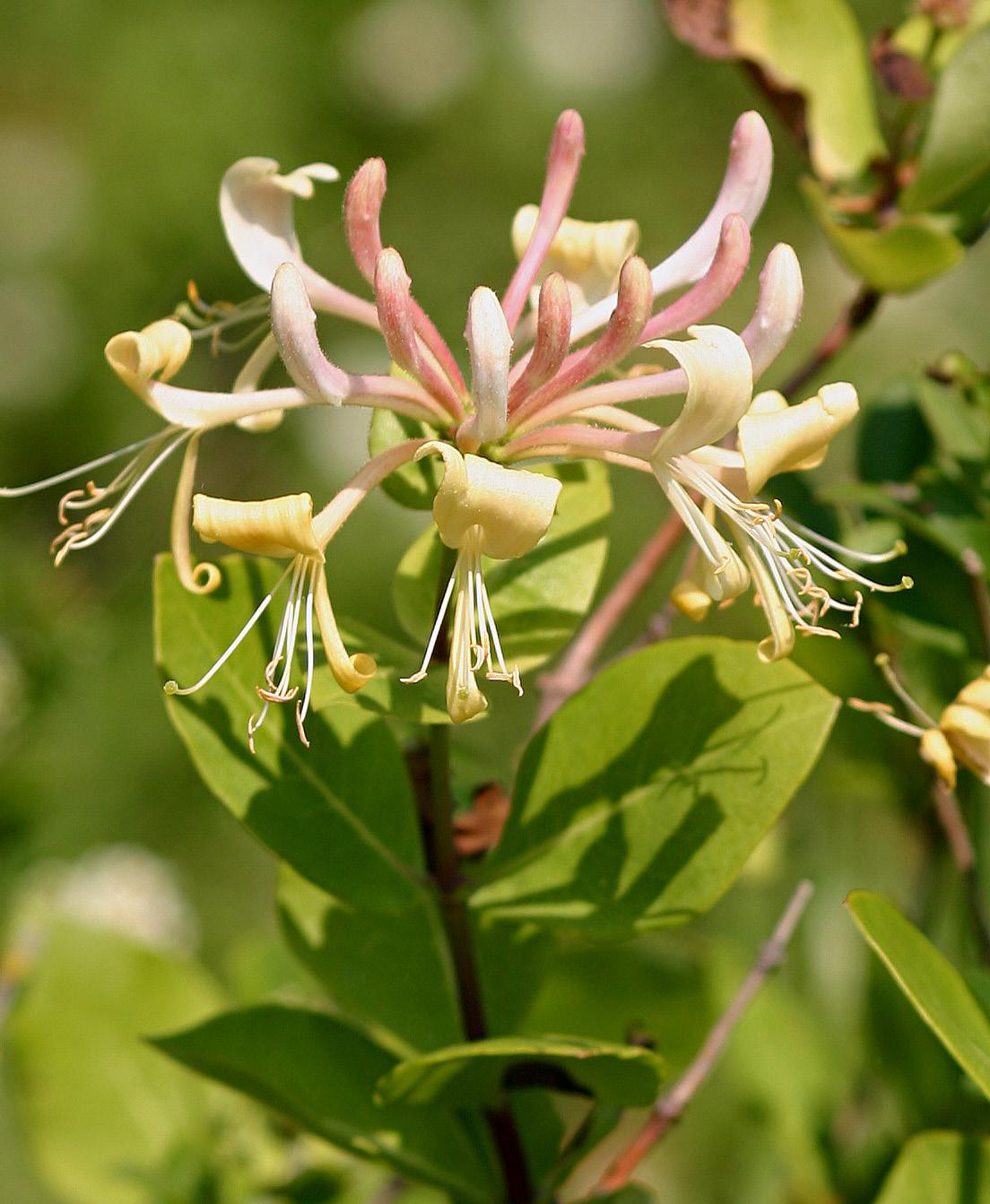
To observe your garden’s nightlife, try setting up a wildlife trailcam – or even just use a torch with red film to avoid disturbing wildlife. Mount the camera on a tree, pole or wooden stake as close to the ground as possible to get a clear view of your nocturnal visitors. Aim at a clear area, free of wavering vegetation which might trigger it constantly. Reviewing the footage in the morning can become part of your daily ritual – revealing foxes, hedgehogs or even owls visiting while you sleep. This daily connection can foster a deeper appreciation of the natural world around you.
• dorsetwildlifetrust.org.uk
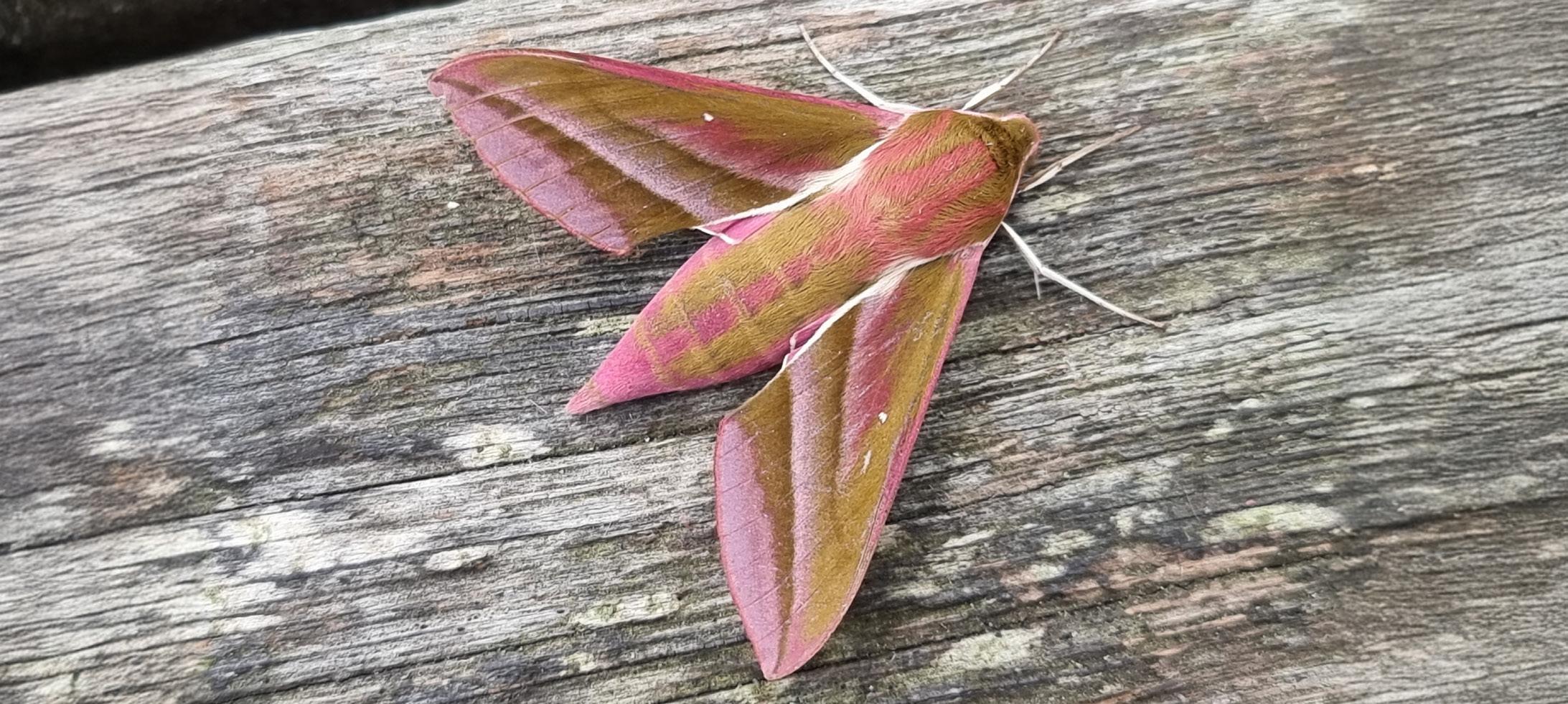


We welcome photography submissions from readers – the only rule is that they must have been taken locally in the last month. Our cover shot is always selected from our submissions pile. If you’d like to join in, please share it in The BV community Facebook Group or simply email it to us on photos@bvmagazine.co.uk

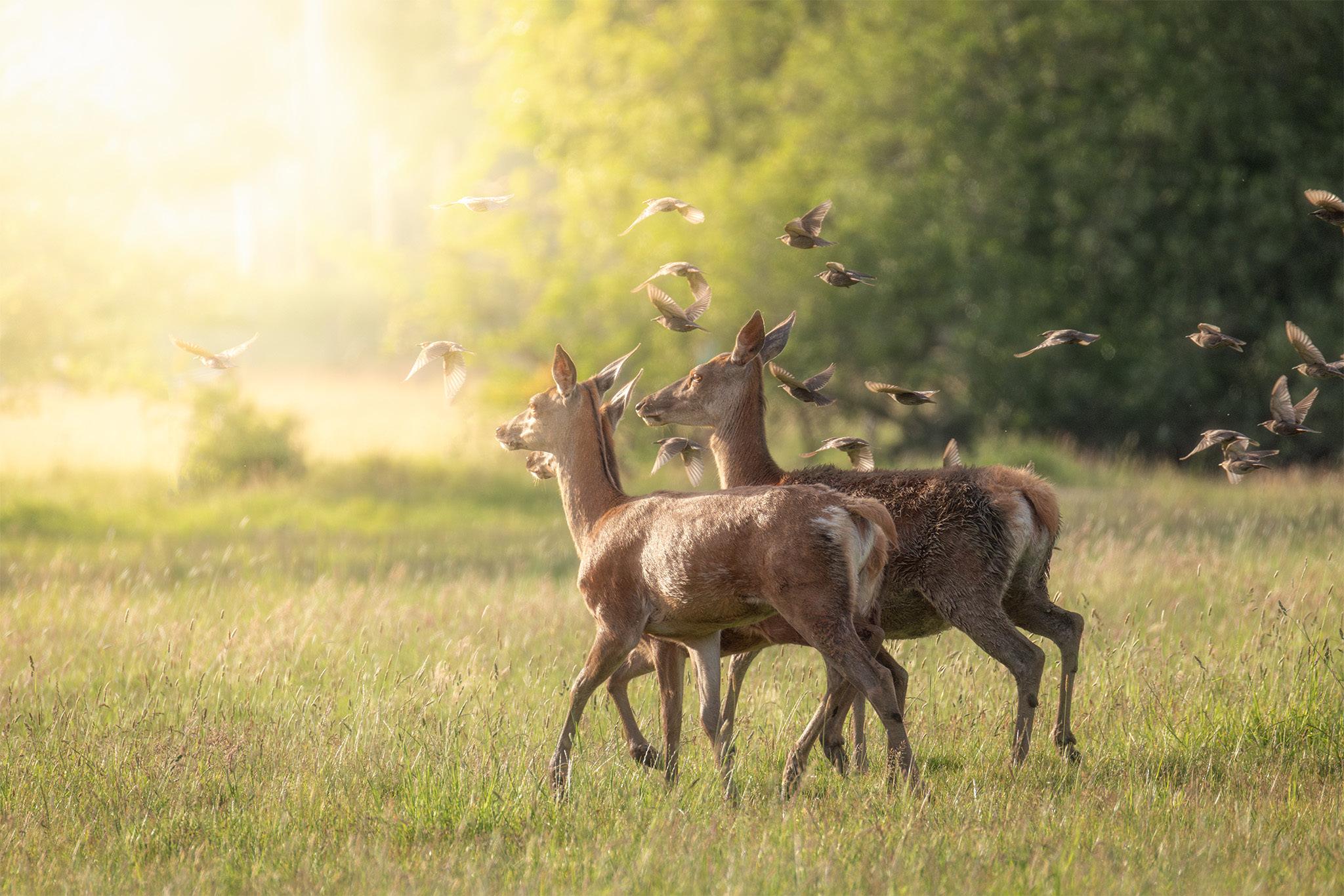
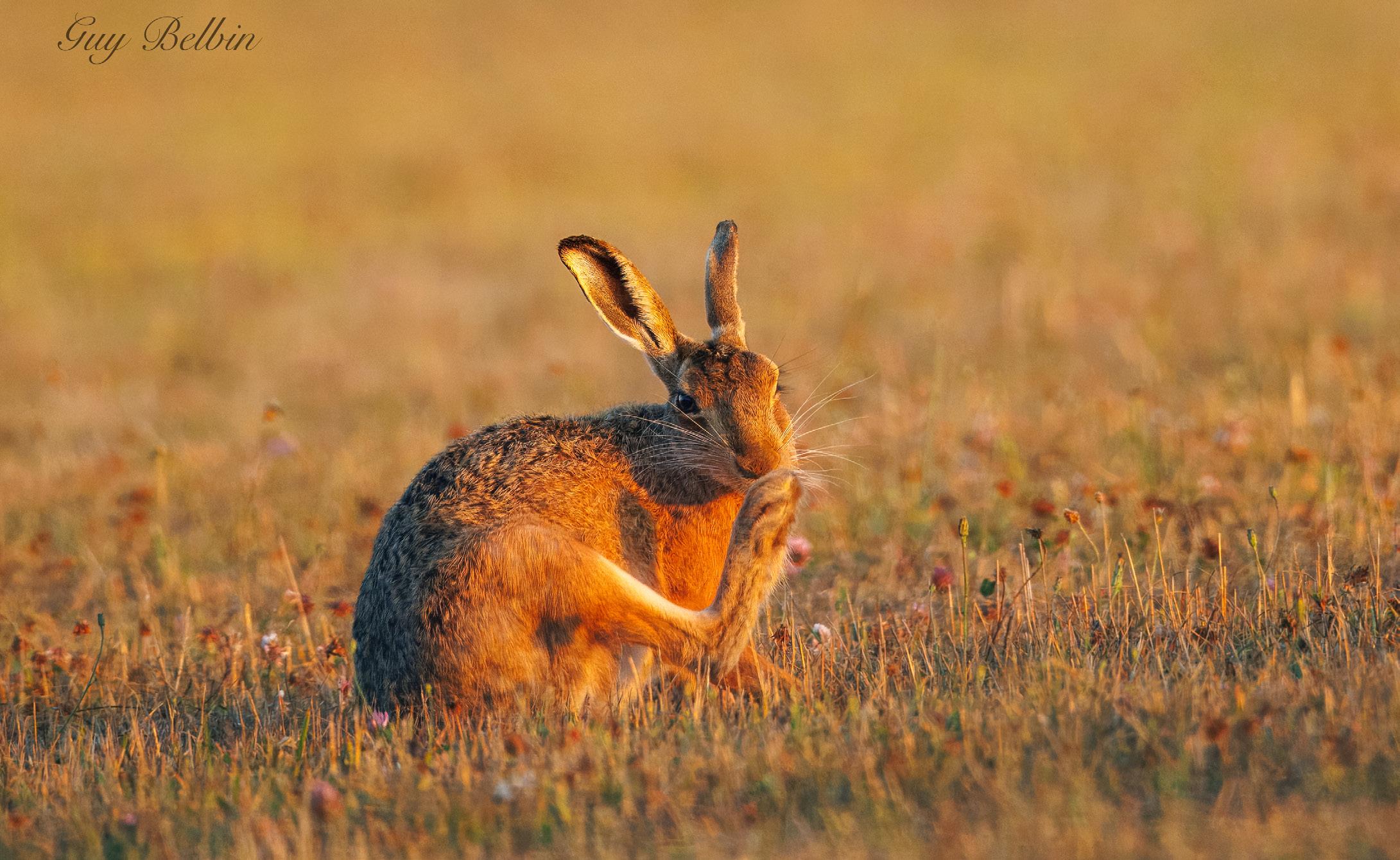













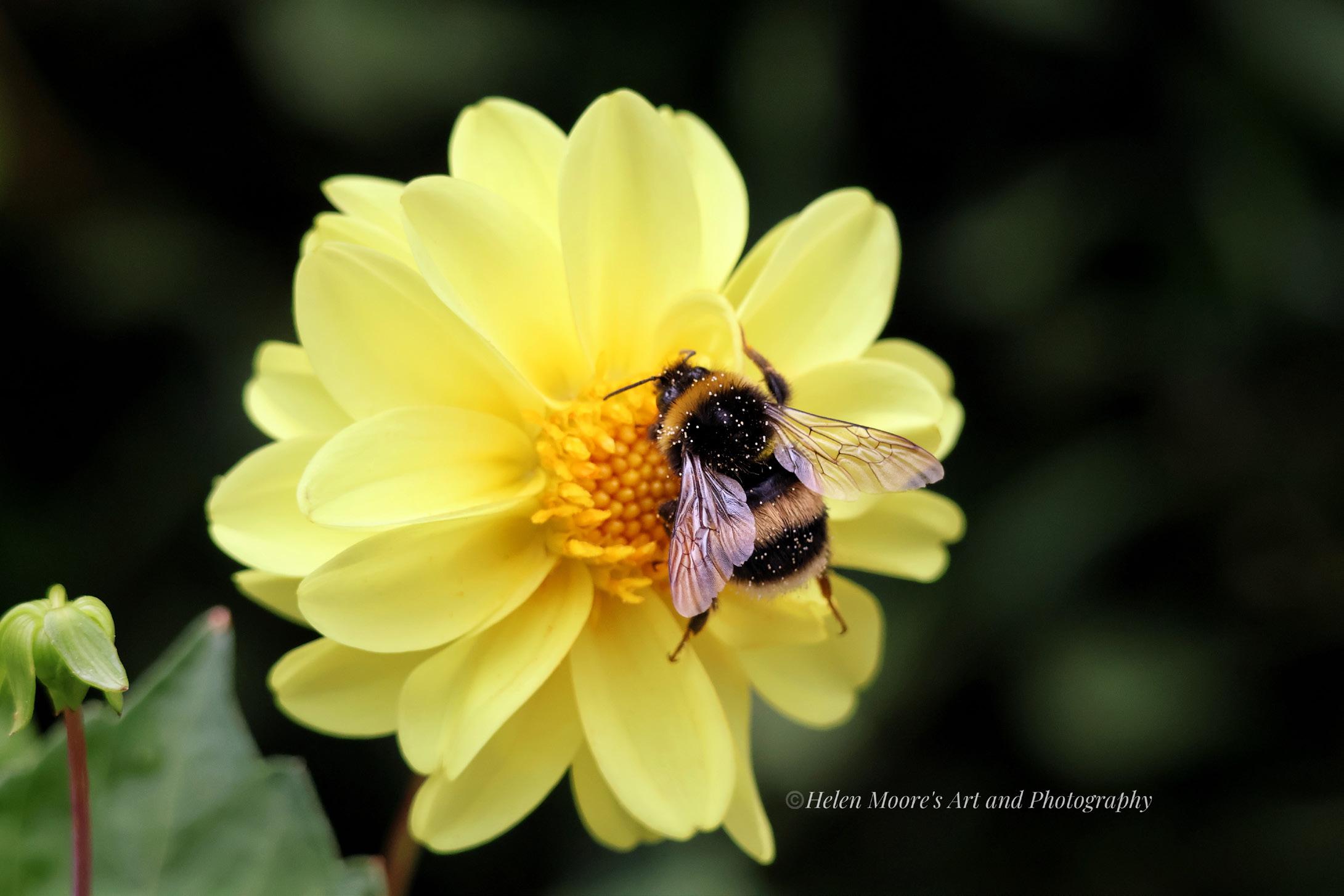
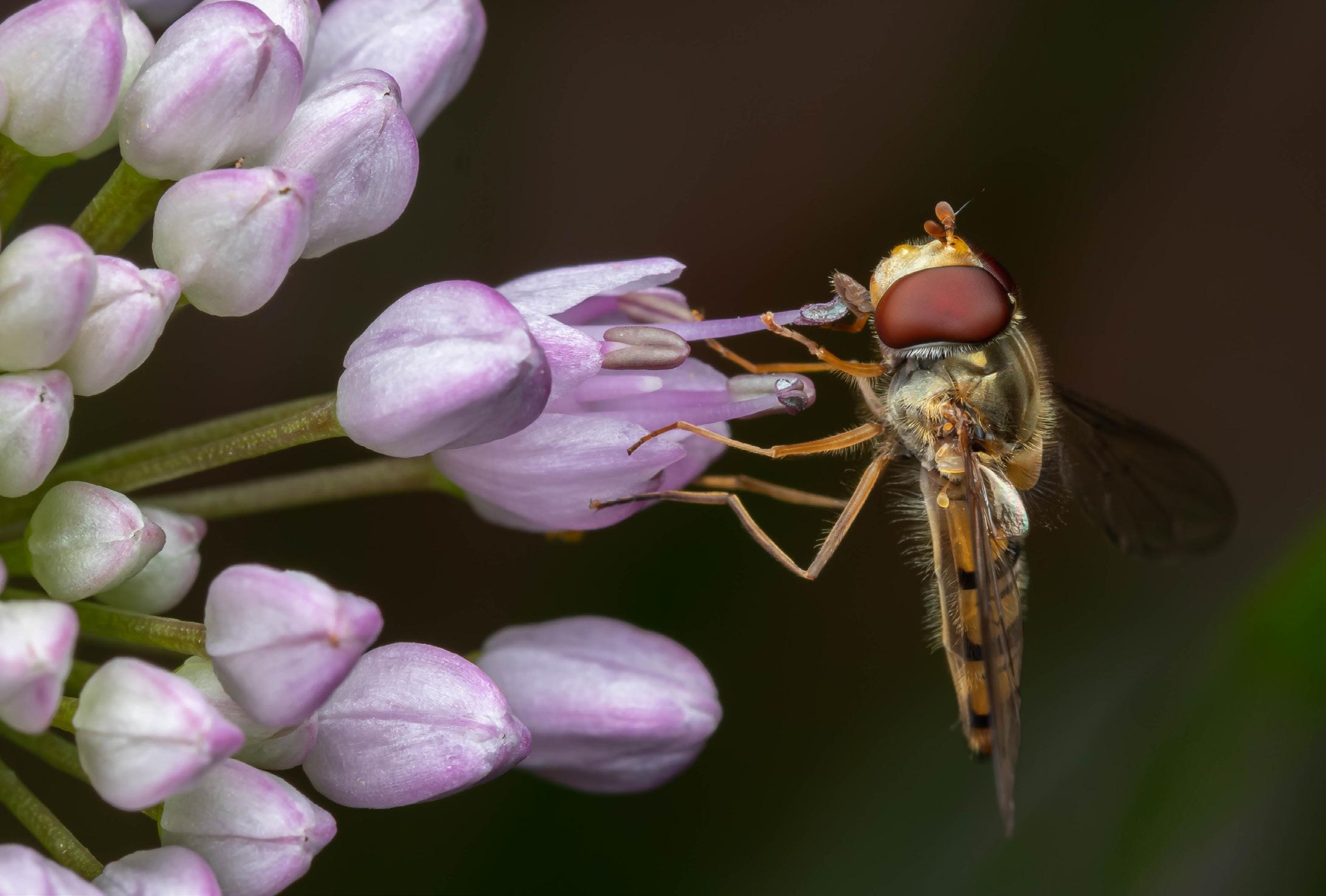






Delicate landing




by Tamson Doar
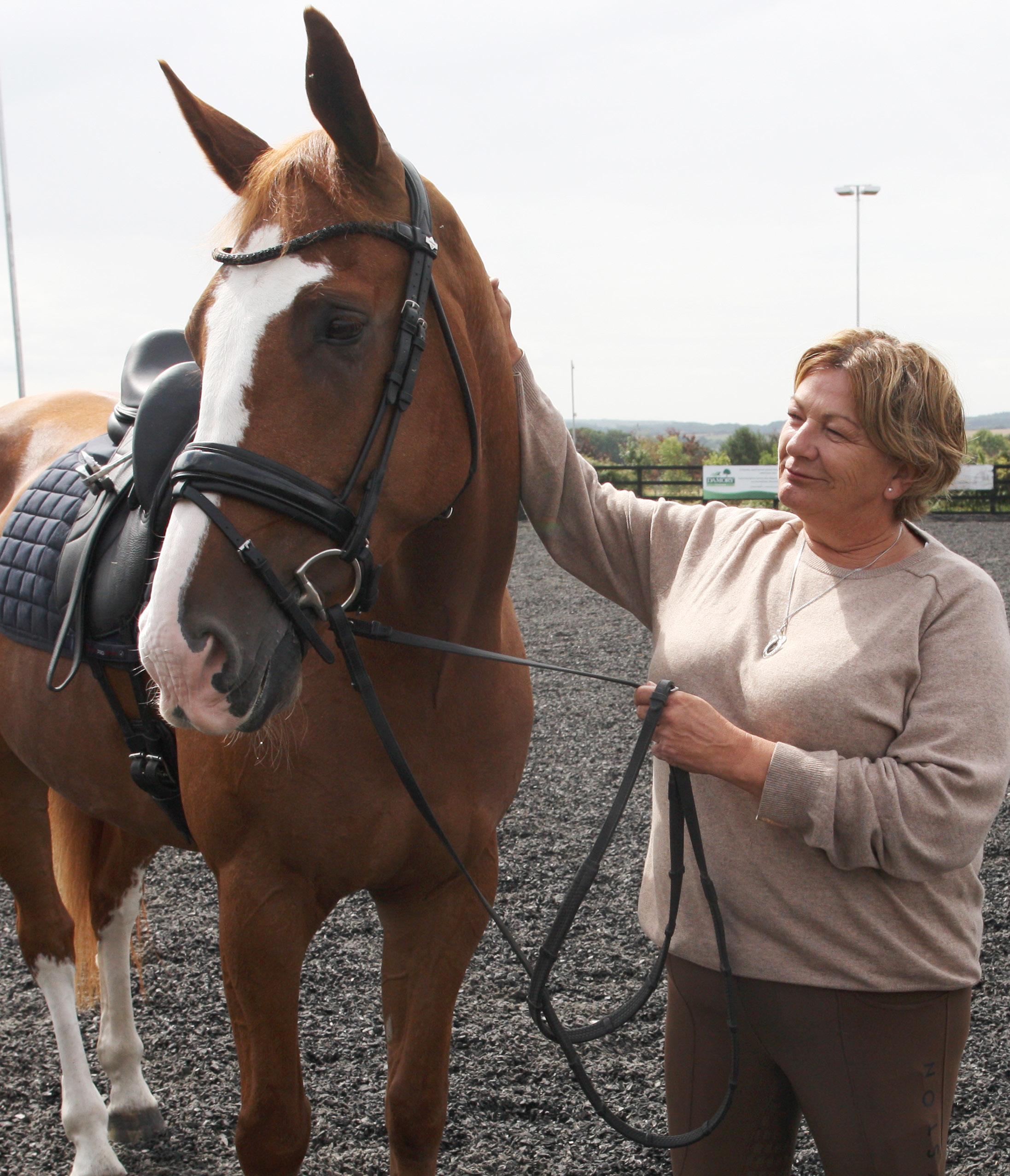
At Bovington Saddle Club, yard manager Steph Buchanan has spent three decades quietly transforming lives – not just of horses, but of people too
Anyone who has spent time around horses will tell you: ’They don’t just listen – they understand.’
For Bovington Saddle Club’s yard manager and head coach Stephanie Buchanan, that quiet connection has shaped a life and career
grounded in community, care and compassion. ‘I got into horses when I was about 12 after being grounded by my parents,’ Steph says. ‘The only place I was allowed to go was to the pony with my sister. I then realised I could hire him out to other

kids and earn money to get back to the arcades! Horses saved me from getting into trouble, really.’
#WillDoes
Steph has been at the heart of Bovington RAC Saddle Club since the early 1990s. When she arrived, it was just a single field – no fencing, no water, no rubber school. Today, thanks in no small part to her relentless drive, the BHS-approved yard boasts two outdoor arenas, an indoor school, a BE-level cross-country course and 71 horses, including 38 on full livery.
‘None of it would have happened without help,’ Steph says. ‘People wanted to give back, and they did – through donations, time, support. It’s always been a team effort.’
Steph is qualified to train and assess students up to BHS Stage 4. But her influence extends far beyond exams and schooling surfaces.
In memory of her late nephew Will, she is a trustee of the charity Will Does, which provides grants for children facing challenges – whether that’s respite care or access to sport and activities they’d otherwise never get to try.
‘We started by raising money through things Will enjoyed,’ Steph says. ‘Now, if a young person applies for a grant – whether they need a break or want to try something new – we’ll help however we can.’
That passion for support led the BHS to approach her in 2019 to help pilot its Changing Lives Through Horses programme at Bovington. Aimed at children who are disengaged, disadvantaged or in need of support, the scheme uses horses as a gentle bridge back into learning and confidence.
Steph with Joey at Bicton: ‘We always stabled him the night before any competition so he wasn’t tired. Plus Joey loved to have all the attention on him
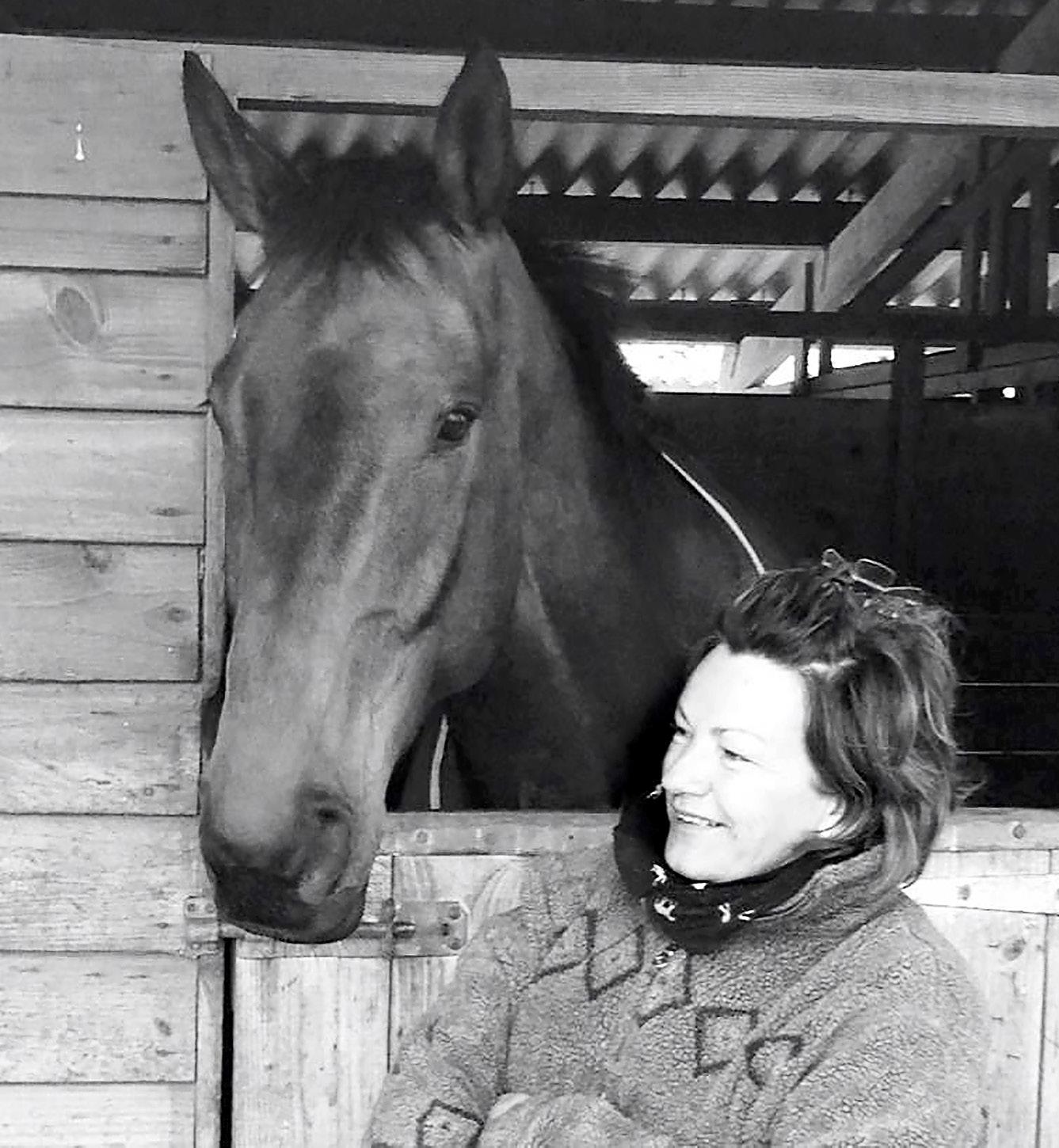
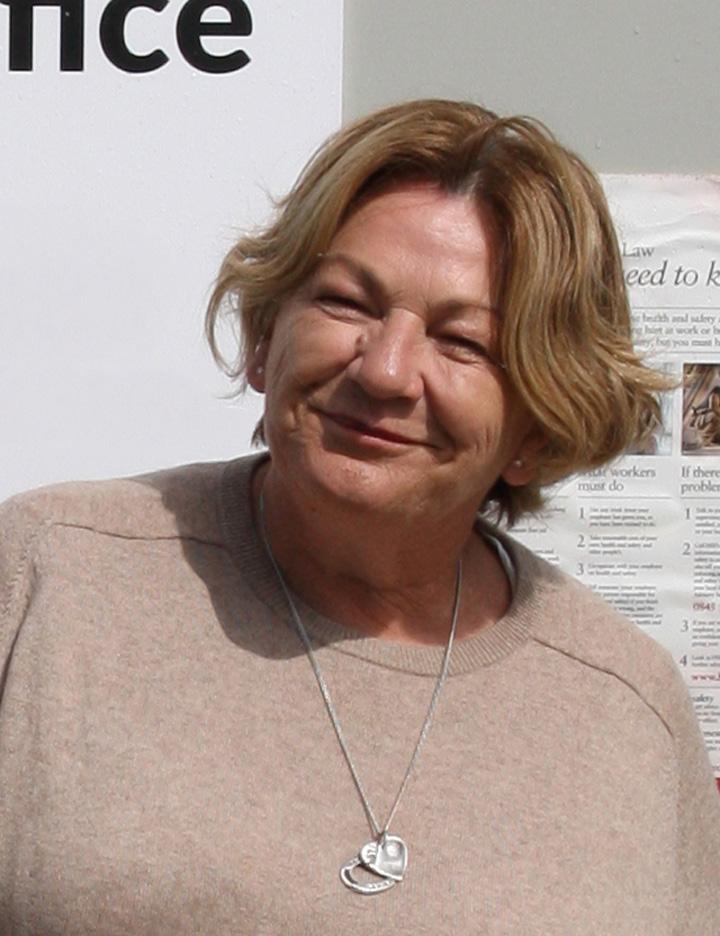
‘There’s a huge need for alternative provision in Dorset,’ Steph says. ‘We’ve had 159 young people come through since 2019. The horse acts as a buffer – having the horse between the student and the instructor helps them feel less exposed. Some go back to school with more focus, others find their way into the equestrian industry – the scheme is run through the BHS, so there’s an education pathway with achievers awards which are set towards the BHS stages. You get some kids who really shine.’
Five of the centre’s horses are rescues themselves, rehomed from the World Horse Welfare Centre in Somerset. ‘They’ve been brilliant at matching us with the right horses,’ Steph says. ‘And those horses do a really good job.’
One of the centre’s favourites is Sally, who has been with them for 16 years. Steph recalls a particular moment with fondness.
‘I got a call from a local care home: one of their residents really wanted to ride a horse. They turned up with a coach-load – Zimmer frames, walking sticks, the lot – right in the middle of a Bournemouth BUCS (British University & Colleges Sport) competition going on in one school, an RDA lesson in the indoor school and a Changing Lives Through Horses session in the third ... They all wandered round the yard, and out came Sally, just quietly soaking up the attention.’


It’s this sense of inclusivity and purpose that sets Bovington apart. Alongside its charitable and community work, the yard plays a formal role as an RAC centre. Troopers in phase two training are introduced to basic horse care before joining the Household Cavalry, and young officers complete the mandatory Spurs Course.
The yard also offers a pony leasing scheme for military families.
‘Most of the kids wouldn’t get the chance to own a pony,’ Steph says. ‘Leasing one four days a week gives them that experience.’
The centre is now also an approved Pony Club Centre – something Steph pushed for when she realised younger liveries were struggling with transport to other clubs.
‘Kids are the future,’ she says. ‘I’ve worked with Pony Clubs for years and I love it. We set up our own centre here so they could keep learning and enjoying their ponies. Last year, we won at Bicton – out of the whole of Area 14. They look after their ponies so well. It gives them goals. They work through their Pony Club badges, and if they want to, they can move on to the BHS exams.’
Steph’s quiet enthusiasm is constant. During our interview she calmly fielded questions from volunteers planning an unaffiliated ODE, which includes a newly-designed 70cm class to encourage novice riders. It’s that same openarmed ethos that has defined her decades at Bovington. One of Steph’s proudest moments was announcing the club would host its first British Eventing fixture: ‘It was 25 years ago now, but everyone had worked so hard to get us there. That was really special,’ she says.
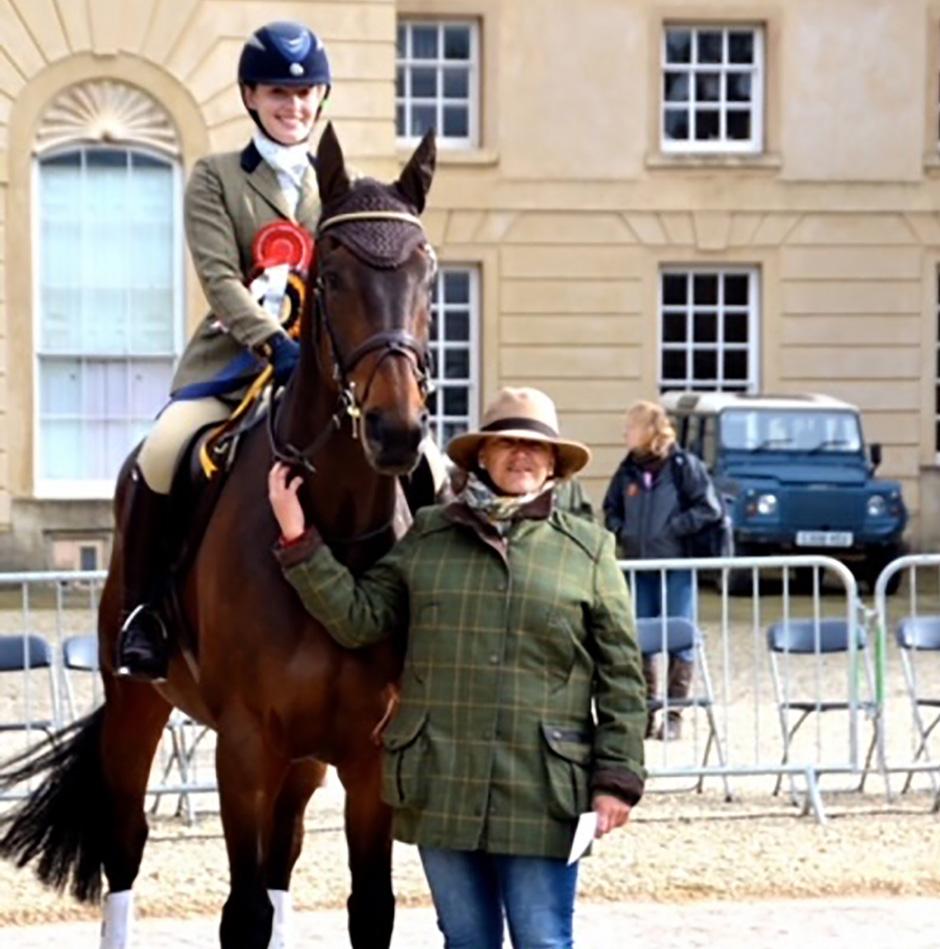
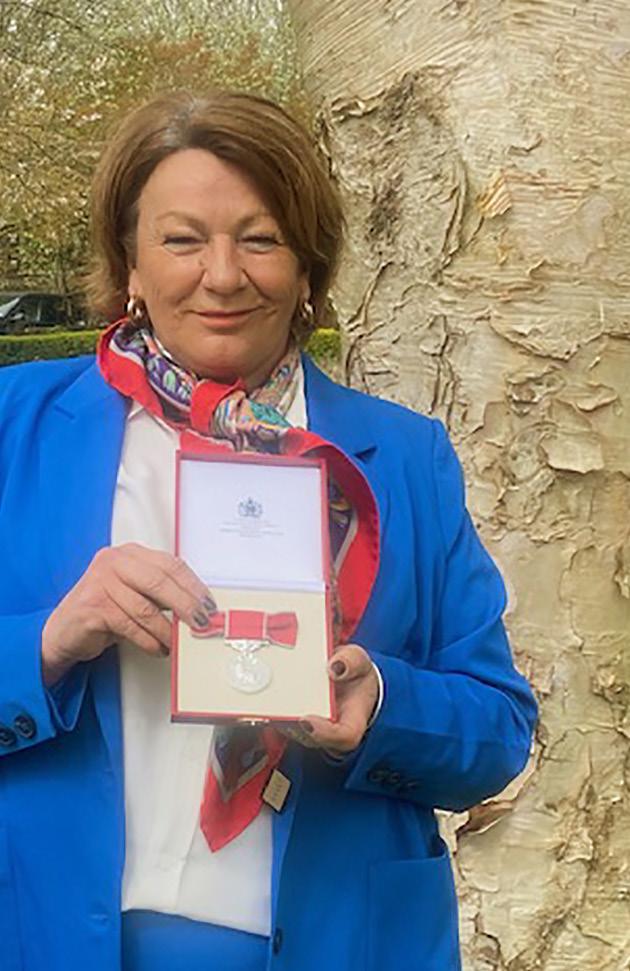
National recognition
Another highlight came with her own horse, Joey. ‘I bought him on a whim after a close friend passed away – he was just meant to be a happy hacker. But he ended up competing at Badminton Grassroots and in the novice at Gatcombe. We had such fun.’
Despite her modesty, Steph’s efforts have not gone unnoticed. In 2022, she was named Coach of the Year by the BHS for her work on the Changing Lives programme. She was also shortlisted by Sport England as one of the UK’s top three coaches in the ‘Change a Life’ category. And in 2024, she received a British Empire Medal (BEM), which recognises meritorious service to the local community.
‘I was very surprised!’ Steph says. ‘The ceremony was lovely. General Sir Gwyn Jenkins, who’s local to us and First Sea Lord, also gave me another award – that was a really personal touch.’
After more than 30 years, Steph shows no sign of slowing down. ‘To the outside world it might seem like it’s just liveries and riding lessons,’ she says. ‘But it’s so much more.’
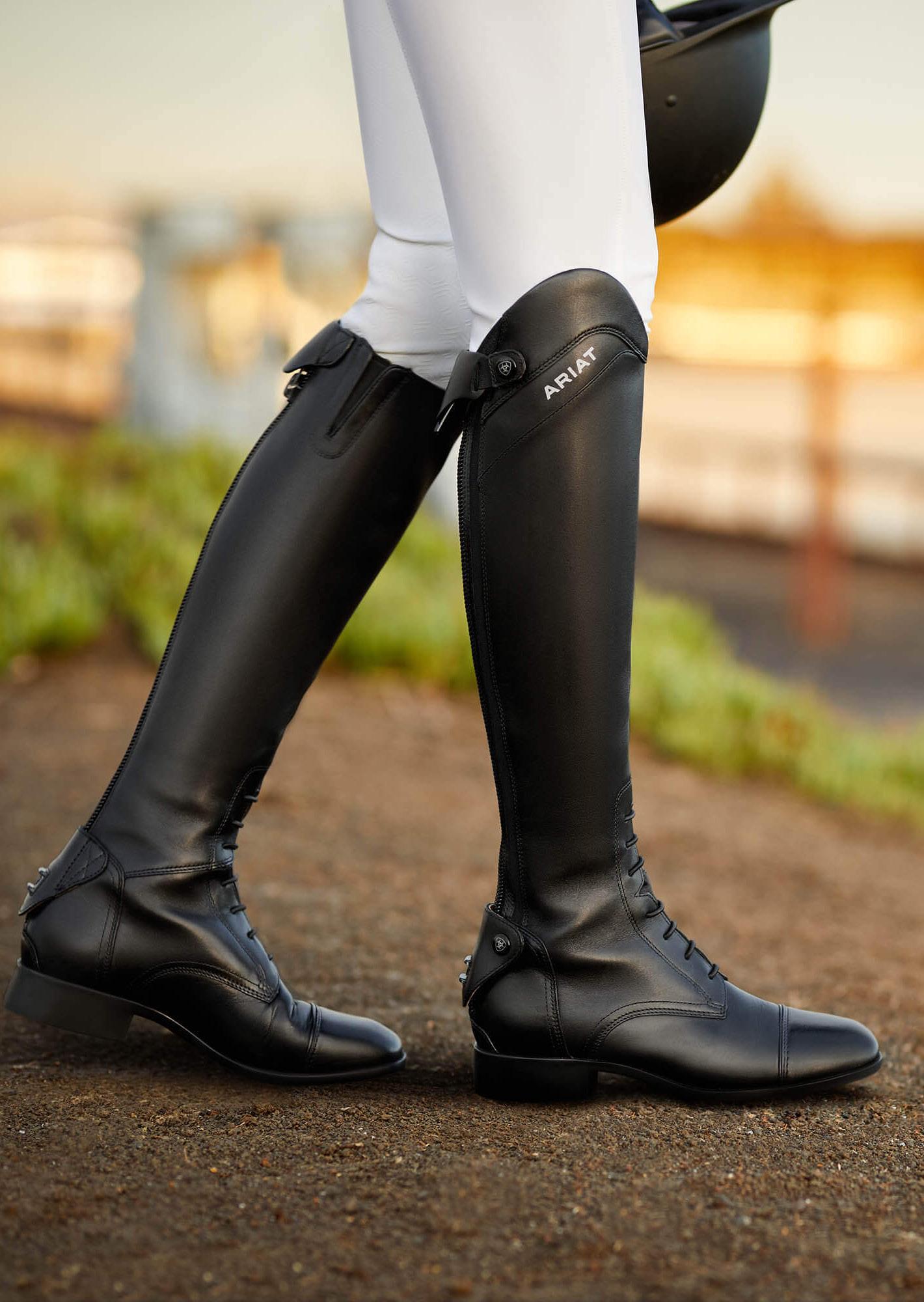


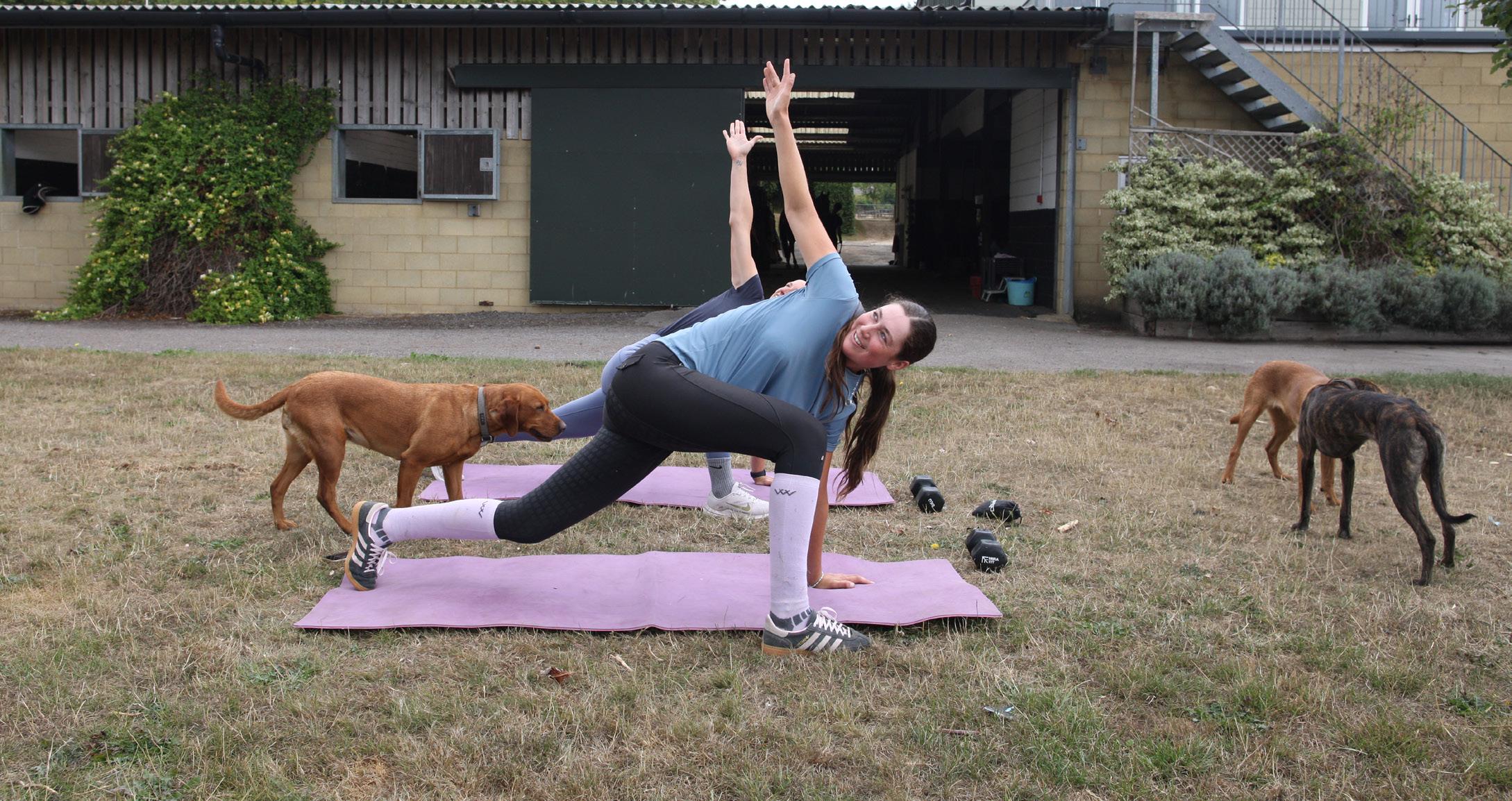
‘The horse does all the work’
She just sits there looking pretty, obviously. Jess Rimmer’s month has been pain, power and ... pond-water. The glamour of training for 4*
Anyone who knows anything about horses, whether from the perspective of a rider, groom or spectator, knows that riding isn’t really a sport, because the horse does all the work. And do you know what? I couldn’t agree more! After all, we just sit there looking pretty, steering left and right with the reins while the horse lifts his core, engages his hind leg, works forward into an even contact and maintains correct balance, power and speed into each and every fence –simply because he can. Oh yes, absolutely. In fact (and don’t tell anyone, it’s a trade secret), I actually give each of my horses an instruction manual before each training session – I sit drinking coffee while they memorise it ... OK, I’ll stop now.
Mucking out’s enough
All kidding aside, if I had a chocolate bar for every time I heard ‘the horse does all the work’, you could call me Willy Wonka. These days, when someone from the general public says it, I don’t even bother arguing – they won’t ever understand. The people who support me in what I do (regardless of whether they understand it or not) are the people I choose to surround myself with.
For riding fitness, I’d always got away with relying on mucking out, riding loads, and the occasional run with Mum (where she’d absolutely leave me for dust!). It always seemed to be (just) enough –until I started at the Fox-Pitts.
After uni I thought “OK, if we’re doing this, we might as well do it properly!”. Which is where the brilliant Marie from New Forest Gym comes in. Marie originally came to work with Sara (Bech Strøm), the Danish 5* rider who was working here when I arrived. Sara kindly invited me to join her sessions, and together we somehow managed to keep smiling while training through some pretty miserable, dark winter evenings.
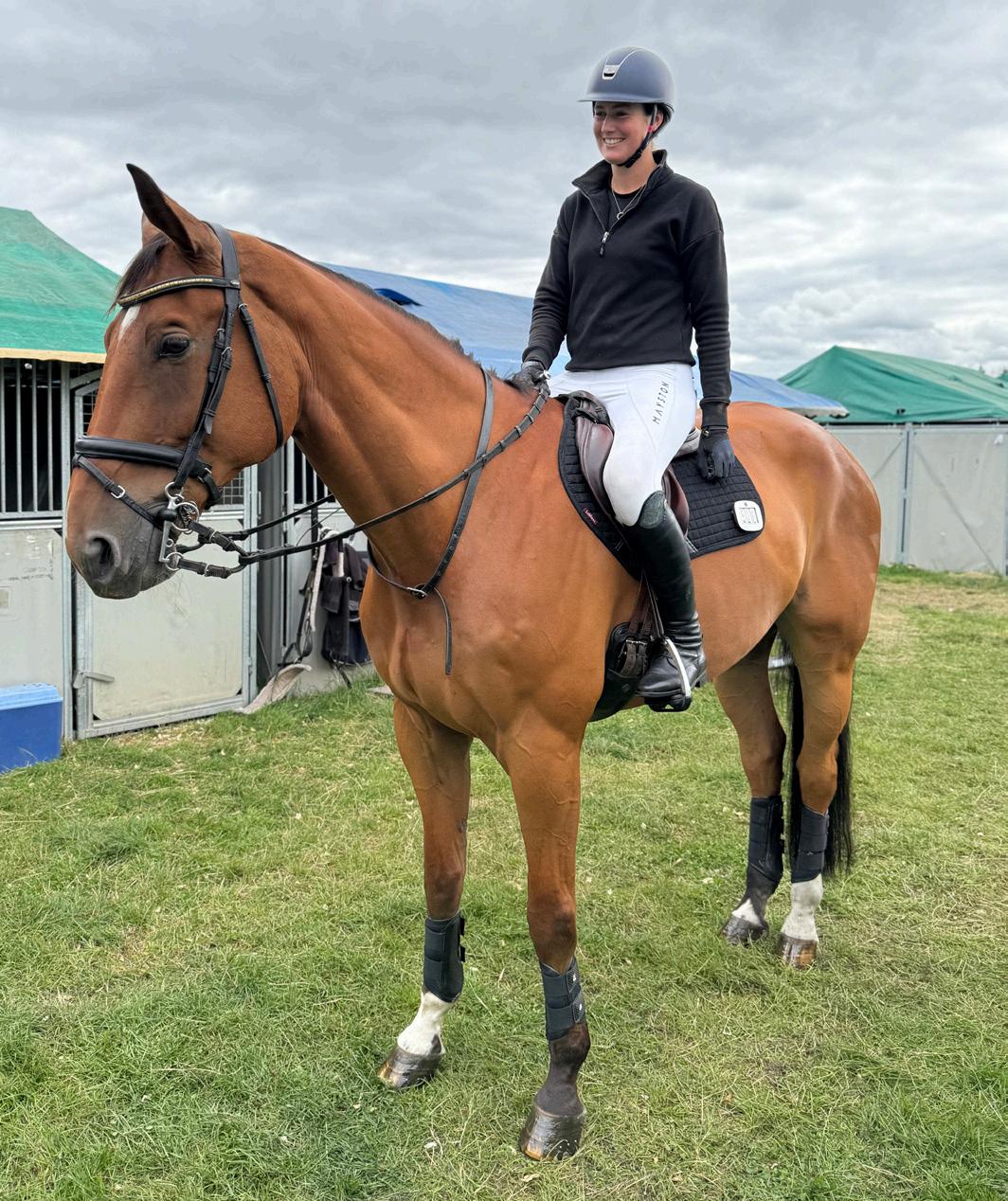
NB: must stop falling off
With the horses being relatively fresh as they came back into work from their winter holidays, it quickly became a running joke that I kept falling off. I mean, it was every week … I’m pretty sure Marie just saw it as a challenge. And obviously I wanted to stop falling off quite so much. We have worked consistently to get my reactive core stronger, which means that I can react quicker, keep in good balance and support the horses as much as I can.
Marie is very patient – I try not to complain too much (but I do), and she is so good at motivating me with exercises which are very much related to the stuff we do on horseback. Plus we get to yap about horses throughout (when I can breathe enough to chat), which is a huge bonus!
water clothes
Having just gone on about how much I’ve improved my core strength so I don’t fall off, you can guess what I did at Aston 4* earlier this month … This time, not only did I fall off, but it was in the water jump too – honestly, the splash was quite impressive. As was the smell of my pond-water clothes as I trudged back to the lorry. Fortunately, Basil was none the wiser – totally a rider error mistake – and we kicked on to absolutely fly round Burgham 4* last weekend. Oh, the ups and downs of eventing!
Next stop for us is Hartpury, which we are all really looking forward to – the horses are feeling on top form, and so am I. I think (I’m not, I’m still aching from Marie’s last session. But I keep telling myself it’s “good pain”). See you on the other side!
‘I
wanted a nice photo. Jimmy had other ideas.’ Image: Jess Rimmer

‘Marie is so patient, and really good at motivating me. Plus we get to yap on about
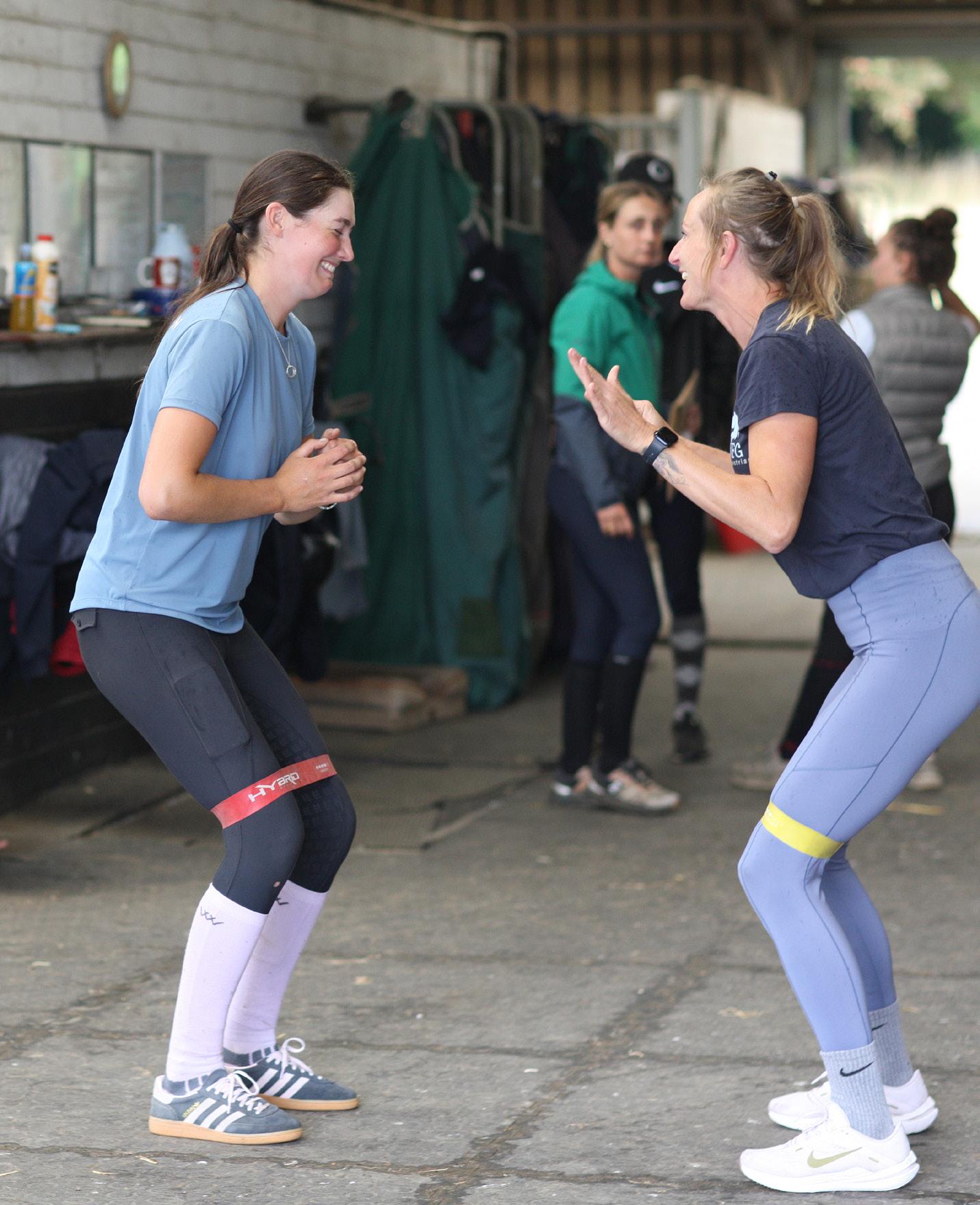


taking things in

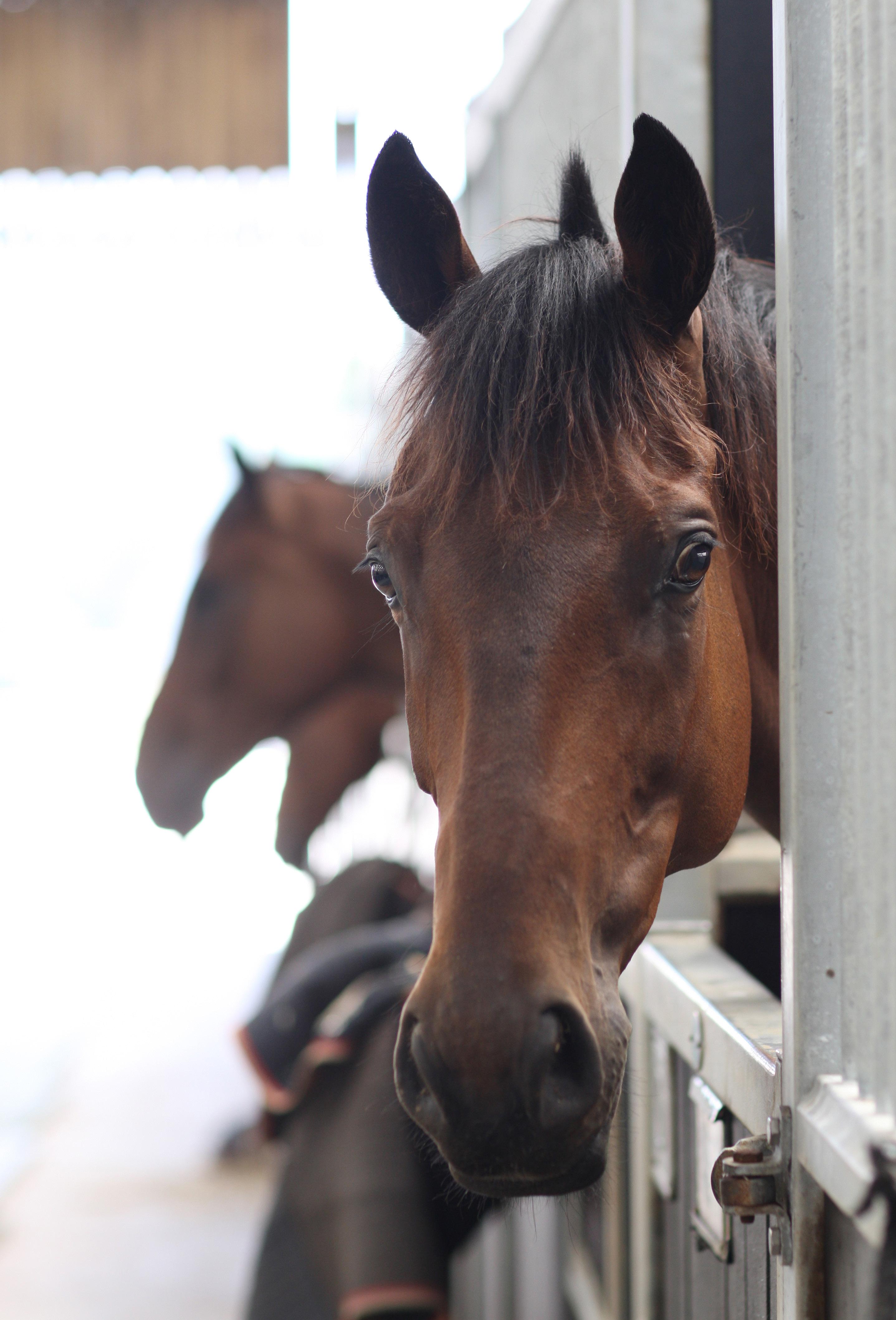
by Courtenay Hitchcock
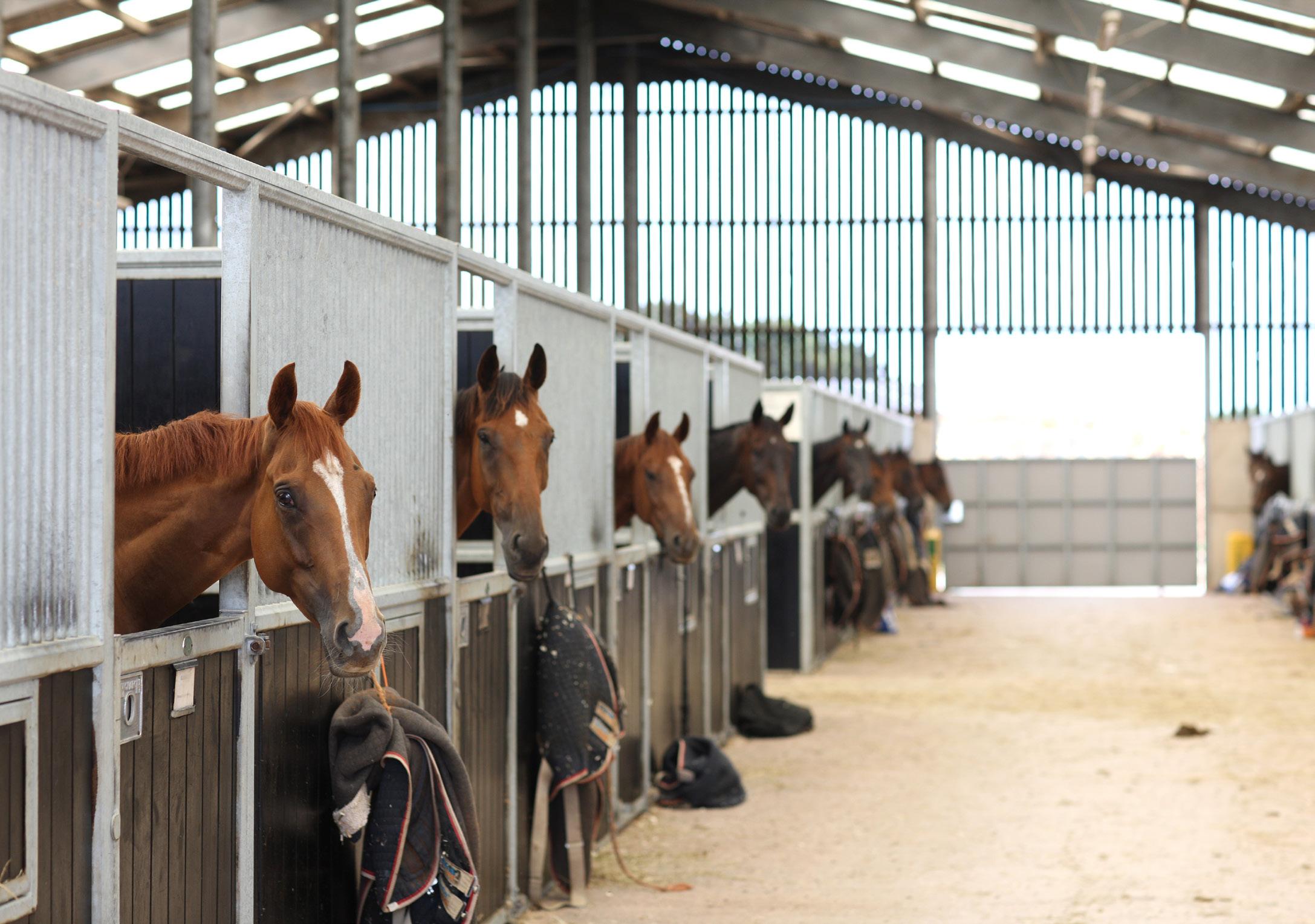
As the new season looms, Tizzard Racing’s Chris Wald returns with updates from the yard, a few sore legs – and a long-overdue open day
It’s been a quiet few weeks at the Tizzard yard –for the horses, at least. After a couple of months turned out in the fields, the string returned on 14th July: refreshed, recharged ... and re-feral. ‘It’s important for them to switch off and just be horses again,’ says Chris. ‘Especially the younger ones – they need that time to grow, mentally as much as physically.’
Since then, it’s been back to the grind: two weeks of roadwork to harden up legs and build fitness the old-fashioned way, followed by the first proper canters last week: ‘They’ve all been up our deep sand gallop now. It rides even deeper when it’s dry, so they soon tire themselves out –I have to say a few of the riders are walking like John Wayne too!’
The work will now ramp up gradually through August. ‘By early September they’ll be doing the full volume of work, just not flat out. Then we’ll start fast work in mid-September, aiming for first runs from mid-October. It’s all grounddependent of course – Chepstow’s usually the unofficial start to the season, but you’re still watching for quick going at that point.’

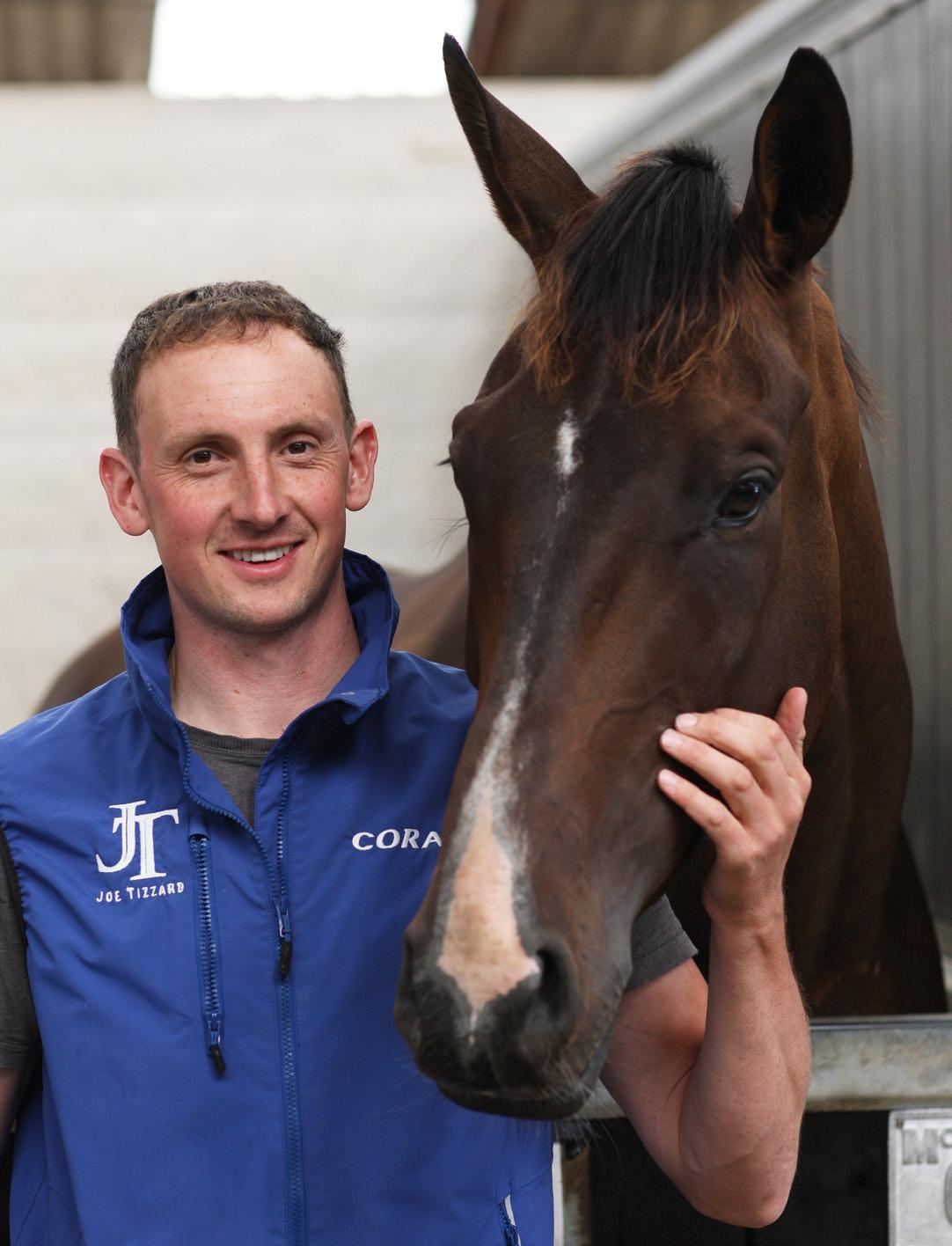


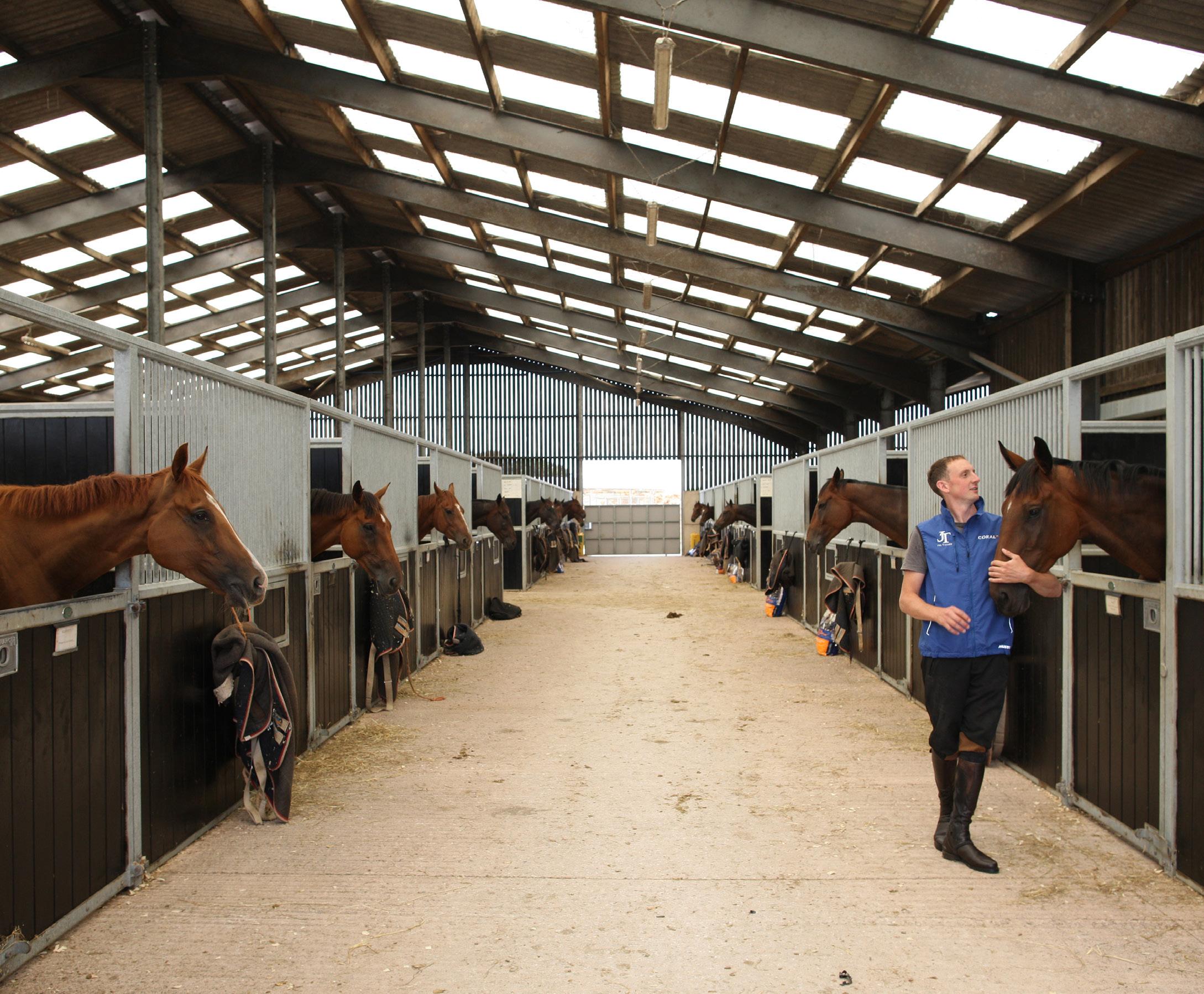
The Tizzard team is coming off the back of a strong season. ‘We had 69 winners last year – up from 45 the year before – and we finished 10th in the trainers’ championship. We’re pleased, but we’re always looking to push on. Racing’s like every sport – it gets more competitive every year. If you stand still, you’re going backwards.’
This month also sees the return of a long-awaited tradition: the Tizzard Racing Open Day, back for the first time since 2018. ‘We’d had a lot of building work after the last one, then Covid hit ... I think we just got out of the habit,’ Chris says. ‘But we’ve talked about doing one for a while, and this year it felt right.’
The event, on Bank Holiday Monday (25th August), will offer the public a chance to explore the yard, meet the team, and watch two parades of horses –featuring a mix of established stars and exciting young prospects. There will also be a raffle, plenty of refreshments and a chance to chat with owners and staff. All proceeds will go to a Type 1 diabetes charity – a cause close to the Tizzard family: Joe’s eldest son was diagnosed last year. ‘He’s only two and a half, so it’s been a tough journey – they’re learning to manage it, but it’s obviously a cause that matters to us all.’
As the new season kicks off,
the team is also on the lookout for new owners – and has five unraced store horses for sale.
‘Joe bought them himself at the store sales – they’re all threeyear-olds, unbroken.
‘Whether you’re new to racing or already involved, we’re always keen to talk to people interested in getting involved, from shared syndicate ownership to buying a horse outright. And it’s not just for the super-rich – our racing club is about £1,400 to join, and around £160 a month.
‘The open day is a good chance for people to come and see what it’s really like.’
With a strong staff team, a full yard and a few sore legs already, the Tizzard 2024/25 season is up and running.
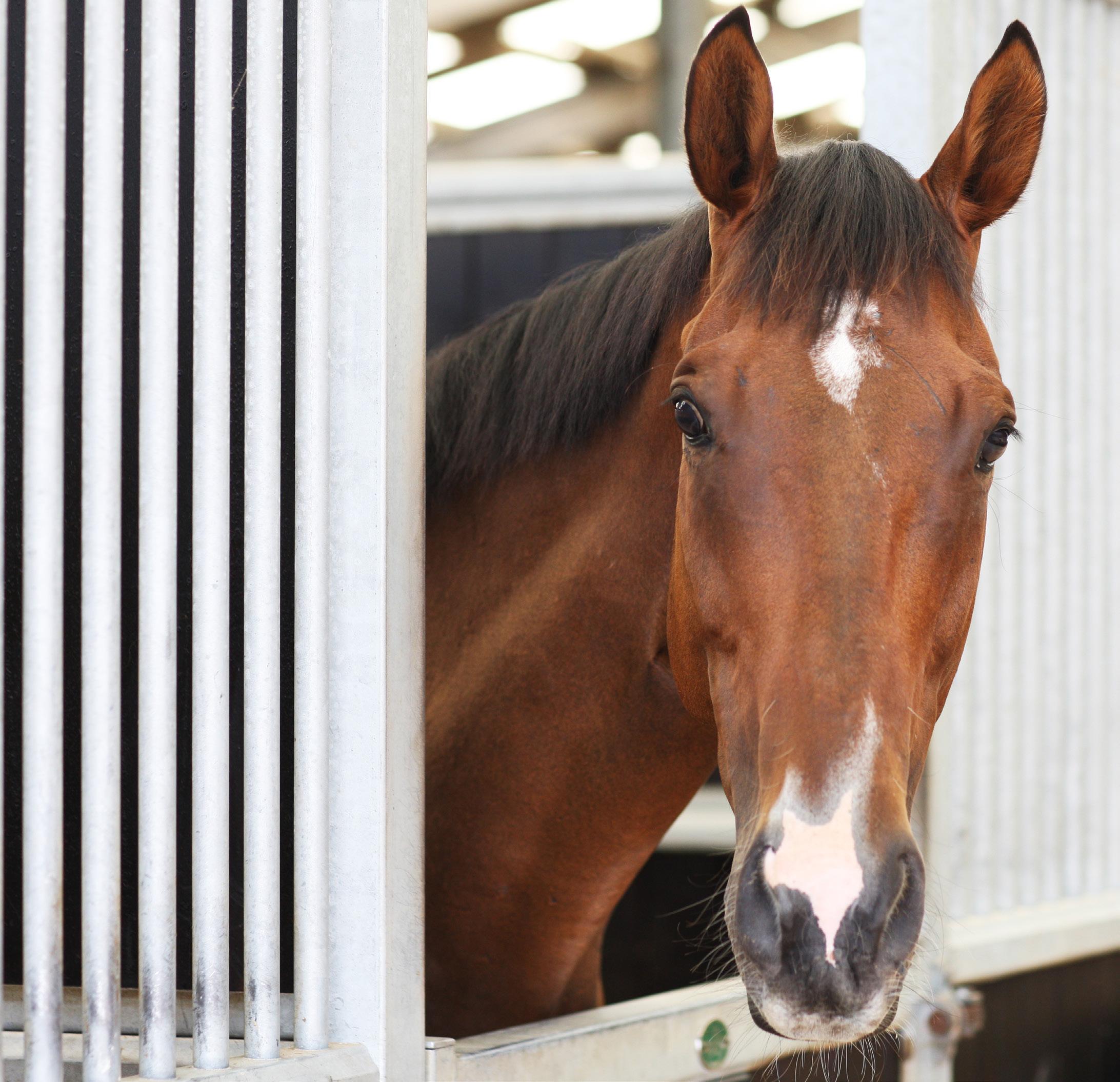



A mare called Nottingham
All images: Courtenay Hitchcock

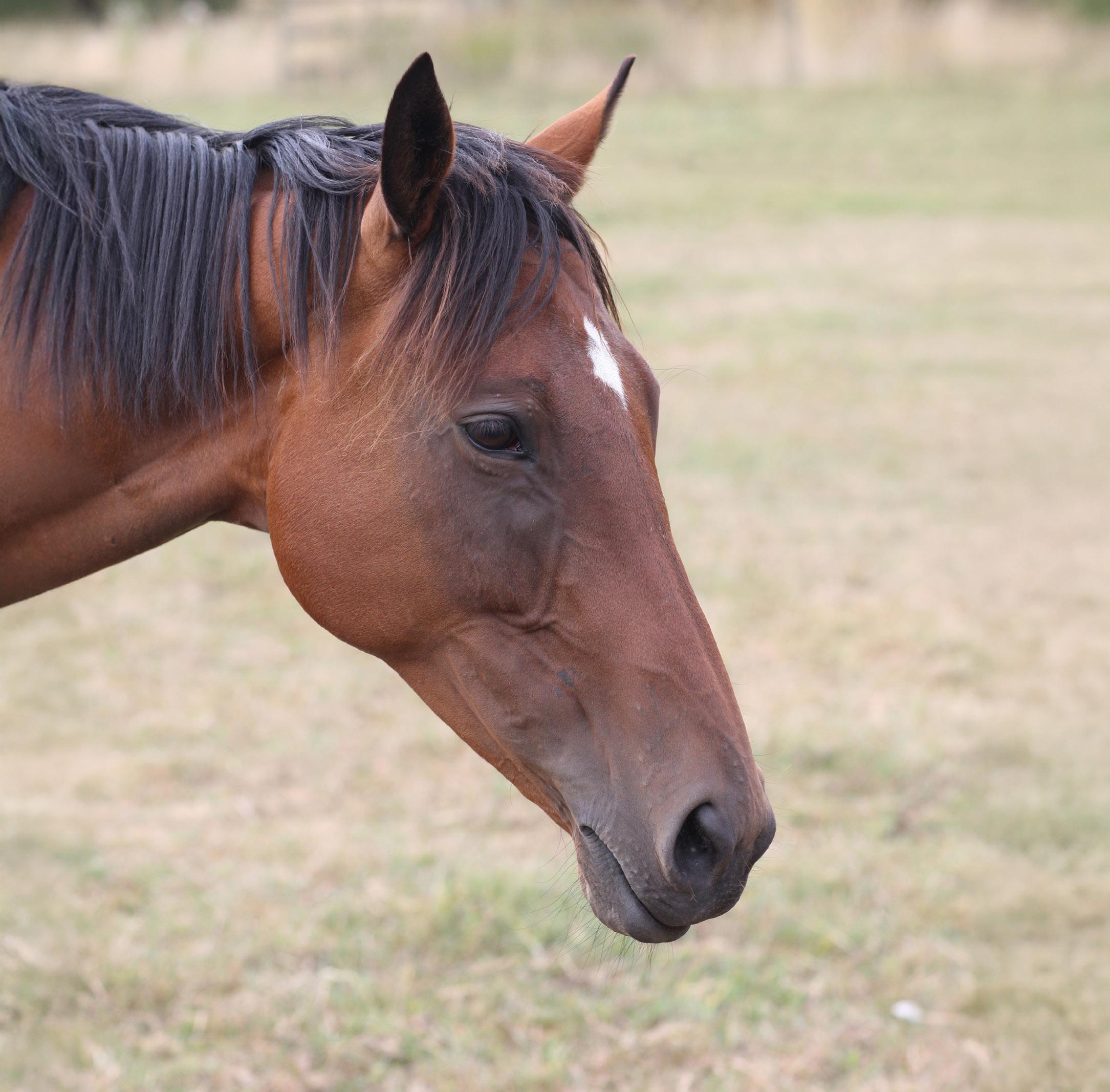
Doug Procter takes us with him from his 3am Dorset start to Tattersalls in search of a mare – and returns with one very special purchase
Tuesday 8th July, and a 3am alarm means I’m in the horsebox and on the road by four. Usually this would mean I’m taking a mare for an early morning cover, but today I’m headed for the Tattersalls July sale in Newmarket (in Suffolk) – with an order from a new owner to buy a mare. The July sale takes place over three days, with broodmares and breeding prospects on the first day, followed by two days of horses in training.
A quirk of this sale is that on the Thursday, selling is split into a morning and evening session ... leaving the afternoon free to go racing at Newmarket’s July Course.
This year’s catalogue comprised 933 lots, but my client wanted an in-foal mare so we only had
to work through the 330 selling on the first day to make a longlist, which I then spent Monday whittling down to a shortlist of 13.
The reason my client wanted an in-foal mare was so they’d have a foal next spring: otherwise, when buying in July, you’d be waiting at least 18 months before you have a foal. It’s much easier working through the list from home now that videos of horses have become standard in the online catalogue.
Most horses are on site for viewing for one or two days before the sale at Tattersalls: I, however, was just going for the day so I needed to be on the sales ground in plenty of time to look at early lots before selling started at 9.30.

The journey up was uneventful: the low early morning sun made Stonehenge look spectacular, but it is a real bore to drive head on into. I had parked up and was walking through the gates just after 8am.
Tattersalls has eight named yards, or paddocks, most of which are comprised of several stable blocks denoted by a letter A to FF. Horses are stabled by consignor, and not in catalogue order – so lot 10 may be at the opposite end of the sales ground from lot 11. Another job on Monday was to highlight my lots on the stabling list at the front of the catalogue, so I could make sure I saw all the horses in any given barn in one go. When you arrive at a chosen lot you tell the staff which horse you want to see – some of the larger consignments have cards listing all their draft and you tick the ones you want to see.
That’s grand, thanks
First of all the horse is stood up for you, you stand into it to gauge the height and walk round to get your first impression. Then you ask to see a walk, side-on, then toward and away from you. The horse is then stood up again for a final look round before it’s “that’s grand, thanks”, the horse goes back in its stable and you write your notes on the catalogue page.
For example, my notes on the first mare I looked at read “plain, mid-size, good walk, light bone, NO”: whereas the second reads “good big mare, good lazy walk, correct, good bone, LIKE!!”
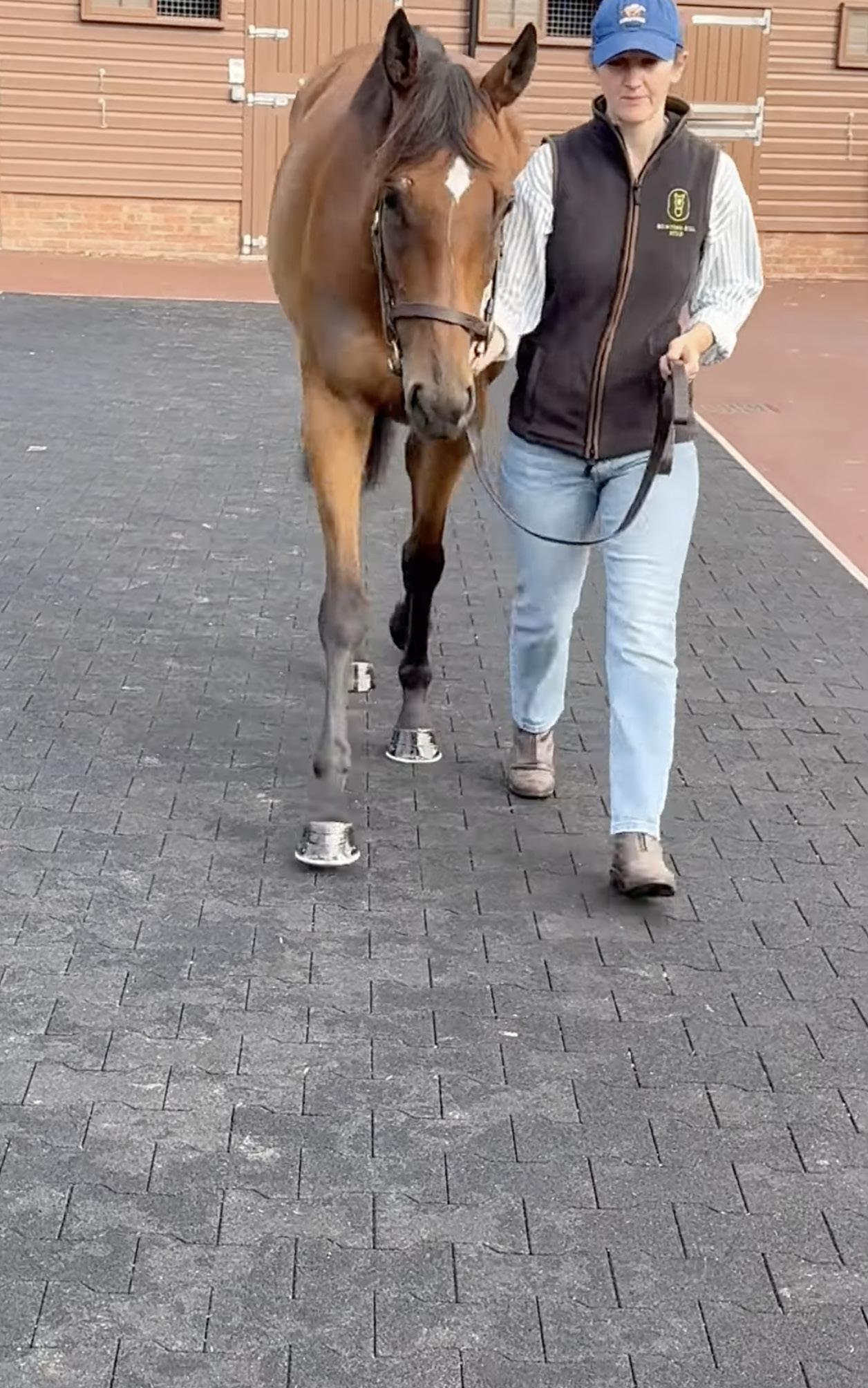
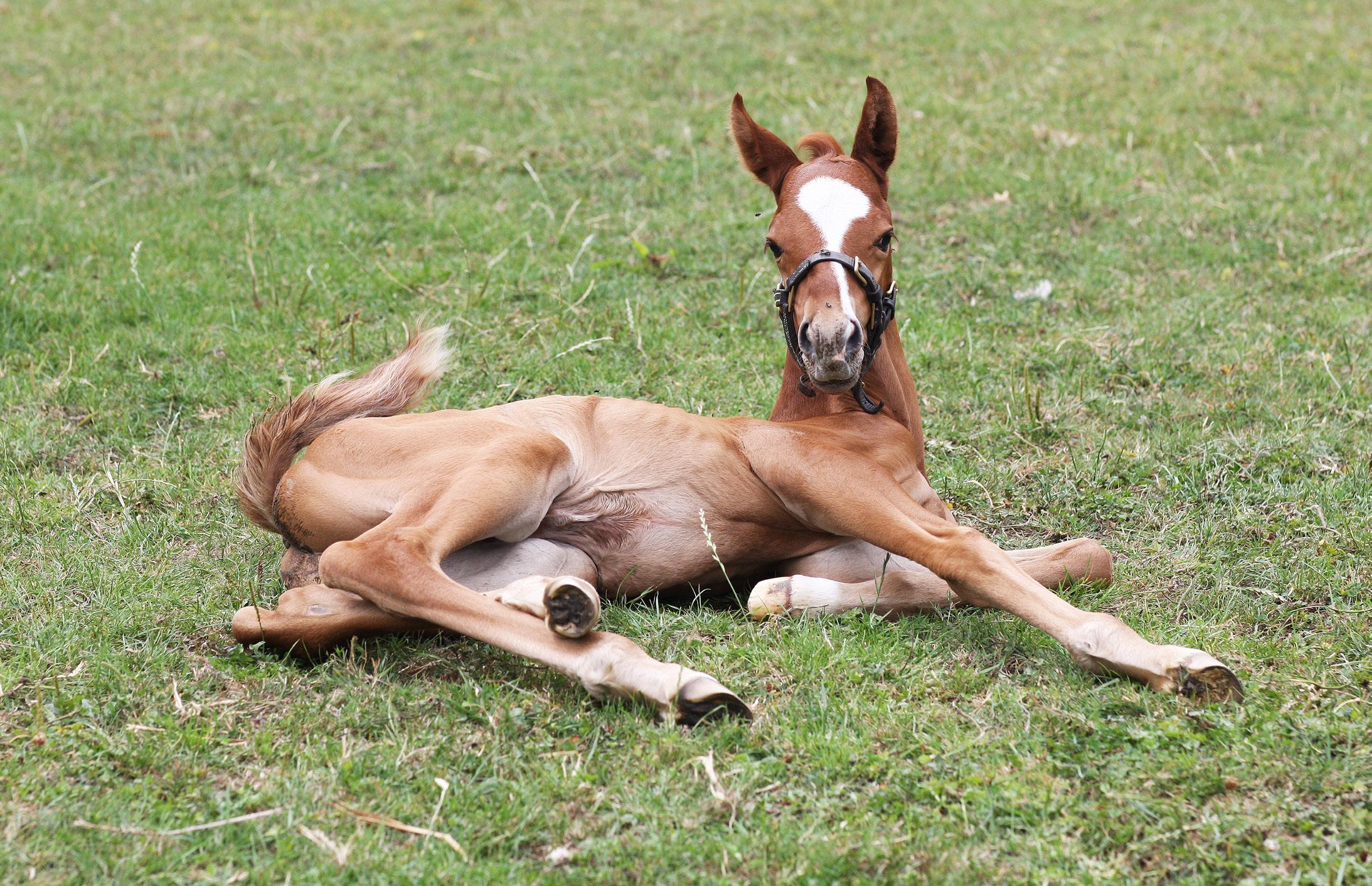


After seeing all 13, I had four mares marked LIKE – one with a single exclamation mark, one with two... and two earned a !!! (my highest score).
I then had to make a call to the client, who was abroad, to discuss and make a plan. The problem was the mare I thought the best was to be the last of the four through the ring, so the question was, should we wait for her? This can be risky –you may pass on a good mare within your budget, only to find the one you’ve waited for sells for too much.
I was firm though: she was second in a Listed race at 2yo, was the best walker and best looking of the four and was in foal to Big Evs, a Group 1-winning first season sire standing at Tally Ho Stud in Ireland. This should make the foal inside her very commercial. We should wait for lot 120: Nottingham. I followed the other three mares through the ring, and all would have been in budget. Had I made a mistake?

Would bidding on lot 120 go beyond the budget?
At Tattersalls they sell in guineas – 1gn equals £1.05 – and VAT is extra. So when your client gives you a budget in pounds you need some quick mental maths to work out your guineas bidding limit and also to factor in VAT if they’re not registered.
Open the bidding
Lot 119 was in the ring and it was time to get the client on the phone and see if we could buy “our” mare.
The hammer fell on lot 119, she was led out and we were on.
“Lot 120, Nottingham, from Hunting Hill Stud. Lovely Athletic Stakes-placed mare by Excelebration, in foal to exciting first-season sire Big Evs. Who’ll give me what, I want…” (That’s probably how the auctioneer started off, it’s always something like that.)
He asked for an ambitious opening bid, quickly dropping down to take 5,000. I knew the reserve was 30,000, so I waited and then caught the auctioneer’s
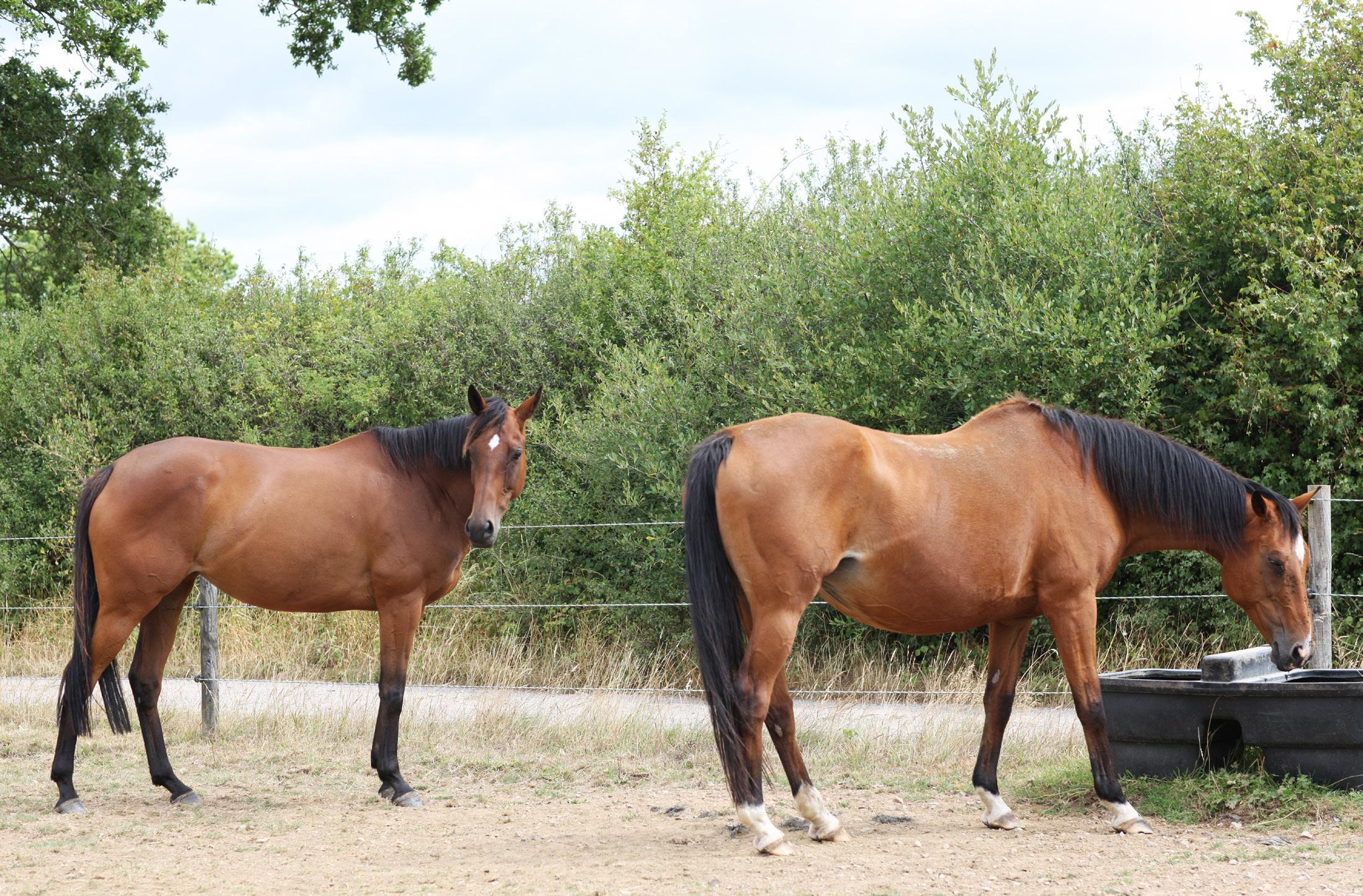
eye with a wave of my catalogue and joined in at 20,000.
“That’s us at 20,” I said into my phone. “Us at 25 ...”
At 30,000 I thought we had her, but the auctioneer worked long and hard to wring another bid of 32,000. I went straight back with 35,000, and after what seemed an eternity the hammer fell. Nottingham was ours!
Homeward bound
I wound up my phone call with a delighted new owner and waited for a member of Tattersalls staff to come over with the sales paperwork. I signed, tucked the green buyer’s copy into my catalogue and set off to the sales office to arrange payment. That done, I headed to barn U to see the mare and chat to the vendors, Conor Quirke and Kathryn Birch, a lovely young couple from Cork in Ireland, followed by a small celebratory beer with them in the back bar. Heading back to the sales office I exchanged my green sheet for the mare’s passport and a pass out, and then moved the horsebox to the loading ramps. I collected Nottingham from her stable and took her down to load: access to the loading ramps is through a gate by the control office. Here they scan a horse’s microchip to make sure it matches the pass out before allowing you through to load. And that was it, I was heading home with TGS’ newest resident.
*Footnote from Lucy: For the first two weeks, all new arrivals are kept in quarantine in a field, with one retired mare for company, before joining the herd. As you can see from the photograph opposite, Notty – as she is now affectionately known – has settled in well with the other mares and we look forward to her foal, and more dreaming, in the spring.




Cheese and onion scones are one of my favourites when I am craving comfort food for lunch. They really are quick to make and are just wonderful fresh from the oven and slathered with cold butter. Perfect with a cup of tea when the British summer isn’t as warm as it should be! Heather x
• 225g self raising flour
• 60g butter (soft)
• 60g caster sugar
• milk
• 200g strong Cheddar cheese (or blue cheese)
• 4 or 5 spring onions
• egg to glaze
1. Line two baking sheets with greaseproof paper and preheat the oven to 180º fan/gas 6.
2. Add the flour and sugar to a large bowl. With your hands, add in the butter and rub it into the flour and sugar mixture. This involves rubbing your fingers together in the butter and flour mixture until the butter is entirely combined and the mixture resembles breadcrumbs.
3. Grate all the cheese and add ¾ of it into the mixture. Slice the root off the spring onions, and then chop them into the mixture too (discarding the top of the leaves). Stir the mixture together until the cheese and onion pieces have been integrated.
4. Pour in a little milk and stir the mixture together with your hands. Continue to add milk a splash at a time until the mixture comes together to form a soft dough (you don’t need to knead the dough).
5. Tip out onto a floured surface. Gently press out the mixture with your hands until it is about an inch thick. Using a cutter (you can just use a knife), cut out the scones and place on the trays.
6. Gently reform the dough and repeat the cutting until all the dough is used up. It should give you six to ten small scones (depending on how big your cutter is). I often make savoury dough into triangles so as to differentiate from sweet scones.
7. Beat the egg in a small bowl with a fork and brush the beaten mix onto the top of the scones. Sprinkle the remaining grated cheese over the top. Bake in the oven for 15 minutes or until golden brown on top.
8. By all means leave them to cool ... but they taste fantastic straight from the oven!

is a special officer for the Guild of Food Writers and has worked in the food industry for 20 years. She is a food
and photographer, offering one-to-one help to local businesses for content and websites.

by Karen Geary, Nutritional

Not quite ... but it’s changing the game, says expert Karen Geary
I’m currently trialling four different AI tools. My background before nutrition was in technology, so I’ve always seen software as an enabler. It feels a lot like the early wave of digital transformation –only now, it’s coming for healthcare.
So, can AI replace me?
It’s a question I hear more and more – and I’ve even asked it of myself. After all, AI can write diet and fitness plans, identify nutrient gaps, summarise research in seconds and calculate macros (though it doesn’t yet access the most accurate food databases). It can explain how magnesium affects sleep and how vitamin C supports iron absorption.
Tasks that used to take practitioners hours can now be completed in seconds.
So: am I obsolete? Not quite. But the ground beneath us is shifting. And frankly – it’s exciting!
The rise of the data-literate client
We are entering an era where clients are no longer passive recipients of advice – we’re becoming data-literate, AI-supported decision-makers. Many are already wearing Oura rings, logging meals in Cronometer, and asking ChatGPT which supplements might help their energy. And that’s a good thing.
Functional nutrition has always emphasised empowerment and root-cause thinking. AI simply accelerates access to that information.
What used to be specialist interest – continuous glucose monitors, gut microbiome tests, HRV tracking – is now becoming mainstream. My clients aren’t just arriving with questions anymore. They’re arriving with data and sensible hypotheses too.
What AI can do well
I use AI daily. It has become my virtual assistant:
• Explaining concepts: From methylation to mitochondrial health, it quickly turns jargon into plain English
• Recipe ideas: Give it a list of allergies, macros, and time limits – et voilà, lunch
• Protocol support: It can suggest food lists, flag nutrient gaps, and cross-reference emerging research
• Time-saving: From draft handouts to generating meeting notes—it’s like having a research assistant on call
Used wisely, it frees up time for deeper, more meaningful conversations with clients.
What it can’t do (and why I still have a job)
Here’s what AI still cannot do:
• Contextual thinking: It can’t notice that your bloating worsens only during business travel, or that your fatigue appeared after grief
• Pattern recognition over time: It won’t link a trail of “unconnected” symptoms across decades or recall what you said six sessions ago
• Emotional nuance: It can’t catch the hesitation in your voice when you say you’re “fine” but clearly aren’t
• Clinical discernment: It can’t distinguish a histamine issue from a trauma loop – or flag that a low FODMAP diet may be unnecessary
• Understanding contraindications: Unless you prompt it with absolute precision, AI lacks context around medications, interactions and medical nuance
And it certainly can’t sit with you while you untangle years of confusing symptoms and selfblame. Nutritional therapy isn’t just data. It’s dialogue. The clues are often in what’s not said –and in the health history you didn’t think mattered, but your practitioner does.
Ethical considerations
As AI becomes more deeply embedded in nutrition, it raises important ethical questions. Data privacy is paramount – AI tools often require access to sensitive health information, which must be handled securely and transparently. There’s also the risk of bias: if training data lacks diversity, recommendations may not be equitable or appropriate for all populations. Transparency is crucial. Practitioners must inform clients if their data (even anonymised) is shared with third-party tools, especially AI platforms. Clients also deserve to understand how AI generates suggestions and be empowered to question them. Addressing these concerns is essential to building trust and ensuring AI enhances, rather than undermines, nutritional care.
The future is a partnership
I don’t think AI will replace nutritionists. I think it will expose poor practice – and elevate good ones. My job now is interpreter, not gatekeeper, helping clients make sense of the flood of information they carry into the clinic.
• Start a health timeline: Record your history –not just diagnoses, but symptoms, stressors and family patterns
• Own your data: Use the NHS app to gather your blood work history, track your wearables and keep records of medications and supplements. Bring data with you to appointments. By all means use AI to try and help you make sense of things, but you need to have the right background to know what you are looking for in order to prompt AI in the right way.
• Use AI ... wisely: It’s great for reflection, learning and ideas. But it’s not a diagnostic tool – and no substitute for personal advice.

• Stay curious, but cautious: AI is only as good as your input. If you don’t know what to ask, you might not like the answer. Take the information with a grain of salt and always fact check.
Final thought
AI is transforming healthcare. But healing still happens in a client-practitioner relationship. ChatGPT can suggest zinc-rich foods, but it can’t assess how well you absorb them. It can summarise biochemical pathways, but it can’t sense what’s missing between the lines. So yes, AI is remarkable. But you – your body, your story, your goals – are more than an algorithm. And for now, at least, I still have a job. And it’s a privilege.



Caring for local families for generations.
Whether your planning ahead with a funeral plan or when a loved one passes away, end-of-life care needs to be dependable, compassionate and ethical. With decades of experience, our trusted funeral services are available whenever you need us on 0800 008 6878. Local to you in:
I l o v e b o r d e r s . A u g u s t
i s t h e b o r d e r b e t w e e n
s u m m e r a n d a u t u m n : i t
i s t h e m o s t b e a u t i f u l
m o n t h I k n o w .
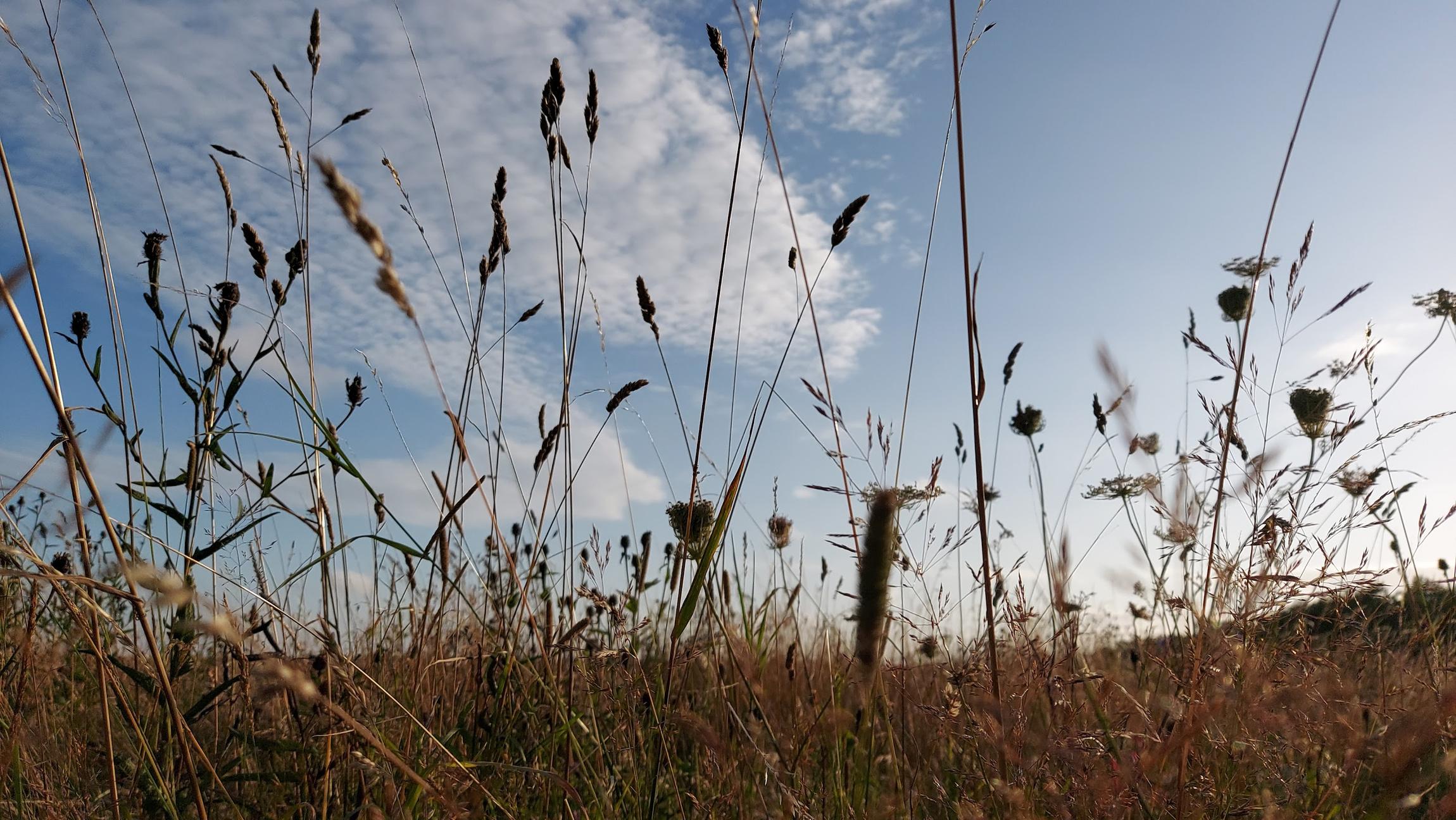
G O T
D o y o u t h i n k a l o c a l ( o r y o u r
o w n ) b u s i n e s s w o u l d m a k e a
g o o d p r o f i l e f e a t u r e ?
K n o w s o m e o n e d o i n g g o o d
t h i n g s t h a t w e s h o u l d t a l k a b o u t ?
S e n d a q u i c k e m a i l t o L a u r a :
e d i t o r @ B V m a g a z i n e . c o . u k
G e t i n t o u c h w i t h C o u r t e n a y t o c h a t
a b o u t w h a t y o u ' r e l o o k i n g f o r - w e ’ r e
a l w a y s k e e n t o t a l k t o l o c a l b u s i n e s s e s
l o o k i n g f o r n e w w a y s t o b u i l d t h e i r
p r o f i l e a n d r e a c h :
a d v e r t i s i n g @ B V m a g a z i n e . c o . u k
0 1 2 5 8 4 7 2 5 7 2
N e x t P u b l i c a t i o n D a t e :
5 S e p t e m b e r t h
( d e a d l i n e 3 0 t h A u g u s t )
T h e B V p u b l i s h e s o n t h e f i r s t F r i d a y o f t h e
m o n t h , a n d t h e a d v e r t i s i n g d e a d l i n e i s
a l w a y s t h e F r i d a y p r i o r t o p u b l i s h i n g